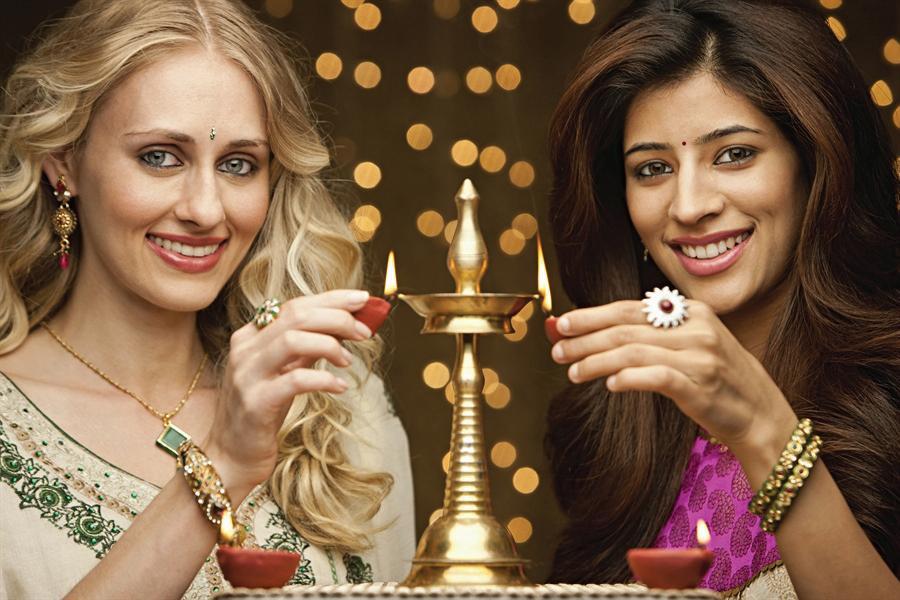

FREE Vol. 11 No. 12 • October 2011 • melb@indianlink.com.au • www.indianlink.com.au MELBOURNE Level 24/44 Market St, Sydney 2000 • GPO Box 108, Sydney 2001 • Ph: 18000 15 8 47 • email: info@indianlink.com.au Sydney • Melbourne • Adelaide • Brisbane • Perth • Canberra Indian Link Radio 24/7 on the net Log on to www.indianlink.com.au Indian Link 24/7 Radio 18000 15 8 47 Shine a light together Diwali 2011

2 <> OCTOBER 2011 INDIAN LINK

OCTOBER 2011 <> 3 INDIAN LINK


4 <> OCTOBER 2011 INDIAN LINK
INDIAN LINK
PUBLISHER
Pawan Luthra
EDITOR
Rajni Anand Luthra
ASSISTANT EDITORS
Sheryl Dixit
MELBOURNE
Preeti Jabbal
CONTRIBUTORS
Preeti Jabbal, Sujith Krishnan, Chitra Sudarshan, Malli Iyer, Thomas E King, Tim Blight, Noel G deSouza, Franky Gerald Fernandes, Ritam Mitra, Rani Jhala, Nancy Jade Althea, LP Ayer
ADVERTISING MANAGER
Vivek Trivedi 02 9262 1766
ADVERTISING ASSISTANT
Nitika Sondhi 02 9279 2004
GRAPHIC DESIGN AND LAYOUT
Melissa Walsh
Indian Link is a fortnightly newspaper published in English. No material, including advertisements designed by Indian Link, maybe reproduced in part or in whole without the written consent of the editor. Opinions carried in Indian Link are those of the writers and not necessarily endorsed by Indian Link. All correspondence should be addressed to
Indian Link
Level 24/44 Market St, Sydney 2000 or GPO Box 108, Sydney 2001
Ph: 02 9279-2004
Fax: 02 9279-2005
Email: info@indianlink.com.au

Beyond the CHOGM ‘snub’
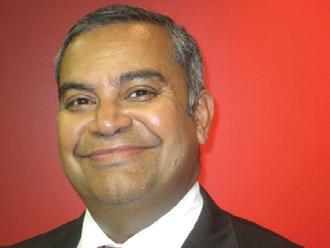
However much it is disguised, India has effectively snubbed Australia over its invitation to attend the Commonwealth Head of Governments meeting in Perth later this month by sending a delegation headed by Mr Hamid Ansari, Vice President of India. A meet which will be attended by the heads of over 50 Commonwealth countries and is to be opened by the Queen herself, is akin to sending a local district cricket team to play in a Test match against Australia in Sydney. The Indian Prime Minister’s decision not to attend was made clear over 10 weeks ago, and can be clearly construed as a sign of discontent within the Indian government over Australia’s reluctance to sell uranium to India.
The current Labor party will not sell uranium to India because of certain conditions. Firstly, the doctrine of the Labor party refuses to accept uranium sales to countries which are not signatories to the Nuclear Test Ban Treaty (NTBT). A change to this decision has to go through the party itself and there seems to be limited urgency to make this happen. Currently the government is in a precarious position both at the polls and the various controversies surrounding it, such as poker reforms, the carbon tax, asylum seekers policy confusion etc. They need another controversial issue like the
BY PAWAN LUTHRA
sale of uranium to a non signatory to NTBT country like a hole in the head! Even if there are rumblings within the government to allow this to happen, the Greens have made their stand clear on the uranium export issue, not only to India, but to any other country. It will be difficult to see this sale gain the traction it needs, considering the Greens’ close hold over the government. So, despite persuasive arguments by Indian diplomats in Australia and mainstream as well as Indian origin writers, it is hard to see the ruling Labor party in Australia moving on this issue for a while.
Meanwhile, the world moves on and India needs to build its allies strategically with a long-term view. The country is already losing its soft diplomacy to China in South East Asia, and has not been able to counter the influence China exerts in countries in the Indian Ocean. Well-known political analyst Christopher Pearson has said, “The ‘String of Pearls’ describes the manifestation of China’s rising geopolitical influence through efforts to increase access to ports and airfields, develop special diplomatic
relationships and modernize military forces that extend from the South China Sea through the Strait of Malacca, across the Indian Ocean, and on to the Persian Gulf.” The term ‘String of Pearls’ was used in an internal United States Department of Defence report titled, ‘Energy Futures in Asia’.
It is of strategic interest for India, Australia and South Africa to look at a means of checking this growing influence of China in the region surrounding it. The USA understands and recognises the play of the dragon; India is also aware of the Chinese cooperation with Pakistan on a number of issues to tame the Indian tiger in its own backyard. Now is the time for India to work with its friends on issues which can have a long term impact in the political scenario within Asia. Australia will sell uranium to India; it is just a matter of time. Meanwhile, ensuring that relationships are maintained at the highest levels is important. A short flight from India to Perth by the Indian Prime Minister for an international summit would have helped progress international cooperation between the two countries. At times, it is important to take a shortterm loss for a long-term gain.
OCTOBER 2011 <> 5 INDIAN LINK www.indianlink.com.au EDITORIAL

6 <> OCTOBER 2011 INDIAN LINK



OCTOBER 2011 <> 7 INDIAN LINK
can help you settle your proper ty within 7 days
We
Get set for Diwali
candles and lights, which can be simple clay ones or the more elaborate traditional or modern options, depending on one’s inclination and budget. Traditional diyas are made of clay with cotton wicks and oil, and are often painted on the outside with colourful motifs. Some people string up rows of fairy lights and hang electric lanterns in their balcony to illuminate their houses.
The concept behind Diwali comes from various versions of an ancient Hindu story. One version popular in north India is about Lord Rama’s return from a twelveyear exile and his people’s celebrations for their beloved hero. His pious and rejoicing citizens decorated their city with candles and lights to welcome him back. In southern India, it is the Goddess Durga’s triumph over Narakasura, the evil demon which is celebrated, as the triumph of good over evil brings back the light of knowledge and truth to mankind.
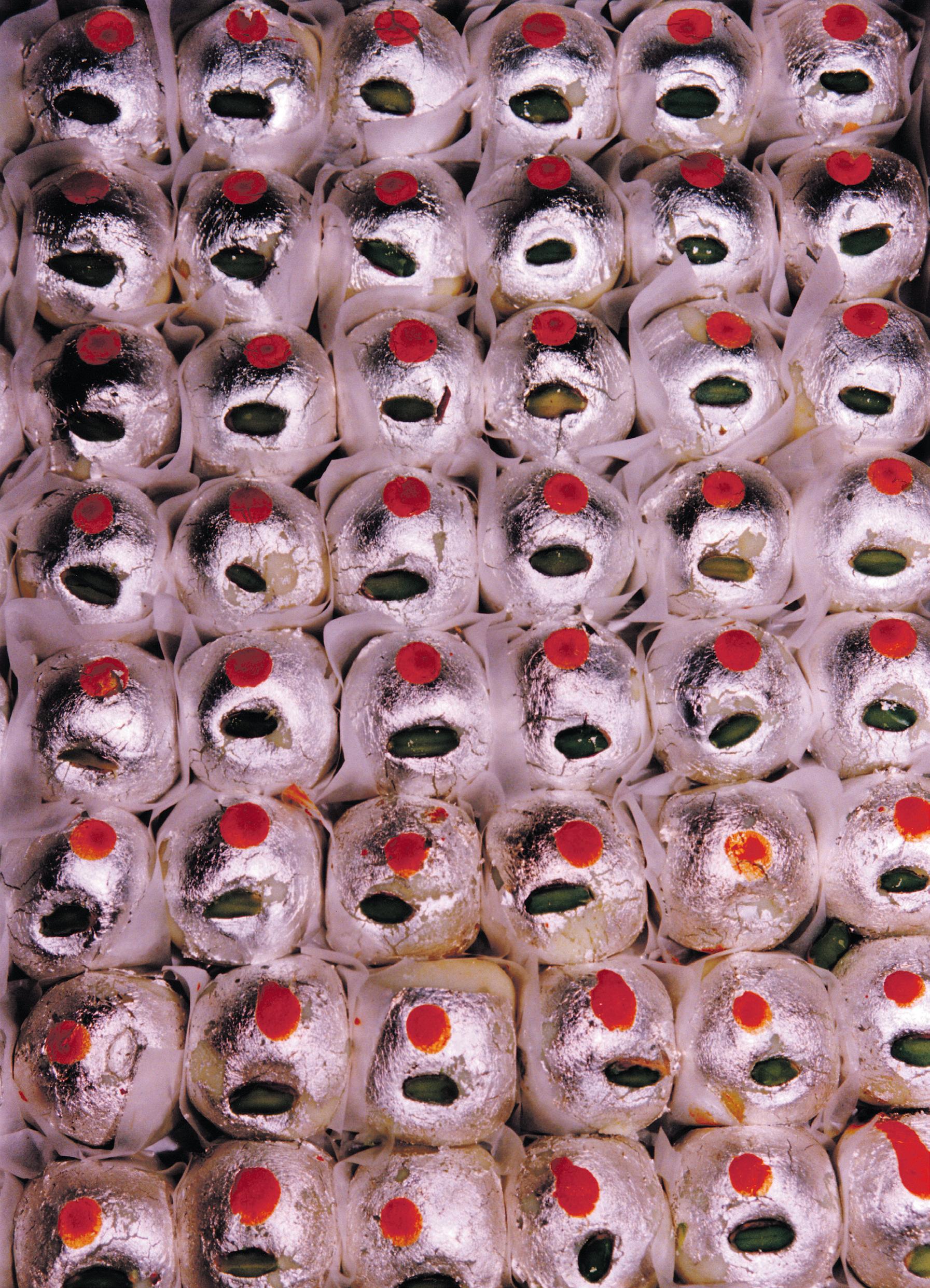
Rangoli
celebrations. No matter how hard we try, Diwali is never quite the same as it used to be in our youth back home, and doubtless our children will think the same when they are adults, regardless of wherever they may be in the world.

But how much do we really know about the symbolism of Diwali (or Deepavali as it is also called)? Let’s refresh our minds with a look at some of the details that go into making the festival traditional, creative and enjoyable.
Diwali is a festival with its roots in many legends and religious accounts. But in essence, it is the significance of light triumphing over darkness, good winning over evil, as well as the awakening of the light within ourselves. Lights and diyas are lit to signify the driving away of darkness and ignorance. The festival has strong social significance as families and their friends gather together to offer poojas, indulge in special food and sweets, and exchange gifts. The goddess Laxmi plays a major role in this festival, as do Ram and Sita. Diwali is celebrated for five continuous days, each with its own significance.
Prior to Diwali, houses and places of business are given a through spring-cleaning or renovated and decorated, with rangoli

of relatives and friends. It’s a time of excitement and fun, anticipation and indulgence, and is shared and enjoyed by adults and children alike.
Lights
Diwali is known as the ‘festival of lights’. Illumination is a significant part of the festival, with lighted diyas bringing brightness, joy and hope. Light is synonymous with dispelling darkness, achieving knowledge in the midst of ignorance, and spreading love amidst hatred. Light signifies goodness in Hinduism, and diyas or deeps (oil lamps) are burned throughout the day and into the night to keep away darkness and evil.
Homes are filled with these oil lamps,
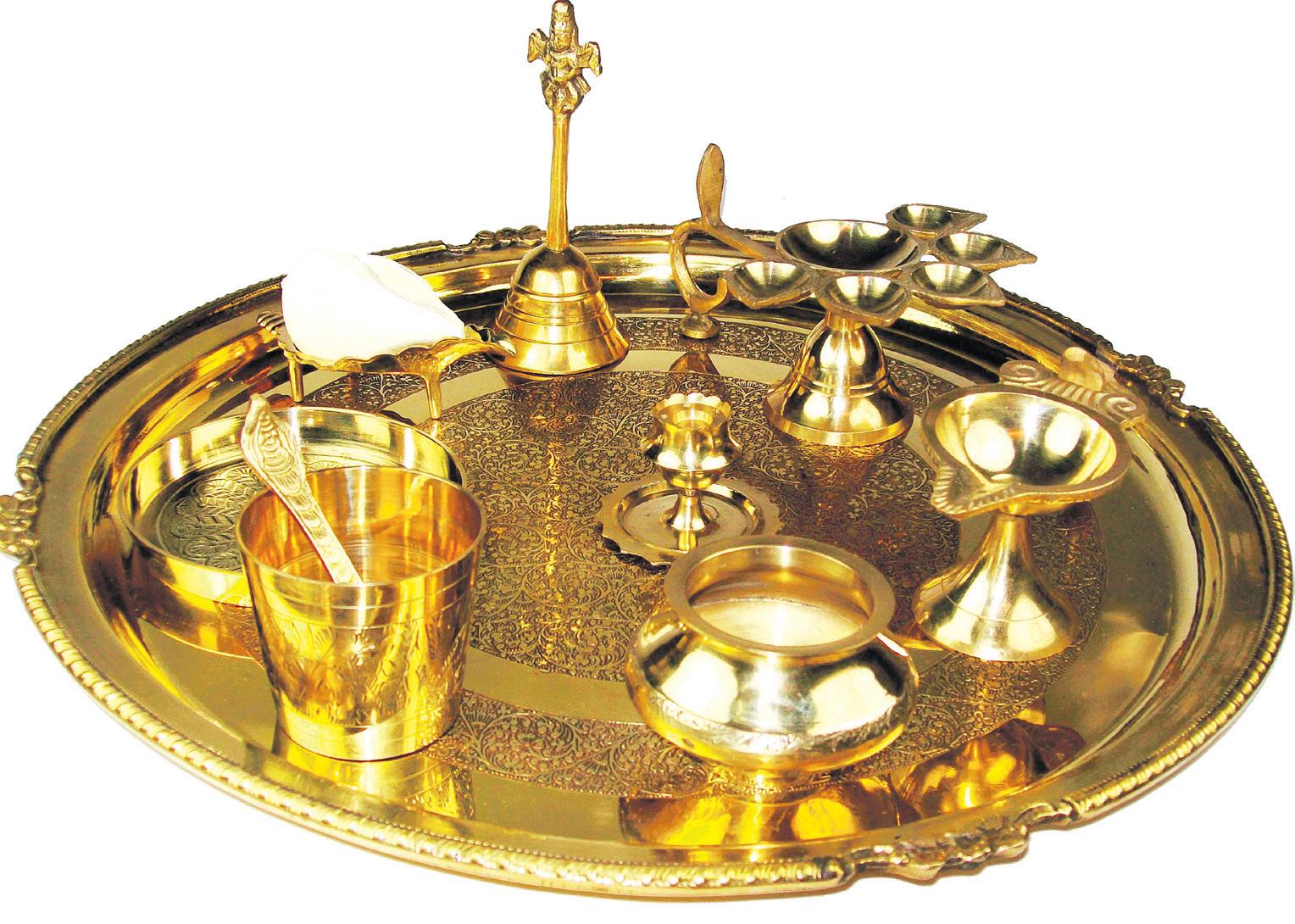
Rangoli is a Hindu folk art, created on a floor or doorway on special festive occasions. The origin of this art can be traced back to the Puranas (Hindu mythological works). In essence, rangoli means a row of colours and is derived from a Sanskrit word which means a creative expression of art through the use of colour. It is assumed that the tradition of rangoli originated in Maharastra and slowly disseminated to other parts of India. Also known as kolam in South India, chowkpurana in northern India, madana in Rajasthan, aripana in Bihar, alpana in Bengal, the colours and designs of rangoli are wondrous to behold. In a rangoli, powdered colours are sprinkled on cleaned and dusted floors to form decorations which can be vivid, three-dimensional art complete with shadings or the traditionally beautiful twodimensional designs. The coloured powder is usually applied ‘freehand’ by letting it run from the gap formed by pinching the thumb and the forefinger.
According to a legend recorded in Chitra Lakshana, the earliest treatise on Indian painting, a king and his kingdom were steeped in sorrow at the death of the high priest’s son. Everybody prayed to Lord Brahma, who moved by the prayers, asked the king to paint a portrait of the boy on the floor so that he could breathe life into it. And with that the art of floor painting came to life. And that is how rice, flour and flowers were transformed into picturesque offerings to God in the form of floor painting. In Indian culture guests and visitors are special, and rangoli is both a form of welcome and an expression of warm hospitality. Diwali in particular, sees the best forms of rangoli, as people visit each other to exchange greetings and sweets. This amazing art of floor painting which reflects regional beliefs and aesthetics
8 <> OCTOBER 2011 INDIAN LINK
COVERSTORY
based on a common spiritual plane, has survived all influences and continues to transmit the spirit of Indian life.

Diwali Pooja
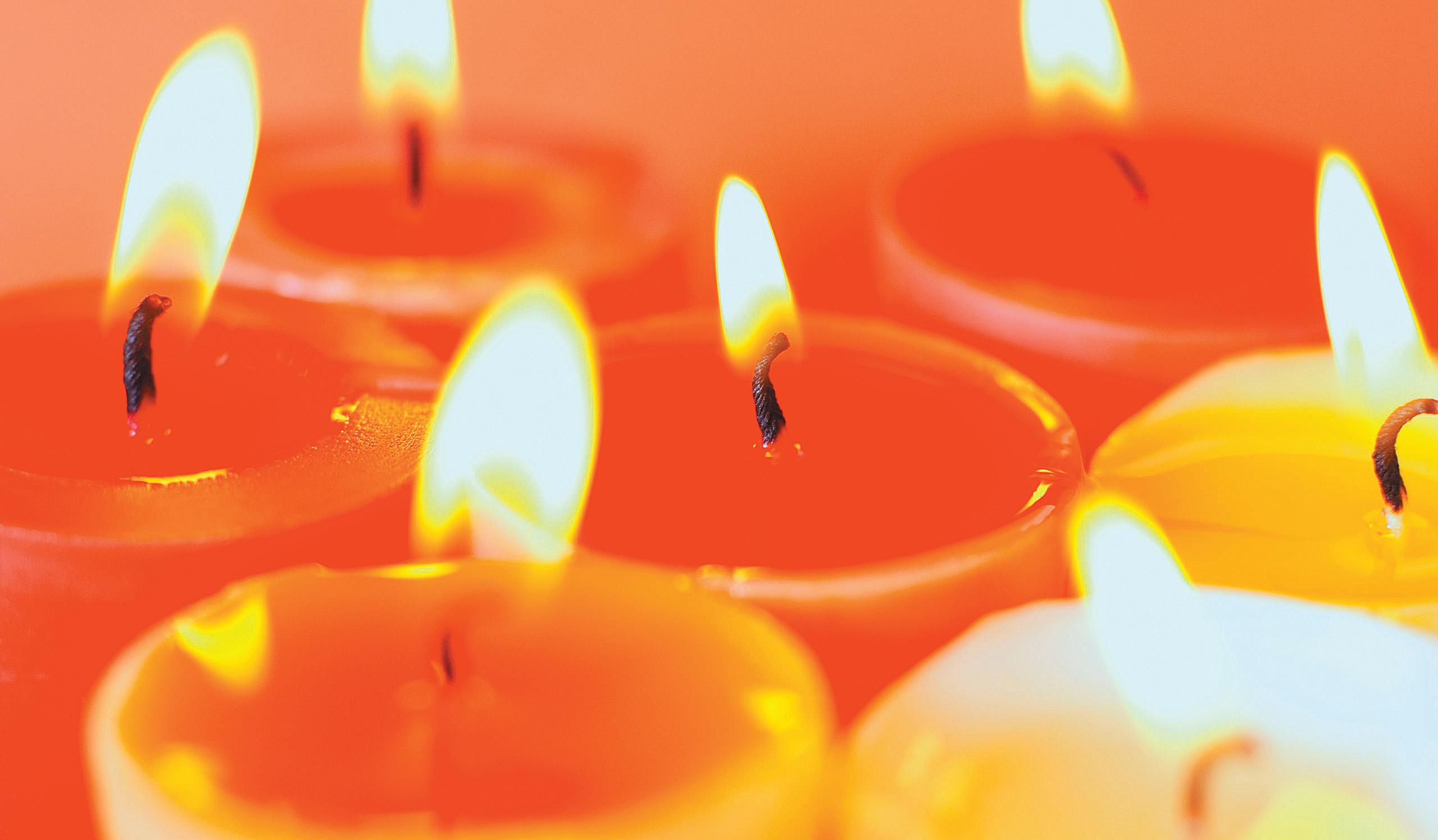
Diwali is celebrated on the first day of the lunar Kartika month, which comes in the month of October or November. Diwali marks the end of the harvest season in most of India. Farmers are thankful for the plentiful bounty of the year gone by, and pray for a good harvest for the year to come. Prior to Diwali the house is kept clean and rangoli is drawn at the doorstep to welcome Goddess Laxmi. For the best time to conduct the traditional pooja, a pandit is consulted. The general items required for a Diwali puja are silver and gold coins, suparis, uncooked rice, paan leaves, kumkum for applying tilak, mithaai (Indian sweets), camphor, agarbattis (incense sticks), nuts flower petals and LakshmiGanesh icons.
Diwali pooja is performed in the evenings when tiny diyas of clay are lit to drive away the shadows of evil spirits. Bhajans are sung in praise of the goddess and sweets are offered to her. The pooja can also consist of a combined one for five deities: Ganesha is worshipped at the beginning of every auspicious act as Vighnaharta; the Goddess Lakshmi is worshipped in her three forms Mahalakshmi, the goddess of wealth and money, Mahasaraswati, the goddess of books and learning and Mahakali. Kuber, the treasurer of the gods is also worshipped. The deity of Lakshmi symbolizes wealth and prosperity, and her blessings are invoked for a good year ahead.
Fireworks
Diwali is not complete without its compliment of fireworks. A dazzling array of sparklers, catherine wheels, rockets, rows of crackers, anaars and mock bombs light up the night sky in a riot of colour and noise. However, in modern times, in an attempt to curb pollution from these fireworks, a common community display is becoming increasingly popular.
The lighting of firecrackers is in keeping with the concept of dispelling darkness, and the excitement, noise and decorative display that accompanies the festival is just another way of enjoying a special occasion. After all, the young and old alike love the splendour and sparkle of fireworks, although we could do with less of the noise.

The giving of gifts
Diwali is the most celebrated festival in India, and subsequently the time when shopping is at its peak. Diwali is associated with prosperity, so the tradition of exchanging gifts is accepted and encouraged. People splurge and indulge themselves and their loved ones as they celebrate Diwali. The motive behind exchanging gifts is to accentuate the feeling of love and brotherhood among family
as they reflect the religious theme of the festival.

In the past, people traditionally used to exchange simple items such as homemade sweets, farm produce or decorations made at home, with their family and friends. However, we live in modern times and today people attach considerable significance to the price of the gifts they give and receive. In fact, it is considered socially mandatory to exchange gifts with not just family and friends but neighbours, colleagues and business associates. Naturally, this tradition has been exploited by clever marketing, and product launches or attractive schemes are now available to people in the hope that they will spend during Diwali. Gifts that are exchanged could range from electronic items to jewellery, artefacts, or even sweets like stylishly decorated boxes and hampers of dry fruits, nuts, sweets, chocolates, etc.
winners can be pleased with their earnings, the losers will wait for the next Diwali to get even.
The tradition of gambling on Diwali is steeped in legend, and it is believed that on this day, the Goddess Parvati played dice with her husband Lord Shiva and she decreed that whosoever gambled on Diwali night would prosper throughout the ensuing year. This tradition of playing cards - flush and rummy with stakes - on this particular day continues enthusiastically even today. Needless to say, casinos and local gambling houses do brisk business during the Diwali week, and in most homes, friends and relatives are invited over to play cards.
And finally, let’s remember that central to Hindu philosophy is the assertion that there is something beyond the physical body and mind which is pure, infinite, and eternal, called the Atman. Deepavali is the celebration of this inner light which awakens the individual to their true nature and transcendent reality. With the realization of the Atman comes universal compassion, love, and the awareness of the oneness of all things (higher knowledge). This brings Ananda (Inner Joy or Peace). And while the story and traditions behind Diwali vary from region to region, the essence is the same - to rejoice in the Inner Light (Atman) or the underlying reality of all things (Brahman).

OCTOBER 2011 <> 9 INDIAN LINK
www.indianlink.com.au
Diwali: Seeing the light within ourselves
An ancient Hindu festival is now marked all over the world
BY MALLI IYER
If there ever was a festival that stood for righteousness, enjoyment and good, clean family fun, it would have to be Diwali, or Deepavali as it is also known.
No less than 2 billion people of Indian/ Asian origin scattered across all corners of the world celebrate the Festival of Lights. Whilst the festive season and dates of the festival rarely deviate from the original Hindu calendar – two days on either side of the new moon day in the month of Kartika – the celebrations over five days symbolise the devotion to animal preservation, new beginnings by banishment of evil, and promoting family togetherness. The reasons for celebration vary, although the most common rituals include spring cleaning the home environment, lighting lamps and letting off crackers to create brightness as the new moon (Amaavasya) day has all-pervading darkness at night.
Fireworks are associated with the celebrations, and the creation and distribution of sweets and culinary delicacies reaches its climax during the festival.
The Festival of Lights, in essence, is universally a celebration of light over darkness, ie, of good over evil, and of knowledge over ignorance. At the same time, it also stands for seeing the light in our own selves –vanquishing the darkness within us, and allowing the goodness in us to reach out to others around us.
Diwali worldwide
Deepavali is celebrated in over 30 countries – Nepal, Fiji, Malaysia, Singapore, South Africa, USA, Canada, Australia, United Kingdom, Trinidad & Tobago, Guyana, Barbados, Sri Lanka, Gulf States in the Middle East – Dubai, Abu Dhabi, Oman, Qatar, Bahrain, Sharjah,Yemen, Indonesia, Mauritius, Thailand, Japan, Kenya, Uganda, Tanzania, Myanmar, Suriname, Zambia and New Zealand, Pakistan and Afghanistan. Several of them observe this as a public holiday. The House of Commons in the UK is decorated with lights, as are State and Federal Government buildings in most South Asian nations. In Australia the state government of Victoria has endeared itself to the Indian community by celebrating the festival at one of Melbourne’s most iconic venues, Federation Square. The NSW Parliament celebrates promotion of equality, mutual respect and
social harmony by lighting up the exterior of the state’s Parliament House. The festival is marked at the Federal Parliament in Canberra as well.
In Japan, Deepavali is celebrated by lighting paper made lanterns of different colours in their orchards and gardens. In Fiji, soccer tournaments are organized for the festival and there is widespread belief that eating fish after celebrations will bring them good luck.
Canada celebrates the festival by organizing a beauty contest and the winner is named Diwali Queen.
Malaysia calls the festival Hari Deepavali as it almost coincides with Hari Raya Aidilfitri (a Muslim Eid festival).
In Nepal, Deepavali is known as ‘Tihar’ or ‘Swanti’ and cows are worshipped on day 1, whereas dogs are revered as the ‘vahana’ of Bhairava on day 2.
In Thailand, Deepavali is celebrated by the name of Lam Kriyongh and oil lamps made from banana leaves are set afloat down the many rivers in the country.
In Sri Lanka there is a tradition of Deepavali to make toys out of crystal sugar (Mishri) instead of sweets.
In many parts of North America, the festival features east Indian folk theatre, skits and plays. Some areas celebrate with folk dances from Rajasthan, Punjab, Odissi and Bharata Natyam. Some even sing qawwalis and perform tribal dances.
The Festival of Lights, in essence, is universally a celebration of light over darkness, ie, of good over evil, and of knowledge over ignorance. At the same time, it also stands for seeing the light in our own selves –vanquishing the darkness within us, and allowing the goodness in us to reach out to others around us.
In the Caribbean Islands, Trinidad and Tobago celebrate the festival at Diwali Nagar – en enclave created by the IndoTrinidadians which lasts a week and a national holiday is also declared. There is enthusiastic participation by Indo-Trinidadians and AfroTrinidadians.
Guyana, which has an Indian diaspora of just under a million, follows a similar pattern. The spirit of togetherness is celebrated by wearing colourful costumes and a carnival like atmosphere is created.
In the UK, at Leicester City’s golden mile of curry houses, the community has the biggest celebrations outside Asia with over 6500 lights and fireworks at night.
Traditions of Diwali
In several parts of western India, the festival heralds the arrival of the Hindu New Year and the merchant community in India start a new accounting year on Deepavali.
In Punjab and all over North India, people resort to gambling and playing cards. The Kailash temple in Ellora has a sculpture that symbolises Lord Shiva and Parvati
playing a game of dice. Some people believe that if they don’t gamble on the day of Deepavali, they will be reborn as donkeys!
Firecrackers and fireworks are an essential element of Diwali night. A scientific explanation for bursting crackers is that after the monsoon in India the mosquitoes and pests multiply in huge numbers and cause diseases. Although smoke and noise
The mythology behind Diwali
Deepavali legends abound in Indian mythology and history.

• The countrywide belief is that Goddess Lakshmi was born on this day after the churning of the milky ocean by the Asuras and Devas for Amrit (the nectar of immortality). Goddess Lakshmi is also known as the daughter of the Milky Ocean.
• In the east though, Goddess Shakti’s emergence as Shyama Kali or “Kaal Bhaya Naasini” is generally believed to be the cause of celebration. Shakti’s killing spree of demons (and consequent decorating of herself with a garland of skulls) destroyed evil and helped protect heaven as well as earth from cruelty.
• Lord Vishnu’s rescuing of Sri Mahalakshmi from the clutches of King Mahabali in his Vamana Avatara incarnation is legendary. Mahabali was banished to rule the kingdom of Patala under the oceans after this.
• Lord Rama’s victorious return to Ayodhya after conquering Ravana is now established as 5075 B.C. which makes the first known Deepavali celebration over 7000 years ago. Sage Valmiki who was an astronomer has accurately written about the life and times of Lord Rama and the
pollution are unnecessary legacies of Diwali crackers, the sulphur dioxide released in the atmosphere kills the harmful pests. It can be safely concluded that Deepavali celebrations on a global basis and particularly in India, serve to emphasise a new beginning, communal harmony and a rejuvenation of family values.
planetary positions described by him has been checked and validated by computer experts.
• Bhudevi in her incarnation as Satyabhama and wife of Lord Krishna killed her own son, the demon Narakasura as per his wish. Narakasura apparently wished that his death should be celebrated by people by lighting lamps and brightening the city which is how Deepavali became a festival.
• The return of Pandavas to Hastinapura after 12 years in exile after they lost to their evil cousins the Kauravans in a game of dice, is also considered to be a reason to celebrate Deepavali.
• The coronation of King Vikramaditya in 56 B.C. after his victory over the Saka Kings is seen by historians as one of the reasons for celebrating Diwali.
• The Jains in India see Deepavali as an occasion to mark the attainment of Nirvana by Vardhaman Mahavira in 527 B.C.

• Sikhs celebrate it as the day of release of Guru Har Gobind Ji and the laying of the foundation stone of Har Mandir Saheb (the Golden Temple in Amritsar) in 1577.
• Arya Samaj followers celebrate it as Nirvana attainment by Swami Dayananda Saraswati in 1875.
10 <> OCTOBER 2011 INDIAN LINK
COVERSTORY www.indianlink.com.au
US President Barack Obama brought Diwali to the White House for the first time in 2009

OCTOBER 2011 <> 11 INDIAN LINK
HC tackles community issues with
diplomacy
BY PREETI JABBAL
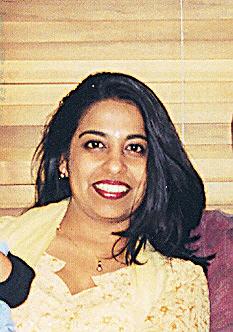
A recent visit to Melbourne enabled Mrs. Sujatha Singh, High Commissioner of India to interact with members of the Indian community. The event was held at the Indian Consulate in St. Kilda as part of her effort to facilitate communication and discussion on issues that affect the community. Welcoming the High Commissioner to Melbourne, newly appointed Consul General Dr Subhakanta Behera expressed his appreciation for her keen interest in seeking cooperation from the community. The wide range of topics discussed included political and economic cooperation, trade and investment promotion, cultural interaction, press and media liaison, and scientific cooperation in bilateral and multilateral contexts.

The first speaker for the day was Vasan Srinivasan, President of Federation of Indian Associations of Victoria (FIAV). He outlined all the efforts that have been made recently to unite the community under a single banner. He cited the example of the newly formed Federation of Indian Music and Dance Victoria (FIMDV) Association and the unity march during Australia Day celebrations. Mr Srinivasan also commended the Indian Consulate’s active and supportive involvement with the community. Ravi Bhatia CEO of Primus Telecom voiced similar sentiments, acknowledging the commendable work done previously by Ms. Anita Nayar during her tenure as the Consul General, and her successor Dr. Behera who arrived in Melbourne a few months ago. “Mr. Behera’s accessibility, affability and easy engagement makes us feel that he has been here much longer than four months,” said Mr. Bhatia.
Dr. Gurdip Aurora, President of Australia India Society of Victoria (AISV) received tremendous support from the audience for his suggestion that the Indian community should work together towards a common goal of helping the community and those less fortunate, rather than chasing individual
What’s On
Children’s yoga competition
13 November, 9:30pm onwards at Mulgrave Neighbourhood House, 36-42 Mackie Road, Mulgrave, VIC 3170. Children’s Yoga competition by Vasudeva Kriya Yoga. Certificates will be awarded to all participants and chosen demonstrations will be uploaded onto YouTube. If interested, please register your interest at vasudevakriyayoga@gmail. com or call Sumana on 0434 867609, or Shripriya on 0435 313034 by 30th October.
Theatre night
Saturday, 15 October, 7pm onwards at 201 Gisborne Melton Road. Sohamasmi Centre for Performing Arts presents a theater night at Bundaleer, with two world-
glory. “If we work together to find a solution to the issues that are currently facing us, then we can project ourselves in a much stronger way both within our community and the wider Australian community,” he said. Dr. Aurora also received encouraging applause for his plea that Indians in Australia should get dual citizenship. “I want to be able to vote and be part of the solution to all the issues that India faces rather than just reading about it in newspapers and not being able to contribute actively,” he said.
“With over 20 newspapers in Melbourne and many more in the making, we are running short of news,” claimed Neeraj Nanda, editor of South Asia Times. Mr. Nanda had a few issues to raise with the HC including the exorbitant cost and cumbersome procedures involved in surrendering old Indian passports. He suggested that besides the local input from the Indian Consulate and officials in Melbourne, the media should be provided regular news from the High Commissioner’s office in Canberra as well. “Being a media person I am always critical,” said Mr Nanda. “This is what I have learnt from my media experience and education, that negative things always make more news. I have a list of issues that I wish to discuss, you could call them ‘hiccups’ or whatever you like but we need to work towards overcoming them,” he said, listing several concerns.
Professor Suresh Kumar Bhargava from the Science, Engineering and Health Department of RMIT University appreciated Mrs. Singh’s participation in all the important events related to the Indian community. He expressed his delight at Vice Consul Rakesh Kawra’s initiative to send community notice emails outlining information about all events that are scheduled in and around Melbourne. “This keeps everyone informed and involved with the community,” said Professor Bhargava. Rakesh Kawra, Vice Consul of India in Melbourne was definitely the man of the event as accolades for his work poured in from all directions. Every nominated speaker and several members from the audience appreciated his approachability and willingness to help the community.
contributing to community welfare.
Among other speakers Dr. Manjula O’Connor (AISV) and Sukhwinder Singh from Craigieburn Gurudwara lamented the increase in domestic violence within the community. They requested the HC to financially support their efforts in helping victims of domestic violence. Mr. Singh also discussed the plight of international students who die in Australia due to unnatural reasons like accidents, suicides etc. According to him, “Earlier, it was difficult to fund the funeral and other related expenses; however of late with the assistance of the Indian consulate, TAC and the Victorian government, the situation has improved.”
The High Commissioner attempted to single out and reply to almost every concern raised, with tact and diplomacy. With the expensive passport fees she pointed out how India is unfortunately surrounded by a hostile and troubled neighbourhood. “The process of relinquishing your Indian passport on attaining foreign nationality has always been in place; however earlier there were gaps in the process that allowed terrorists to exploit the system. I realize that the process now is expensive, but it is necessary to have clear proof of nationality for security reasons. India needs to put all this extensive data on computers and even though it may be inconvenient there has to be a start, and that is where we are at for the moment,” she said.
“There is still a lot of work to be done before they offer dual citizenship,” continued Mrs. Singh. “The OCI is the maximum that
can be done for now. You can still vote in your original constituency; however you need to travel to India to cast your votes.”
In response to domestic violence Mrs. Singh said, “Domestic violence is something that concerns me enormously, if anyone has a specific proposal to curb this please send the details in an email to the High Commission and we will look at it.” She assured the community that the Indian Welfare Fund would offer assistance to any Indian national in genuine need. “While the funds are not unlimited they have, in a short period of time, helped many people who needed assistance with funeral and other costs after a fatality,” she claimed.
In relation to Mr. Nanda’s request for news from Canberra she joked, “I don’t think my going to Paris or Transylvania will help you sell your papers; however Tarun Kumar has been appointed to provide other relevant news to the ethnic media around Australia.” Mrs. Singh also encouraged Dr Behera to trial the monthly media briefings as suggested earlier, calling it ‘a good idea’. The evening ended with tea and refreshments while members of the community took the opportunity to speak to her about their individual concerns. Drawing on the tools of communication, the High Commissioner elicited a favourable response from those who attended the event. Interactions like this that involve active participation are sure to forge a way forward for the community.
travelled solo plays by Arjun Raina called, The Magic Hour and A Terrible Beauty is Born. For tickets contact Monica Singh on 0450059520
Mehfil Nite
Friday, 21 October, 8pm to 10 pm sharp at Coburg Library meeting hall, Cnr Victoria and Luisa St, Coburg. Open night of light music. Free entry. Contact Dr Saratchandran on 9366 5444
Kathak dance presentation
Friday, 21 October from 7pm onwards at The Commercial Club, Albury. Ms Madhumita Roy and her team of ten Kathak dancers from India will perform in celebration of Deepavali. Mr Radhey Shyam Gupta,
sitarist of Melbourne also will perform. The entire ticket sale of $20 per seat will be donated to Cancer facility patient care accommodation in Albury-Wodonga. For more information contact: Dr Mamootil at 02 6023 2589 or Dr Mishra at 02 6056 1897.
Diwali in Rio
Sunday, 30 October, 6pm for 6.30pm (seating) at Silks Function room, Malvern Valley Golf Club, East Malvern. Organised on the Melbourne Cup weekend by Victorian Sikh Association. To book online, contact sharon.dhillon@hotmail.com; rvirdi@1stproperties.com.au; gurbinder@ boxhillfs.com.au or jbal@mcec.com.au. www.victoriansikhs.com
Community Cricket
Melbourne Premier Cricket club (MPCL) is organizing limited overs cricket tournaments played on weekends in Glen Waverley and Dandenong Area from Oct 2011for the community. The club has been established with a motto to provide players, teams or groups of people interested in the game an opportunity to play and enjoy cricket. If you do not have a ground, enough budget / resources and Public Liability Insurance, but are willing to enjoy the game, contact Madan Deshmukh on 0427663847 or email: enquiry@mpcl.net.au. www.mpcl.net.au
12 <> OCTOBER 2011 INDIAN LINK
COMMUNITYSCENE www.indianlink.com.au
Forum captures Bapu’s life and times
 BY SUJITH KRISHNAN
BY SUJITH KRISHNAN
On the occasion of Gandhi Jayanthi on October 2, the Northern Region of Indian Seniors’ Association of Victoria (NRISA) and the Federation of Indian Associations of Victoria (FIAV), in association with The Consulate General of India organized a gathering and exhibition to honour the life and achievements of the Father of our Nation, Mahatma Gandhi, one of the most respected leaders in the world and a role model to millions across the globe. Established in 2008 and with Prof. Santosh Kumar at the helm of affairs, NRISA is an organization comprising of veterans who can give their younger counterparts a run for their money. Like all associations, NRISA follows an agenda that strives to bring the community closer through various events that foster mutual relationships within the society. NRISA need to be applauded, for this is the first time in Melbourne, that an event has been organized to pay tribute to Gandhiji, whom we all affectionately refer to as Bapu. Quite fittingly, the United Nations has declared October 02 as the International Day of Non-violence.

MC Savita Soni was pro-active and orchestrated the proceedings in an accomplished manner. The articles in the exhibition came from the personal collection of Dr Dinesh Parekh, Senior Consultant Psychiatrist, and it is worth pointing out that the items on display were authentic - used by Bapu himself. Keeping with the Gandhian spirit, popular bhajans such as Vaishnav Jan To, Raghupati Raghav Raja Ram, Hey Prabhu Anand Daataa and Insaf Ki Dagar Pe were sung remarkably well by artistes from Bollywood Beats, in association with Shishu Kunj. The Srivastavas, Sunila and Arvind also fascinated the audience with a series of
improvised bhajans. The welcome address by President of NRISA Prof Kumar enthralled the audience, and this was followed by stirring speeches by the guests of honour: the Hon. Martin Ferguson AM, MP – Minister for Resources & Energy/ Minister for Tourism; and Dr Shubhakanta Behera, Consulate General of India in Melbourne. The stage was then set for the main attraction of the evening - the presentations on Gandhiji.
The first presentation was on Gandhi in
South Africa, given by Mr Shabbir Wahid, Former Australian Consul General & Trade Commissioner to India. In his discourse, Mr Wahid enlightened us on how popular and respected young Gandhi was as a lawyer in South Africa, and he ran through various decisive moments in Bapu’s life such as one instance when he was thrown out of a train on grounds of being inferior. This incident marked the awakening of the rousing leader in Gandhi and paved the way for his transformatory leadership to come to the fore. Through his determination and commitment, he achieved peace by means of non-violence, establishing dialogue which later developed into a philosophy that helped end racial injustice in South Africa. The second presentation was on the life and achievements of Bapu by Dr Dinesh Parekh, who probably had the most demanding task of summing up Bapu’s achievements, but did a commendable job. He talked us through some of the influences on Bapu as he grew up and highlighted some of his major achievements such as the Dandi March in 1930, the Quit India Movement in 1942 and how he
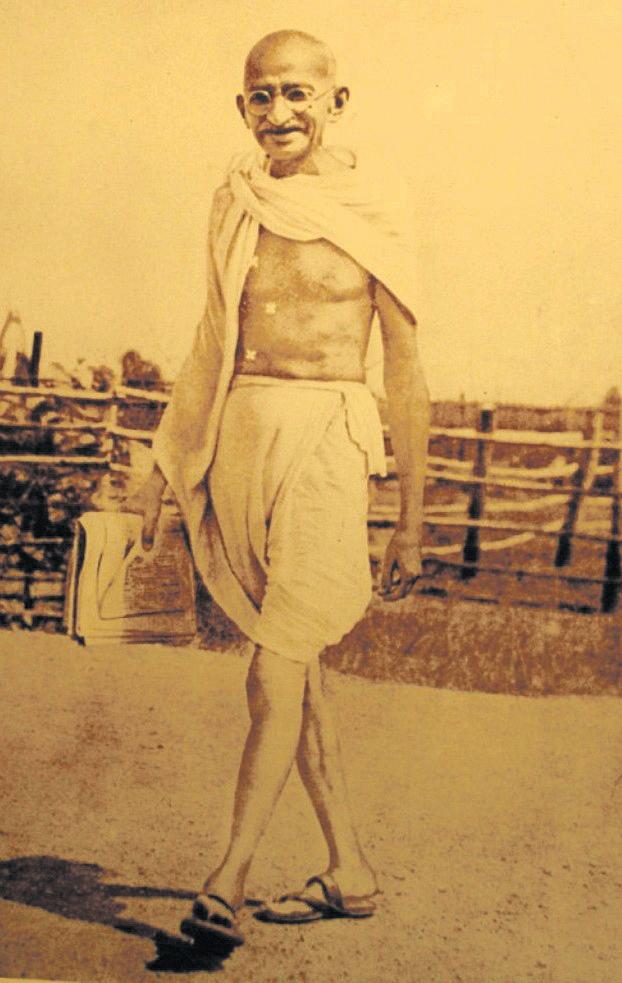
managed to inspire peace between Hindus and Muslims.
Dr Thomas Weber, Associate Professor in Politics, La Trobe University, gave the final presentation on whether Gandhian principles are relevant today – quite an interesting subject considering the complexity of today’s times. According to Dr Weber, Gandhi inspired the nation to incorporate values of humanity and illustrated that peace can be achieved through honesty and non-violence, something which today’s leaders should aspire to implement before resorting to weaponry. Undoubtedly, the Gandhian spirit and principles continue to remain significant even today.
It was a well-organized event by the three reputed institutions and a pleasant experience of reviving the spirit of Gandhiji. However, it is unfortunate that such events fail to witness flocking crowds; also, we should spare a thought behind the significance of such gatherings before venturing out to gratify one’s own desires, as was evident that evening.
Tagore lecture draws current parallels

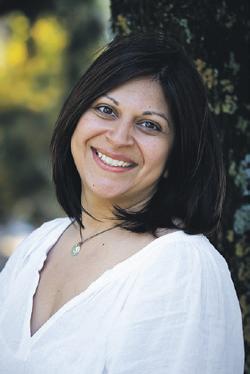
The Bangla Sahitya Sansad (BSS) is an association that actively promotes Bengali literature and one that reinforces the strong literary ties between Bengalis from West Bengal in India and neighbouring Bangladesh. In keeping with the trend of roping in eminent novelists from both nations, and in commemoration of the 150th birth anniversary of international luminary Rabindranath Tagore, the BSS and the Institute of Postcolonial Studies (IPCS) jointly organized the visit of the scholarly Professor Udaya Narayana Singh to honour the life and works of Tagore on September 8 at the Uniting Church Hall in Melbourne. Prof Singh is the Pro-Vice-Chancellor of the Visva Bharati University established in 1921 by the great Tagore himself at Santi Niketan in West Bengal.

Prof Singh’s lecture was based on the theme, Tagore for our Times: Tagore for all seasons, and in his tribute gave the audience an insight into the creations of Tagore who was the first non-European
to win the Nobel prize in literature. Prof Singh expressed his views on the subject with forthright conviction on how some of Tagore’s principles are relevant today and offer hope in these mystifying times. As a spectator and complete novice to Tagore’s works, it was uplifting to learn about the great man’s principles and also, how gifted he was as an individual. Prof Singh was kind enough to screen some of Tagore’s paintings and poems, which are extremely evocative and fascinating. The lecture was interspersed with the dissection of Tagore’s ideas about peace and harmony, secularism, education, culture and religion. This was followed by a Q&A session in which some of Tagore’s theories were debated constructively by the audience.
In literature, not many have matched the brilliance of Rabindranath Tagore, a rare talent who stood out not just in one art form, but a smorgasbord of them ranging from poetry, music and writing to painting and theatre. He had a very philosophical
approach towards life and at a very young age, began to immerse himself in the realms of his work. Tagore’s works are so famous all over the world that a major proportion of his creations have been translated to several international languages. Even though some of his theories still hold significance today, Prof Singh is of the belief that certain principles are fading out in today’s convoluted times. For instance, on the subject of religion Tagore said, “Look within yourself to find answers; one does not have to visit religious places for peace or to find answers because the solution to all problems lies within one’s self; everything comes to us if we create it”. If you adopt a pragmatic approach to this concept, the theory is spot-on, but we are so steeped in religion that we always turn to the almighty in times of distress and on some occasions, expect miracles. Also, on the subject of education, Tagore believes that knowledge must be gained from nature, life and direct sources, not from books
which hinder one’s progress in pursuit of attaining wisdom. In these complex times of gizmos and technology, this theory would draw a look of disbelief in our society because we are in the midst of an endless digital revolution which will never slow down.
The BSS is highly capable of summoning the crème de la crème of novelists and Prof Singh’s visit has only enhanced their reputation. Overall, it was an elevating experience and the audience left the hall with a renewed sense of energy and enthusiasm.
Sujith Krishnan

OCTOBER 2011 <> 13 INDIAN LINK COMMUNITYSCENE
www.indianlink.com.au
Photos: Guruswamy
Photos: Pratish Bandopadhayay
Women support men’s
(a diagnostic tool for prostate cancer).
cause
BY PREETI JABBAL

Did you know that men should begin getting annual prostate cancer screenings at the age of 40? I must confess I did not, nor did most of my friends at our table as we attended a ladies luncheon organized by Disha. It could be because we have started approaching that age group recently or it could be ignorance on our behalf, but I am glad of the opportunity provided by Disha to educate and empower women of this medical condition that is one of the most common and insidious cancer among men. With over 10,000 cases diagnosed annually in Australia, prostate cancer has the highest fatality rate in males.
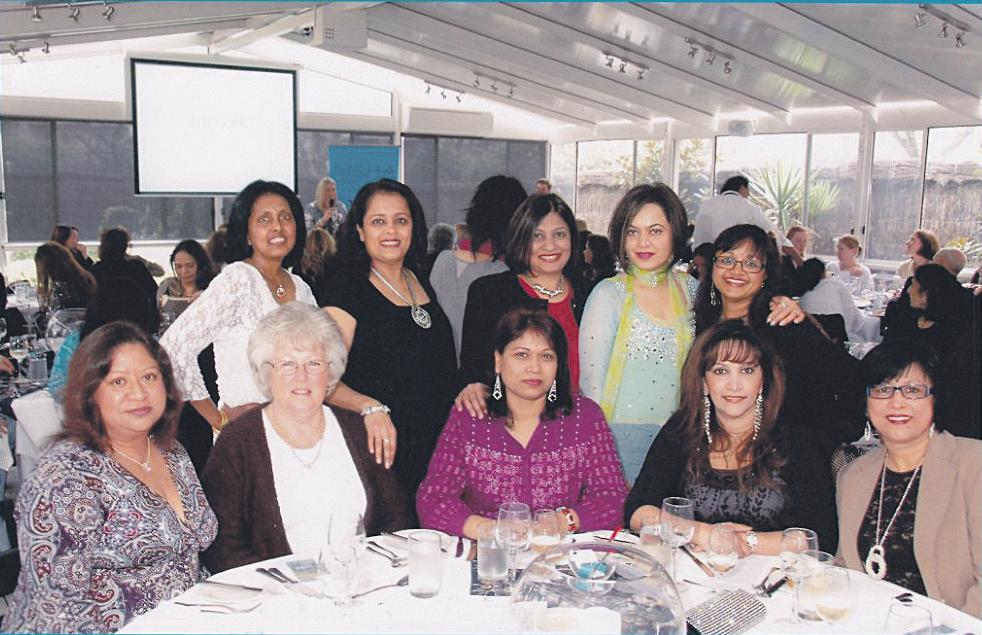
While the participants at the Ladies luncheon held at The Willows in St Kilda certainly appreciated the light hearted event, there was a sobering message that needed to be shared: early detection of prostate cancer offers a greater probability for effective treatment. Early detection can be achieved with a PSA (Prostate Specific Antigen) blood test or DRE (Digital Rectal Examination) testing. Prostate cancer survivor Mr. Jack Edwards shared his story with humour and passion, endearing himself to his audience. He deserved kudos not only for talking and dealing with this serious issue, but also for being the only man present to brave over a hundred endlessly chattering women.
“It’s just a fun way to get the entire community involved, while talking about and raising funds for prostate cancer,” said Tara Chandramouli, founder of Disha.

“When the fun ends, the movement still continues. Today is about taking advantage of opportunities we have to get health awareness and education,” Tara added. “This information is just not for you. Share the information you get today with your family, friends and loved ones.” urged Tara as she presented a slide on Disha’s achievements and involvements in previous years.
Since its inception, Disha has been raising funds for worthwhile causes. Their aim is to be closely involved with and linked to any cancer research by continuing to raise funds. The organisation’s well-executed events have helped raise funds for a Fibrotic Bronchoscope for the Alfred Hospital, ECG Machine for Royal Melbourne Hospital, palliative care beds and DNA Thermal Cycler for RMH and various equipments for the Women’s Cancer Research Centre. The proceeds of this year’s luncheon will help the
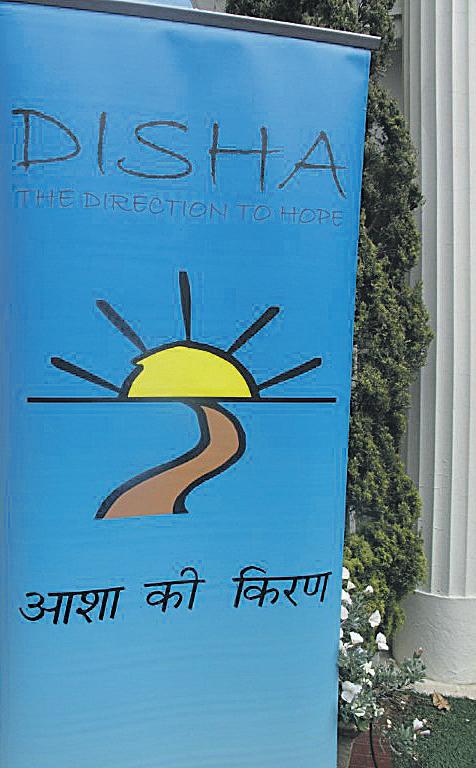
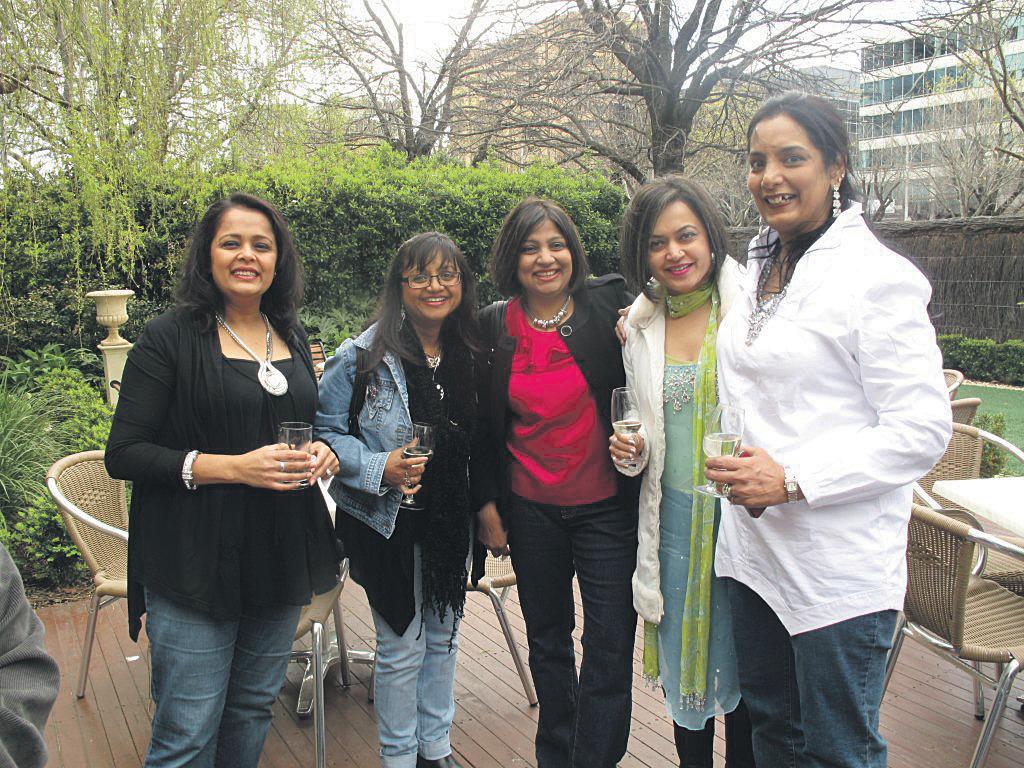
“There are so many events where men have supported women’s causes, from wearing pink for breast cancer to wearing heels and literally walking in women’s shoes. At Disha we decided to dedicate this afternoon to support a men’s cause,” said Dr. Neelam Bhardwaj from Disha. “We couldn’t possibly do a Movember where men sport a moustache and raise millions for prostate cancer,” said Neelam laughingly. “Instead we raised the fashion stakes with a workshop conducted by a renowned clothing house in Melbourne.”
The glamour quotient of the denim and diamond themed event shot up further with a fashion workshop presented by professional stylists from The Ark Clothing Company. Tips and trends were shared and dressing secrets were revealed in an interactive workshop where the captive audience learnt to workshop their shape. Members from the audience were also encouraged to participate and try out the flattering, relaxed and creative styles from The Ark store in Malvern. Overcoming dressing dilemmas for all shapes proved to be the highlight of the afternoon.
A generous raffle, sumptuous lunch, gift bags and gupshup kept the ladies occupied. Poonam Aggarwal as the MC brought all of these diverse elements together, and then delivered them with charm. The Disha team scored highly for their attention to detail. Their sponsors dug in deep into their pockets and offered a diamond set (sold on a silent auction), discounted vouchers, hampers etc. adding to the days proceeds. Disha raised approximately $10,000 that afternoon. A ladies day out is always fun, but in this case it was very fulfilling to be part of Disha’s efforts to raise awareness and do something worthwhile for the community. Personally, it was meaningfully spent ‘Me-time’!

14 <> OCTOBER 2011 INDIAN LINK
COMMUNITYSCENE www.indianlink.com.au
loveBangalorestories

Real stories and real people from India will make the essence of Tom Cowan’s latest cinematographic venture
BY PRIYANKA TATER
As I wondered which film personality I should feature next on my radio show Lights Camera Action on Indian Link Radio, the answer dropped straight into my lap. By some quirk of fate, Australian film-maker Tom Cowan had just got in touch, wanting to talk about his latest project – a film set in India!

Film buffs will know Tom Cowan as the man who shot the path-breaking and controversial Kannada film Samskara based on a novel by the same name, written by Jnanpith award winning writer U R Ananthamurthy. Despite being initially banned by the censor board for portraying caste-based politics, it was finally released and went on to win the President’s Gold Medal for the Best Indian Feature Film of 1971.
He started his career as a trainee at ABC TV and during this tenure, he directed The Dancing Class that went on to win the AFI’s Best Film of the Year and a first prize at the Commonwealth Awards in Edinburgh. Since then, there has been no looking back for Tom, who is among Australia’s most distinguished as a director, cinematographer and producer. Awards have continued to pour in, among the most notable being Journey Among Women that won the AFI’s Most Creative Feature Film Award in 1977, running for 16 weeks in Sydney’s George Street and selling in 17 countries. Tom’s first IMAX film as Director of Photography was Antarctica that won the Prix du Jury at the Festival de la Geode, and Samskara won India’s Best Feature (President’s Award) and many international prizes, including the Silver Lion at Locarno. And now this great Australian filmmaker is all set to repeat history with yet another offbeat, India-based film titled Bangalore Love Story Tall and athletic with a soft, gentle voice and a warm persona, Tom Cowan sat before me and took on the gigabyte of questions I had for him. Here are excerpts from the interview.
Priyanka Tater: Tom, tell us first about your association with India - how did Samskara happen?
Tom Cowan: I got very, very lucky. I was introduced to Satyajit Ray in 1967, when he came to Australia. He said that if I ever planned to go to Calcutta, he’d show me around the studios and the editing. I was thrilled because when I saw Pather Panchali, his first film. I was enthralled by it. I fell in love with India from that very moment. And when I did get to India, I actually didn’t meet him until years later. But I went down to Madras and met Pattabhi Rama Reddy who was preparing Samskara; I had been introduced to that story around a campfire, told to me by the young artist Vasudev, while we sat on the sand together at the beach. I
was totally surprised and amazed at such a great story, because I had seen Indian films but they were not of that calibre, apart from the Bengali ones. I didn’t know Pattabhi then, but I said to Vasudev that I’d do anything to be a part of Samskara, I’ll make the tea! He said, ‘No, no, I’ll introduce you to Pattabhi, he’s looking for a cinematographer’. So we met in Madras, hit it off instantly and it’s a lifelong friendship. However, though we met in Madras, the film was based in Karnataka as per the novel, and hence we shot it there.
PT: And now you are going back to Bangalore for yet another film.
TC: It is called Bangalore Love Story and I am making it with Pattabhi’s son Konarka Reddy and Kirtana Kumar, who’s a theatre director. It is a very unusual film, and certainly not a Bollywood one. We are collecting love stories and then we plan to workshop with those stories to make a script. It would be a raw and hopefully, beautiful film, with real stories and real people acting in it.
PT: What made you choose Bangalore?
TC: Bangalore is where I have friends and support. The resources there that are available to me are far beyond what I could get in Mumbai, as I just don’t know so many people in that city. I’ve known Bangalore for 40 years and I know all the nooks and crannies. Also Bangalore is such a dynamic city, it’s got this contrast between tradition and ultramodernity.
PT: Why real people and not star actors, considering that south India has some names to reckon with?
TC: We could get a starthat would certainly attract people to the film. But a star acting a part in a movie is a fantasy; it’s not the real life of that character. So, I am going for rawness and for real people enacting
I didn’t know Pattabi then, but I said to Vasudev that I’d do anything to be a part of Samskara, I’ll make the tea!
has a quality you can’t get in a Bollywood film, and it would be silly to try.
PT: What is the kind of release are you looking at for the film?
TC: We will take the film to festivals first. It’s a way of broadening it out and it will do well at festivals. Then we plan to release it in India, followed by Australia, as we have control of the film in these two.
PT: How has the Australian film industry changed over the years?
hundreds of Australian actors in Hollywood doing quite well. They’ve taken the lead from the likes of Mel Gibson, Judi Davis, Eric Bana and others who have done well. Finally, my curiosity gets the better of me and I ask Tom if he has a few lines to share in Hindi, to which he is quick to reply, “I am not good at Hindi. Because I have spent most of my time in the south, I know more of Kannada and Tamil. I like Hindi, the sound of it is very graceful. I like listening to it without understanding it. And in Bangalore Love Story, most of it will be in English, as in Delhi Belly. So my not knowing Hindi should not be a problem!”
Proving yet again that cinema has no language barriers! Good luck to Tom, and watch out for Bangalore Love Story
We had an era where the bureaucrats had a stranglehold on films, so all the films were safe but nobody of course, wants to see safe films and that’s why Australian films were in the doldrums for so long.
TC: It is an exciting era. I started making films even before there was a film industry here, and I have gone back to that. I operate as if there was no film industry here. That’s just me, but having said that, there are some really good films being made at the moment in Australia, and films that people like. The recently released film Red Dog is wonderfully successful, and deservedly so. We had an era where the bureaucrats had a stranglehold on films, so all the films were safe but nobody of course, wants to see safe films and that’s why Australian films were in the doldrums for so long. But now it is changing and young filmmakers are taking the bull by the horns. It’s a golden age of actors in Australia. Young actors have the opportunity to do good work in theatre and even if they are in soap here,
A call for authentic love stories from Bangalore
Tom Cowan wants to talk to you if you have an authentic love story based around Bangalore. The stories must relate to, or be appropriate to the city of Bangalore, in southern India. Cowan would like to interview anyone who can help with stories of ‘raw’ love from this region with a view to including these in the script of his upcoming film which will be filmed in Bangalore. His co-director is Kirtana Kumar a Bangalore based actor, film maker and theatre director who is currently staging the modern classic, The Bald Soprano in Bangalore.
Details contact Marie Geissler 0416 285 727, 02 9380 5501, or email marie@geissler.com.au
OCTOBER 2011 <> 15 INDIAN LINK
INDOPHILE www.indianlink.com.au
Tom Cowan with Konarak Reddy, son of Samskara director Pattabhi Rama Reddy, and Kirtana Kumar, theatre director, during auditions for Bangalore LoveStory

16 <> OCTOBER 2011 INDIAN LINK

OCTOBER 2011 <> 17 INDIAN LINK
All I want for
Indian Link Radio presenters make up their wish lists

Diwali
MANOJ MENON
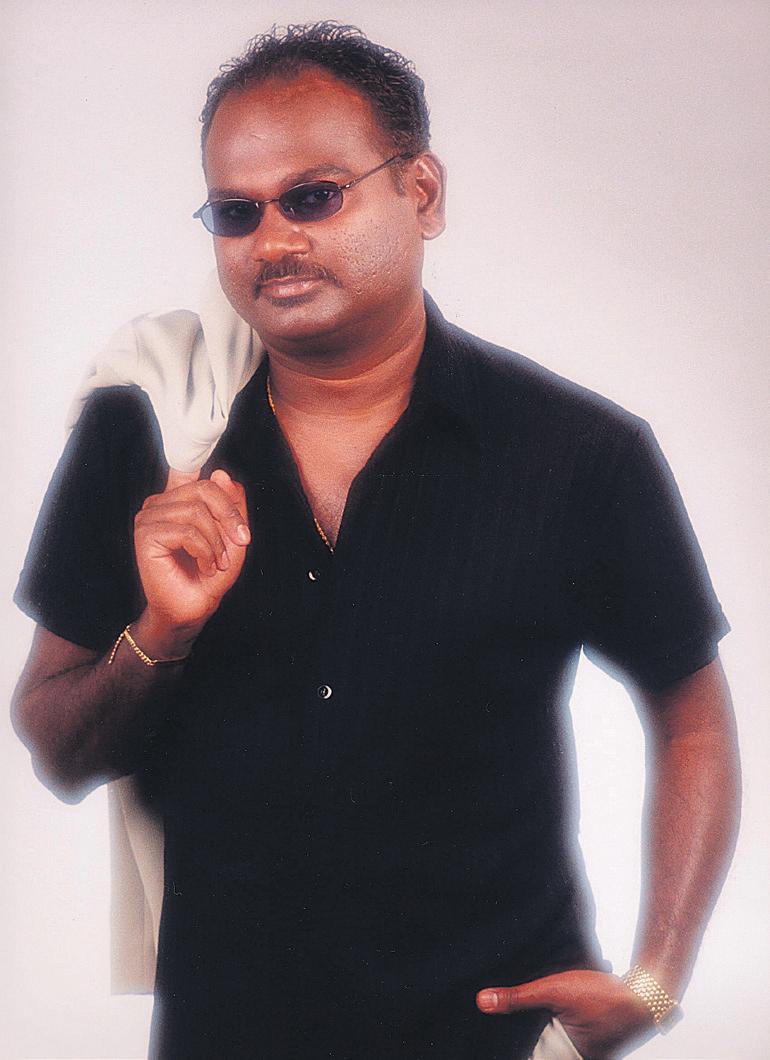

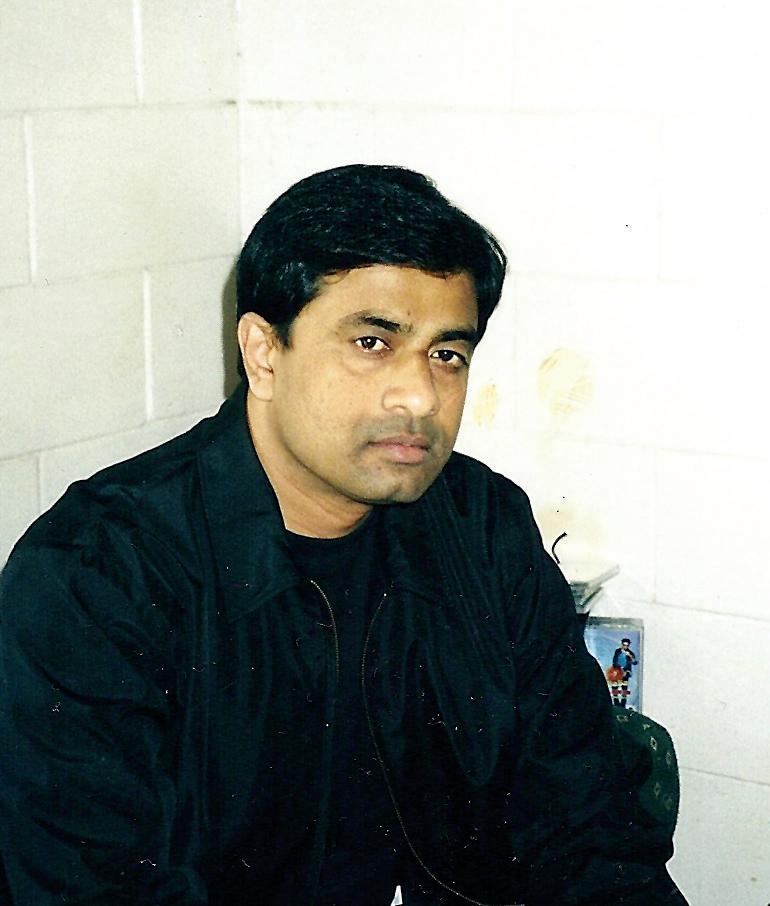
Patakon ki tarah aapki zindagi mein kuch hulchul ho.
Mithaiyon ki tarah aapki life mein mithas ho.
Deepon ki jyoti ki tarah aapka bhavishya ujval ho Happy Diwali to you and yours!
And for me personally, it looks like one of my long-standing dreams - of becoming a radio presenter on one of India’s FM stations - is going to come true. I hope it is this Diwali! Hopefully I’ll soon get a chance to interview two of my favourite personalities at the moment Sonu Nigam and Katrina Kaif.
PRIYANKA TATER
This Diwali pray hard to Maa Laxmi, the Goddess of Wealth: looks like another GFC is just round the corner!! Wish you all a very (to the power infinity) happy and safe Diwali
uske liye new clothes chahiye honge, na? Um, so ok at last count I had 350 outfits but absolutely nothing to wear…! So maybe 50 more would make my life easier. Kyun ki jab bhi kahin jana hota hai, ek hi dialogue hota hai, ‘Yaar dress toh koi hai ni mere paas, ab main kya karun??’ Lagta hai nayee dress leni hi padhegi, aur fir nayee dress ke saath koi puraani heels toh pehenta nahi… so some new shoes for me as well, thank you!
Baaki, sabhi Indian Linkii - sunne or padhne waalon ko meri taraf se bohat bohat Diwali Mubarak!
since childhood… and some Collete Jewellery maybe…. and tons of honey macademias!
gujiyas, kaju burfis, chumchums, boondi laddoos, coconut laddoos, rasmalai… Dil maange more, man! I want this Diwali, someone to invent magical ‘slimming mithai’! And another wish would have to be, as many new parents will understand, a full night’s sleep, please – just one full night?!
Bhaiyon aur un sabhi bhaiyon ki pyaari beheno ko Diwali ki dher saari shubkamnayein....
ANUP KUMAR
I wish to retire now - relaxing with friends and enjoying home made meals and exotic sweets without breaking the “Blood Glucose Monitoring” machine. Wishing all my listeners a happy Diwali and a prosperous new year: make most of this Diwali, live life to the fullest, with no regrets…Hasiyeh aur hasaaiyeh, masti mein jhoomieh!
SHRADDHA ARJUN
Maybe a lottery win, as I’m getting married in a month’s time! Or perhaps a life-long Diwali party, with lots of friends and great food and of course the comfort of guiding lights to lead me on.
I’d also like to turn all the firearms in the world into Diwali crackers, so that there are no more bomb blasts and killings anywhere. Here’s wishing everyone a happy and joyous Diwali.
NEELAM VASUDEVAN



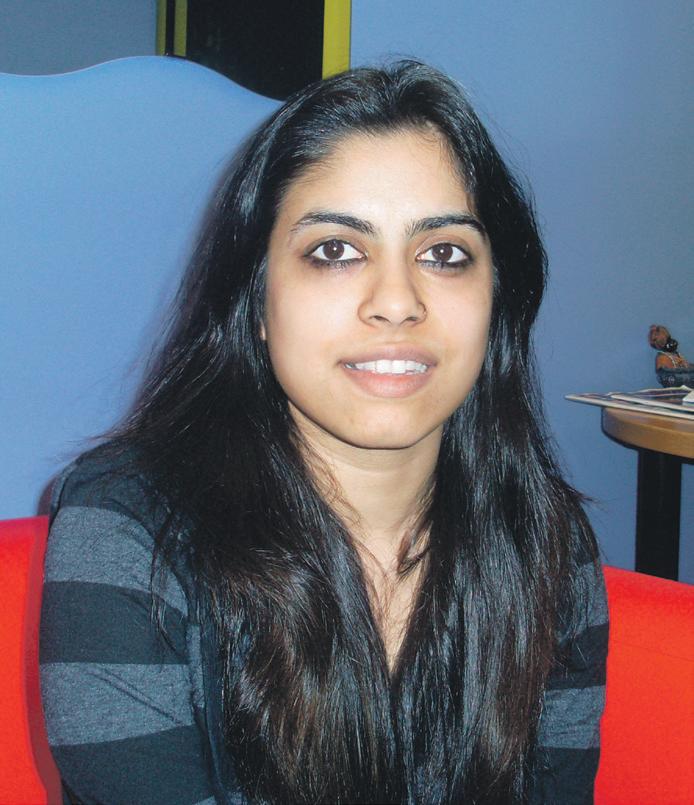
What I’d really love is to eat the yum kheel bataashe, gujias and mithais my Mum used to make.... I want to light lots of diyas, crackers aur phuljharis. I’d like to have all of my family from all over the world together on Diwali and light diyas with them together.
On a lighter note, I want to go for a ride at night in outer space and touch the stars... and I want to teleport myself from my home in Melbourne to the Indian Link Studios in Sydney so I can meet my team of mast anchors!
And for all our listeners, wishes for every joy and prosperity. Here’s hoping that the Festival of Lights brings a world of joy, happiness and contentment to your homes, to last the whole year through. Happy Diwali!!
UZMA BEG
I would like a starry Diwali. I want a huge cake, pink and delicious, and my favourite actors and singers to jump out of it shouting “Woohoo, Uzma’s the best”. The first person to jump out would be my all-time favourite Mr. Bachchan of course. No matter how old he gets, he still does his own stunts, so jumping out of my cake shouldn’t be a problem! (Since it’s Australia I’ll get insurance just in case). The next actor to jump out would be Aamir Khan sans shirt with his post Ghajini body with ‘Uzma Uzma’ written all over his torso. And definitely Saif Ali Khan, singing “Jab bhi main Uzi dekhoon mera dil diwana bolay bach bay bholay bholay”! Since Kareena is on a perpetual diet there’ll be no chance of her being anywhere near my cake to ruin it for me and Saif! Pitbull would be next: I’ll ask him to rap out my praises in that hot sexy voice of his: “I was thinkin’ of her, she was thinkin’ of me, the next thing we know we were thinkin’ of three... let it rain over me and Uzi...”! And Hrithik Roshan could jump out of my cake saying “Jab Uzma meri girlfriend hay to usski kissi aur se shaadi kyun hue, ma?” All my Diwalis would come together then. Hope you have a starry Diwali too.
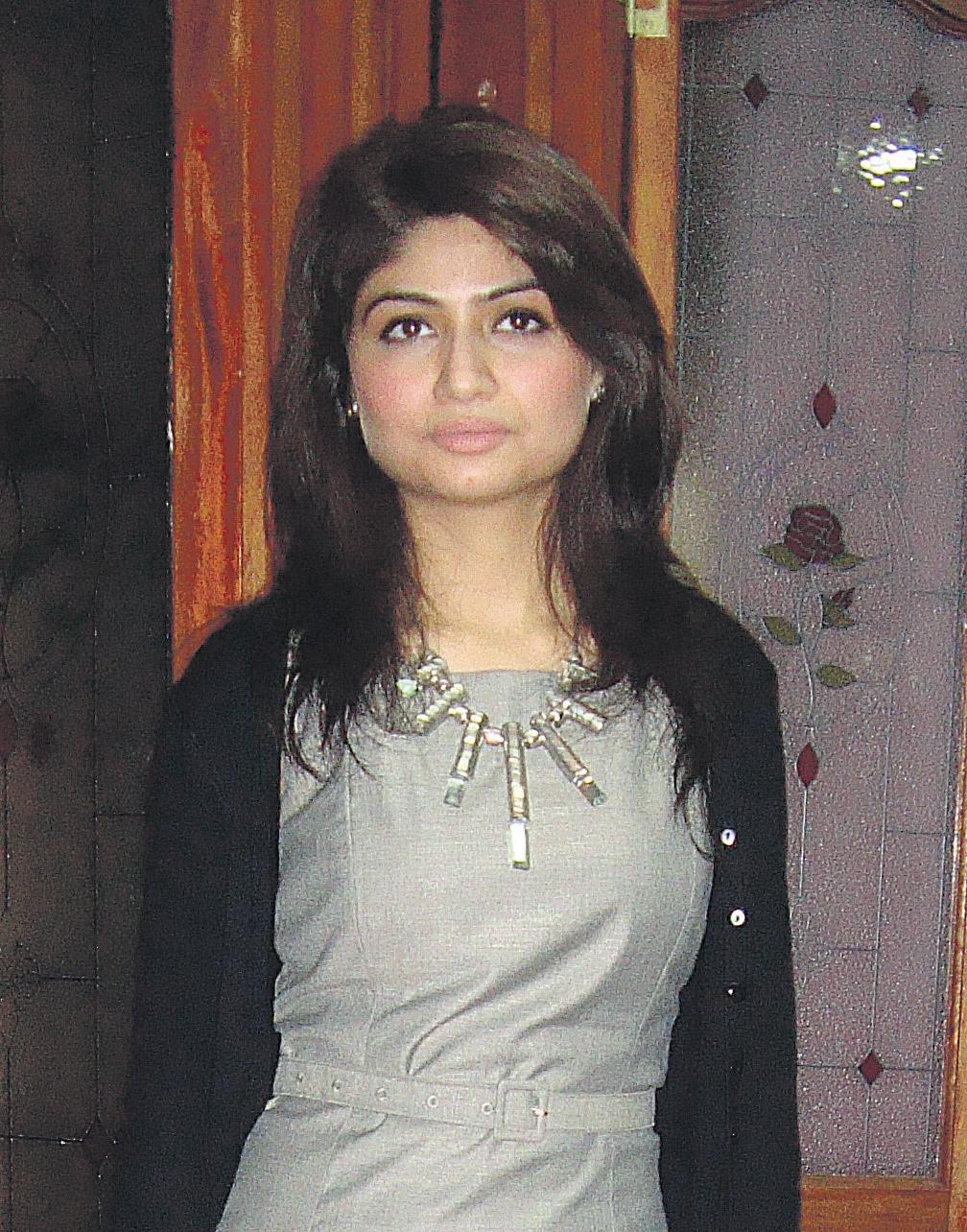
18 <> OCTOBER 2011 INDIAN LINK
RADIO www.indianlink.com.au
Australia’s only 24/7 Hindi Radio Ring 1 8000 15 8 47 to subscribe

OCTOBER 2011 <> 19 INDIAN LINK
India, the reluctant superpower
An Australia India Institute conference offers a peep into the psyche of contemporary India
 BY SUJITH KRISHNAN
BY SUJITH KRISHNAN

The Australia India Institute (AII) established in 2008 by the University of Melbourne, focuses on subjects dealing with education, business, economy, scientific, cultural and social issues. According to AII’s Director Prof Amitabh Mattoo, its aim is to promote research partnerships on topics of mutual interest to strengthen the professional ties between Indian and Australia and more importantly, to give the Australians a better understanding of contemporary India.
The inaugural Australia-India Institute conference titled The Reluctant Superpower – Understanding India & its Aspirations, was held on September 22-23 at the University of Melbourne, and featured some of the best scholars and analysts from both countries. The objective of the conference was to deconstruct India to a foreign audience and act as a resource to make India-Australia ties more engaging and productive. As Prof Mattoo said, “India and Australia know each other, but do not understand each other.” It is this disparity that the Institute hopes to overcome in the near future.
From Jawaharlal Nehru to Manmohan Singh
The conference could not have asked for a better start with a captivating speech by Mani Shankar Aiyar, Member of Parliament. Mr Aiyar is a member of the Indian National Congress party who in 2006 was conferred the Outstanding Parliamentarian Award by the President of India. Mr Aiyar talked attendees through how India’s foreign policy has gone through a series of changes since independence, from being realistic to less idealistic today. He went on to say that India’s foreign policy today is inclined more towards military and political power, and less towards nationalism. He reiterated this statement saying, “The only way to remain a superpower is by not fighting a war.” Mr Aiyar summed up the nation’s tentative mindset and approach towards taking on responsibility by stating: “We know we aren’t a superpower which is why we are a reluctant superpower!”

India and the great powers
Mr Aiyar’s fascinating discourse was followed by a gripping first session with lectures by Prof Marika Vicziany on India’s relations with the USA, and Mr Rory Medcalf focussing on India’s relations with China. Prof Vicziany is a Professor of Asian Political Economy at the Monash University and in her discourse she stated why America sees India as reluctant, some of the reasons being India’s soft power incapacity, human rights issues and disputes with neighbouring countries. In short, India’s relation with the USA involves “too many dialogues and no results.” According to Mr Medcalf, the economies of both India and China have been on the surge in the last few years and both these potential superpowers share common interests in regards to
border disputes, water and internal stability. However, he was quick to state, “India is not a threat to China but China is deemed a threat to India.”
India, Asia and the Indian Ocean
At the panel debate, the speakers included C Rajamohan (Senior Fellow at the Centre for Policy Research in New Delhi); C Uday Baskar (Senior Fellow at the National Maritime Foundation in New Delhi); Biswajit Dhar (Director, General Research & Information System for Developing Countries); Ramesh Thakur (Director of the Centre for Nuclear Non-proliferation & Disarmament, ANU); and Rajiv Nayan (Senior Research Associate at the Institute of Defence Studies & Analysis in New Delhi).
All of them agreed in unison that the profile of the global economy of the future would depend on the relations between the United States, China and India. Also, the might of both the naval and military security systems of India and China would be a determining factor in the gradual shift of power in the future.
Human rights and the nuclear regime
Prof Yogesh Tyagi tackled the issue of India and human rights while Mr KC Singh touched upon the subject of India and the nuclear regime. Prof Tyagi is a lecturer on International Law, Chairperson of the Centre for International Legal Studies, and Director of the Centre for promotion of human rights. Mr KC Singh has served as Deputy Secretary to the President of India from 1983-87 and has also held various positions positions of Joint Secretary for administration, Head of the Consular, and Passport & Visa Division. In the fourth session, Mr Shyam Saran, who has worked as Advisor to the Prime Minister on foreign policy, nuclear and defence issues, dealt with the subject of Energy Security, Nuclear Energy and Climate Change.
India’s neighbours
Dr Suranjan Das, ViceChancellor of the University of Calcutta and Honorary Director of the Netaji Institute for Asian Studies, addressed the issue ‘India’s Pakistan Conundrum’. He pointed out that though relations between these hostile neighbours have improved considerably in the last decade, it is premature to conclude that they have buried their differences. He went on to say that the solution to the conundrum will be “strenuous and long”. Dr Rajesh Rajagopalan, who is currently Visiting ICCR Chair at Victoria University in Wellington, dealt with the subject ‘India and the Future of South Asia’. According to him, India is undoubtedly the dominant force in the region with increased
military expenditure, as a result of which the other countries in the region are insecure. Therefore, one prime obstacle facing South Asia is regional imbalance and it is a region where there is a heavy influence of global politics. The key to implementing stability in the region, he concluded, is bilateralism.
Religion, secularism and multiculturalism
Dr Swapan Dasgupta, a renowned political columnist with over 25 years’ experience, is of the belief that Indian politics has always been a case of “accommodate and adjust”, which would have to evolve if secular values are to be encouraged in the system. Dr Peter Friedlander, a Senior Lecturer in Hindi language and Buddhist studies at La Trobe University, began his discourse by attempting to define multiculturalism:
“When different faiths gather together to discuss, this is multiculturalism”. India has a long way to go to be recognized as a secular state because, keeping aside the differences between Hindus and Muslims which crop up now and again, there are also intra-religious communities which fail to be in sync. Moreover, people continue to argue over caste and minority issues in many parts of the country. Being a multilingual nation, it becomes all the more demanding to infuse the values of secularism and multiculturalism.
However, Dr Ahluwalia pointed out that despite the growth of over 8% GDP in the last decade, India has had to constantly grapple with a traditional mindset and disagreements on several policies with political parties.
India’s new public diplomacy
Mr Navdeep Suri has been a member of the Indian Foreign Service since 1983, and currently heads the Public Diplomacy Division of the Ministry of External Affairs. India’s strength in soft power lies in the combined elements of Bollywood, its various cuisines, culture, history and information technology, to name a few. This prompted him to bring to light a quote by historian Nick Cull who said, “The thought of India brings a smile to the face in a way that China does not!” Mr Suri also said, “Public diplomacy involves using soft power and nation-branding.” He stressed on the fact that the vision of Brand India has to be unambiguous and that the target audience should be appropriate for every campaign. He also highlighted how social media is
now playing a pivotal role in establishing a dialogue to inform and influence the youth, to good effect. He enhanced this point saying, “Successful public diplomacy involves listening and speaking, which help establish relationships and create credibility.”
Prof David Lowe, Director of the Alfred Deakin Research Institute at Deakin University agreed with Mr Suri, stating, “Public diplomacy is more about relationships, and India’s public diplomacy is less bilateral which results in poor relationships with her counterparts.”
According to Dr Nick Hill, Director of External Affairs for the Australia-India Institute, the relations between India and Australia are good but there is scope for further improvement, and this can be achieved through further dialogue, educational exchange, and other methods.
Prof Amitabh Sinha spoke about the importance of the media industry in India, its growth and also, how political parties depend on the media and vice versa. India’s unfinished revolutions
This session featured Prof Alok Rai, Professor in the Department of English, Delhi University and Dr Priya Chacko, a lecturer in International Politics in the School of History & Politics, University of Adelaide. Despite the language diversity in India, Prof Rai threw light on how the English language has grown to become one of the most sought after languages by the youth, who consider it their licence to success in the professional world. According to him, this is an obvious indication of the desire and hunger to take on the world, which augurs well for the nation in the long run. Dr Chacko highlighted the rise of India with emphasis
Continued on page 22
20 <> OCTOBER 2011 INDIAN LINK www.indianlink.com.au LECTURE
Mani Shankar Aiyar
Tharoor’s theories
fascinate
BY PREETI JABBAL

riter and politician
Shashi Tharoor once commented on Chetan Bhagat’s novel, One Night in the Call Centre writing, ‘Chetan’s observer’s eye keenly focused on nuances and details. His book has struck a chord with India’s young - and it clearly has – it is more for its depiction than its politics, its diagnosis rather than prescription’. Dr. Tharoor could very well have been talking about his own brilliantly executed oration at the Australia India Institute (AII) recently. His keen observations on the topic, ‘India the reluctant Superpower’ struck a chord with the multicultural audience present at the public lecture. His talk focussed on nuances that steer India’s rapid development and he went into great details while promoting the merits of soft power which, according to him, will propel India towards attaining superpower status.

“India is fast becoming a superpower,” stated Dr. Tharoor,“not just through trade and politics, but through ‘soft’ power, its ability to share its culture with the world through food, music, technology, Bollywood.” He argued that in the long run, it’s not the size of the army that matters as much as a country’s ability to influence

the world’s hearts and minds. India is and will remain the land of a better story. The story rests on the fundamental platform of political pluralism; all religions have found a welcome place in India. Citing the example of the last Indian elections, he said that it’s only in India that will you see the election being won by a woman leader of Roman Catholic descent (Sonia Gandhi) who made way for a Sikh Prime Minister (Manmohan Singh) who was sworn in by a Muslim President to represent a country that is over 70% Hindu.

A Member of the Indian Parliament for the Thiruvananthapuram constituency in Kerala, Dr. Tharoor is an internationally known speaker. His engaging discussions and speeches involve various topics from India’ s recent transformation and future prospects, globalisation, freedom of the press, human rights, literacy, Indian culture, and India’s present and potential influence in world politics. The audience in Melbourne University was suitably impressed with the communication skills, speech content and articulation of this former Undersecretary General of the United Nations. The Q&A session that followed further established his prowess with words and his extensive knowledge, as Dr. Tharoor fielded all types of questions from the audience with wit and practiced humour.
The crux of his oration was that India

may be a country where paradox still reigns supreme, where ancient practices coexists cheerfully with new age IT expertise, but in its own nonaggressive way, India is slowly making its presence felt globally.
The author of 12 books, Dr. Tharoor has enjoyed a distinguished career and several commendations. It was obvious just why from the response he garnered at the Melbourne University event. His take on India and its soft power has done its rounds on UTube in previous years, but it was still enormously refreshing to hear Dr. Tharoor as he wrapped up the two-day conference hosted by the AII.
OCTOBER 2011 <> 21 INDIAN LINK SPECIALREPORT www.indianlink.com.au
Custom made orders welcome
Wannabe a Bollywood star?
A new reality show aims to identify acting talent for the Indian film industry
So you think you can be a Bollywood actor.
Well, here’s your chance. And you won’t even have to go to Mumbai!
SBS TV is soon to start a reality show for Bollywoodwannabes right here in Australia, with a grand prize for the lucky winner - a chance to star in a Mahesh Bhatt movie.
The four-part series, to be produced by WTFN Entertainment (of Bondi Vet and Keeping up with the Joneses fame), is titled, what else, Bollywood Star.
Describing the project, Michael Ebeid, SBS Managing Director, said, “The series will follow the hundreds of hopefuls who will audition for a part in a Bollywood movie as they’re whittled down to six finalists who will travel to Mumbai to immerse themselves in Indian culture and experience the glitz and glamour of the Bollywood movie scene. The final winner will be selected by Mahesh himself and take away the prize of a role in his next feature film”.
He added, “Bollywood Star continues SBS’s commitment to pushing the boundaries with commissioned content with this exciting take on the talent search format”.
Applications are currently open, with details at www. sbs.com.au/bollywoodstar. Applicants can be from any cultural background, but they must be over 18. National auditions are due to be held in Sydney on Saturday 22nd October at the National Art School,
Call SBS!
Taylor Square, Sydney. And yes, Australia’s most well-known link to the Indian film industry, Anupam Sharma, is also involved in the project: he will head the judging panel. “I’m really excited about the project,” he said on Indian Link Radio recently.
“For one thing it brings me back ‘home’ to SBS where I started off my career. And secondly, Bollywood Star offers the first real opportunity to get into India’s film industry professionally. I think any one who’s interested in Indian films should try out, and we know there are many out there! It’ll be an opportunity of a lifetime”.
Describing the process, he said, “After the auditions on Oct 22 will be the heats and then the final 6 will be announced. They will be taken to Mumbai where they will be mentored in different departments in film”.
While Anupam claims he doesn’t know the details of the film that the winner will get to star in, he says it will
The series seems to have the potential of going beyond the ‘talent show’ genre, and becoming a social documentary of sorts. It can do this if it can successfully tap in to the role of Bollywood in the Indian psyche – the inexplicable hold it has over the population despite its quirkiness, or the manner in which it unites the country like a religion, or why its stars are venerated like gods.
Or even why it is now beginning to fascinate non-Indians.
Anupam also emphasized that auditions are open to people of non-Indian background are also welcome to apply.
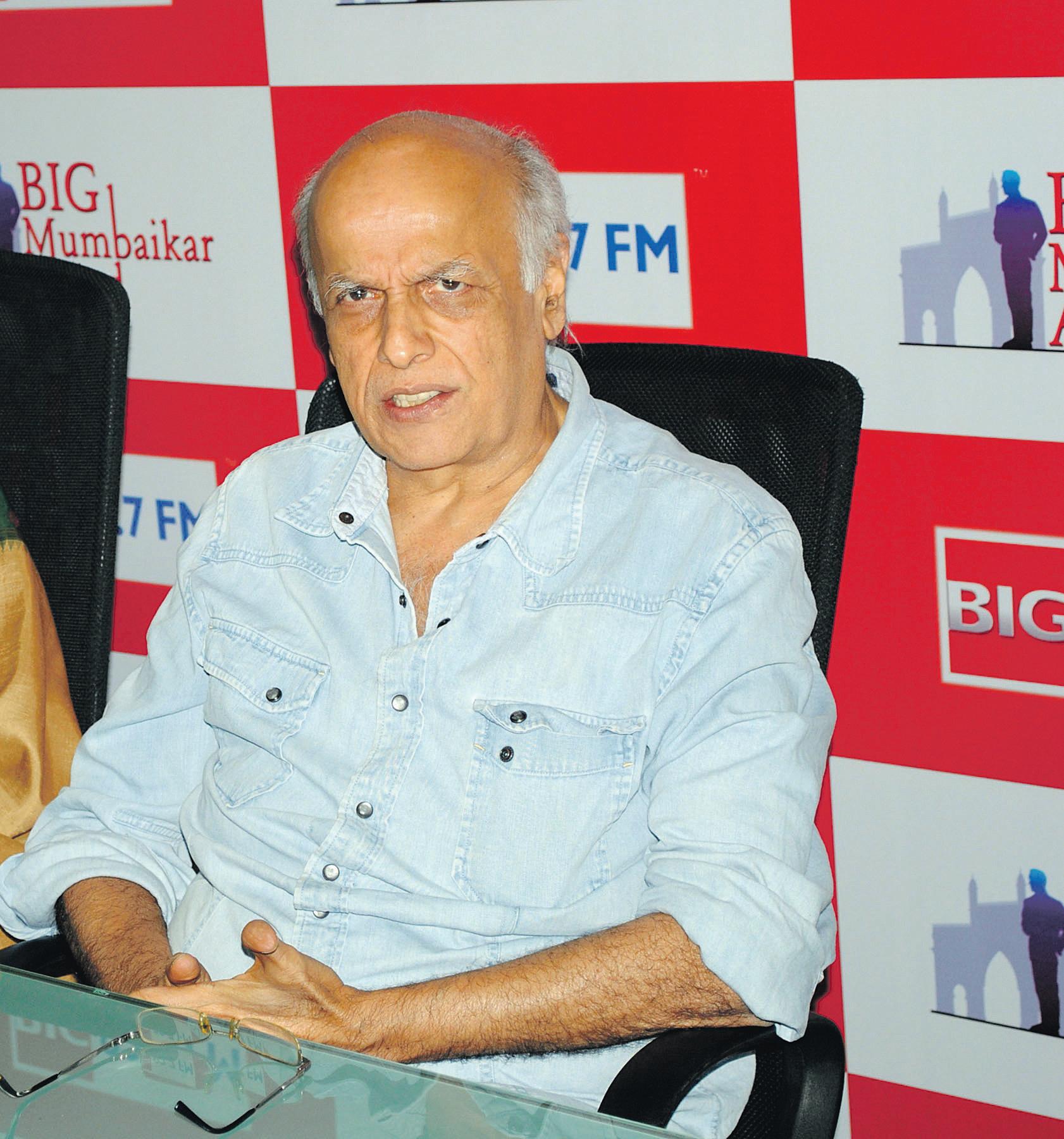
“In India we’ve always welcomed people of all backgrounds in our film industry, and some of them have gone on to do brilliantly well. Katrina Kaif is one of our leading stars today, and Kalki Koechlin has been making her mark in recent months.”
He might as well have mentioned Australian actress Tania Xaetta who did bit roles in a handful of Hindi films. Another Australian, Emma Brown Garrett, launched her Bollywood career in 2010 with the Bengali film Shukno Lanka, and then scored a role in the Deols’ Yamla Pagla Deewana. Emma was seen in Rohan Sippy’s Dum Maaro Dum shortly, which stars Abhishek Bachchan. And of course we had the Bollywood baddie Bob Christo who passed away this year, also of Aussie origin. The India-born and NIDA-trained Nick Brown (Kites) has also been successful in the Indian
So how would Anupam advise Bollywood
“We’ll be looking for passion. Bina kashish (Nothing happens in life without passion). And this is especially true in Bollywood. If you have you’ll find yourself on that
And how are they going to filter through all the applications?
“Well, that’s where the legendary brains and the creative skills of the WTFN team comes in. There’s a whole army of people already vetting the applications that have come in. And I can tell you we’ve been bombarded with applications, which is just great!”
Even as he spoke on Indian Link Radio, one caller, the singing-dancing senior Gargi Shah, rang in to ask if she stood a chance. Anupam gently guided her to the SBS website and urged her to apply.
While there will no doubt be great interest among the Indian community here, will the mainstream tune into the series at all?
“I’m sure they will,” Anupam stated emphatically. “Look, I ensured for myself before getting into this, that it would not relegate Bollywood to some freak status, or, you know, somehow make us the ‘item number’ of the world’s entertainment industry. The UK version of the show not only had many non-Indian viewers, but also non-Indian participants, one of who was in the final six that went to Mumbai. And do you know, it’s only been a week since the series was announced by SBS, and this is the fourth media interview I’m doing, and the first to an Indian channel!”
So far, he revealed, there’s been a good mix of Indian and non-Indian applicants according to his information. (Of course he hasn’t seen the applicants – he will see them on camera with the rest of us).
What about language barriers for the non-Indian participants?
“When has language stopped anyone? Katrina Kaif, or even the southern actresses Hema, Sridevi – why even Arnold Schwarzenegger – made it despite language issues, didn’t they?”
to play a role in Mahesh Bhatt’s (right) next film
And there’s really plenty to look forward to, Anupam says. “In our films, it’s not just about the lead man or lead girl. We have the poor suffering mother, the unmarried sister, the hero’s best-friend-side-kick, the seductress vamp, the terrorizing villain, the comic… so don’t be shy, just go for it!
Apan ko bhi hero
Now that you’ve got it straight from the expert himself, go for it, non-Indian readers!
Bollywood Star is slated to go on air on SBS ONE in 2012.

Anupam Sharma spoke to Priyanka Tater on Indian Link Radio
India, the reluctant superpower continued from page 20 on the country’s relationship with the USA and how, despite frequent dialogue between the two nations, results remain ordinary.
India’s economic story
The valedictory lecture was on India’s economic story from Jawaharlal Nehru to Manmohan Singh. Dr Isher Judge Ahluwalia is Chairperson, Board of Governors of the Indian Council for Research on International Economic Relations. Despite the magnitude of the topic, she gave attendees a very concise, yet insightful discourse on the subject, highlighting the various defining moments that helped propel the country’s economy, and how since the 1990s, the
Government has adopted a bolder approach to reform policies. However, Dr Ahluwalia pointed out that despite the growth of over 8% GDP in the last decade, India has had to constantly grapple with a traditional mindset and disagreements on several policies with political parties. In her view, if India is to become a superpower, the Government would have to be prepared to deal with several challenges ahead.
First and foremost, sustaining the high growth rate of the economy is a huge challenge since it is a demanding (but possible) task to maintain this growth for extended periods. The urban sector can generate and sustain economic growth if
the cities can cope with the constant flow of people migrating in search of employment. Dr Ahluwalia hoped that in the near future, a plan would be designed to connect the rural-urban divide. Labour laws need to be revamped so that more employment opportunities are created for the people; this can be achieved only through further investment in education and skills – an area that has been overlooked. She said emphatically, “If we don’t empower our youth with human capital, it would result in an economic disaster.” One prime factor that has held India back over the years has been poor infrastructure and this demands a collective effort not just from the
Government, but also a joint effort from the public and private sectors. Dr Ahluwalia ended her discourse by saying, “If these challenges are met, we would see a resurgent and more self-confident India.”
Director Prof Mattoo and his team did a magnificent job in organizing a conference of this stature with tremendous professionalism, and have achieved their objective of explaining contemporary India to Australia through this forum. The Institute has now announced their next project: Asia 2020: Indian and Australian Perspectives, to be held in Kolkata on December 5-6, 2011.
22 <> OCTOBER 2011 INDIAN LINK
SPECIALREPORT www.indianlink.com.au
“BollywoodStar continues SBS’s commitment to pushing the boundaries with commissioned content with this exciting take on the talent search format”
Michael Ebeid, SBS Managing Director
Sydney’s Anupam Sharma (above) will head the judging panel to pick an actor
Star in a shiny
silk sari
A prolific writer is making inroads within Australia’s fine arts industry, bringing relevant Indian community issues to the stage
BY SHERYL DIXIT
As an award-winning Indian-Australian writer in Australia, Roanna Gonsalves is now in elite company, although she is reluctant to admit it. However, modesty aside, it’s a journey that has been anything but easy. It’s taken her a lot of time, effort, vision, dedication and hard work to get there, and of course, being talented has helped.
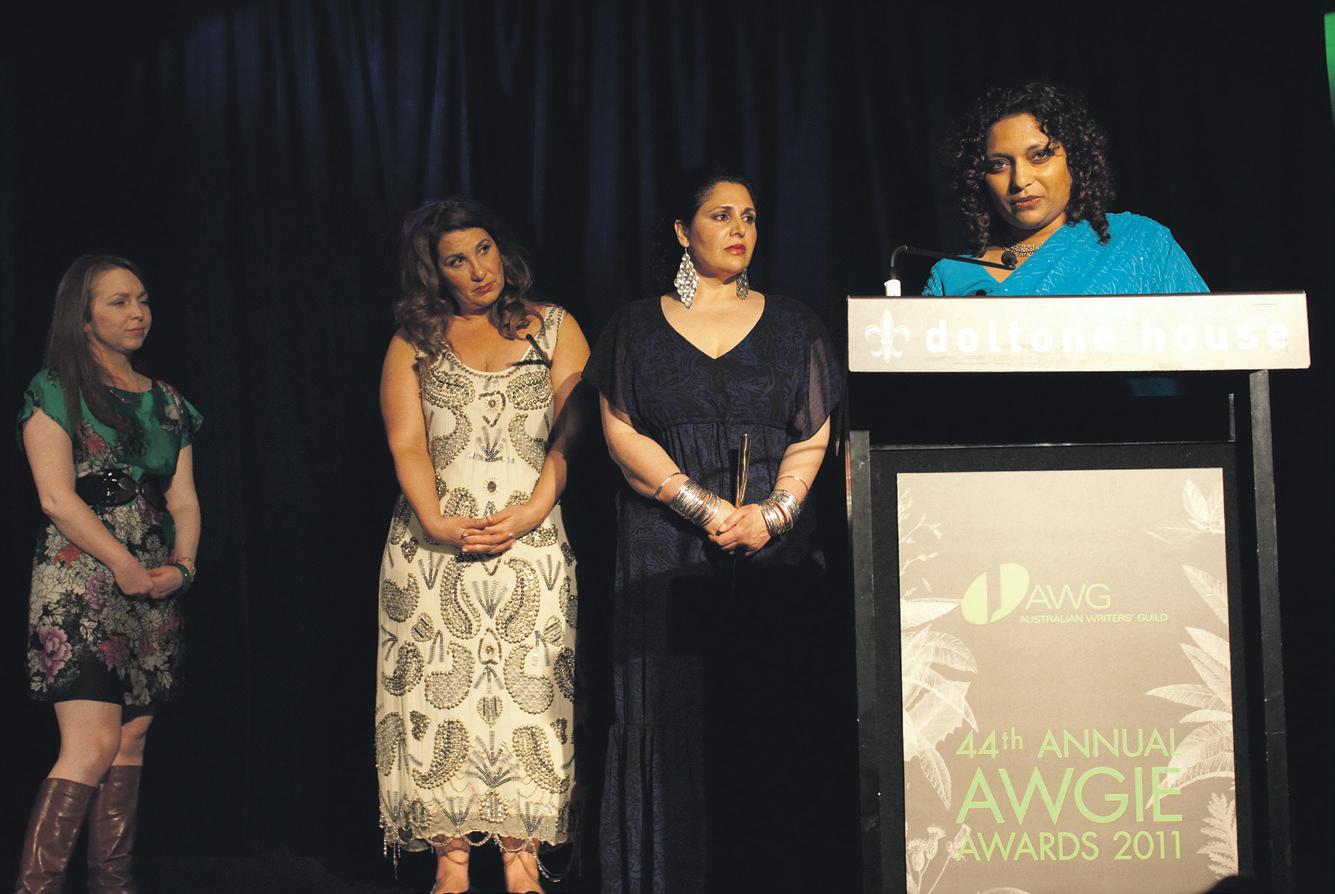


A unique subject
Roanna recently won the prestigious Australian Writers Guild award for ‘Best Script’ in the Community and Youth Theatre category for the play Yet to Ascertain the Nature of the Crime, with collaborators Damien Millar, Raimondo Cortese, Görkem Acaroğlu, and the company of actors. What is unique about this sell-out play which was scripted by Roanna, is that it takes on real perspectives of the assaults on Indian students in Melbourne through the actual words of the students, as well as education agents, counselors, Indian Australians, and even a couple of young men who hold white supremacist views.
For Roanna, writing the script was, to put it mildly, “challenging”. “Constructing a script from over forty hours of material into just an hour and trying to include all the nuances from the protagonists was one of the hardest things I have ever had to do,” confesses Roanna. “I wanted to include all the stories, the heart-wrenching, funny, unusual ones, all of which had to combine and flow to make a credible performance.”
Roanna had to work on pre-recorded interviews with students and others, as they explained their perspective on the attacks and how they felt at the time.
Intriguing execution
So how did the concept for such an unusual play come about?
“Görkem Acaroğlu contacted me to work on the script, which had come about through the idea of telling the real story by the students and others, rather than taking the view portrayed by the vociferous Indian and Australia media, some of which was frankly, over the top,” explains Roanna. “The cast and crew sat together in a week-long workshop in Melbourne and we threshed out the real issues behind the attacks, the ones that went beyond racism, like class and gender, which brought out completely different levels of complexity on the situation. For us, it was not a defining subject of whether the attacks were racist or not, it was about telling the students’ stories in their own words and voices, and bringing out the myriad issues behind what was seen as the main one”.
Roanna admits that she didn’t quite expect the play to be so successful. As a creation in what’s called ‘verbatim theatre’, the format is to use exact recordings from the subjects, even with the hesitancies of speech, pauses, erratic diction, etc., to give the audience a true feeling of the protagonist’s mind. And by adding humour, music, and even a bit of Bollywood
dancing, Yet to Ascertain…. presented a nuanced view of the attacks, with a space in which the actual words of the victims can be heard.
“I went to the viewing of the play at least three to four times, and every time, the audience reaction absolutely amazed me!” says Roanna.
“They would laugh, cry, go through a series of emotions that perfectly matched the performance…I couldn’t believe how connected they were with what was happening on the stage. I felt wonderful that the play had the power to involve the audience, and helped them understand the reality of the issues through the words of the students themselves”.
Winning work
And what about the award, was that expected?
“Well, when your play is nominated, you hope that you’ll win. Although I hoped, I didn’t really think we would bag the award. But when the magic moment happened, I felt thrilled and terribly excited,” recalls Roanna.
Luckily though, she had planned what to say as she walked to the stage in her shiny blue sari. In her acceptance speech, Roanna acknowledged other women writers who had made it easier for her and her genre to gain acceptance for their work. She also talked about the plight of Indian students, and specifically dedicated the award to two young students Nitin Garg and Tosha Thakkar, who were the victims of crime. What this enthusiastic writer didn’t realize until later was that, while all the other award-winners were given exactly a minute to make their acceptance speech, hers went on for a while. In fact, the number system on the screen behind her was turned off, as the audience avidly listened to what she had to say.
“I had no idea,” says Roanna. “The students issue has always been close to my heart having been one myself, and I was simply glad for the opportunity to briefly explain their issues to such a prestigious audience”.
“People came up to me later to say that they were enlightened by my speech, which made me feel good because I thought I
People came up to me later to say that they were enlightened by my speech, which made me feel good because I thought I had been running on and repeating myself!
You have to be involved and be seen, you have to put your work out there for review through various writers forums, perhaps through mentoring, and sooner or later you will get recognized
had been running on and repeating myself!” she adds with a laugh.
Scripting stripling
Roanna’s talent for scriptwriting found expression at a very young age, where she wrote short plays to be enacted by her sister and cousins at family functions and events at the local church. She graduated in English Literature from St. Xavier’s College in Mumbai, and worked extensively within the fine arts industry in India, building up her experience and portfolio as a reporter, in script-writing and commercial videos. She came to Australia to do her Masters in Professional Writing at UTS, and has since scripted and coscripted for plays, written articles, done documentaries and educational videos and a whole host of other initiatives too numerous to mention here. However, Roanna has found working in the fine arts industry in Australia a challenging, yet rewarding one. “It takes time to gain recognition, but overall, my experience is that the fine arts industry here has been very welcoming,” she admits. “But you have to be brave. You have to be involved and be seen, you have to put your work out there for review through various writers forums,
perhaps through mentoring, and sooner or later you will get recognized. The perception about Indians in the industry is either Bollywood, or an Arundhati Roy or Salman Rushdie, but that is slowly changing.”
Roanna also feels that there’s growing awareness of multicultural issues in the broader community. “People in theatre are becoming more aware of the need to tackle sensitive multicultural issues through this powerful medium. If we can bring issues that we face onto the stage, it will be a true achievement, and that’s what I aim to do,” she says. “Theatre-goers have always been predominantly Australian but that will and should change with more Indian/subcontinent involvement, as actors, writers or the audience. And of course, when the issues of the community are highlighted on stage”.
Nothing’s gonna stop her Among other irons in Roanna’s fire are a PhD at UNSW, a project with the Bell Shakespeare company, a documentary with Ana Tiwary of inDiVisual Films and her baby, a book which will be a collection of short stories. So how does she manage to balance her personal life with an increasingly prolific career?
“My parents have been wonderfully supportive in moving here and helping with my 8-year-old twin sons,” says Roanna gratefully. “The past couple of years have been difficult, but now I’m getting into my stride and am happy to take up any challenges that come my way.”
Roanna’s passion and drive are inspirational, not just for budding writers but for the broader community, as it takes courage to speak up for causes that most of us would rather lock away and forget. The cast and crew of Yet to Ascertain the Nature of the Crime have been invited to perform at Mumbai’s renowned Kala Ghoda festival in 2012. Roanna is currently seeking sponsors to help them get to Mumbai, an achievement that will be truly satisfying for this talented writer. If you think you could help, write to her at roannag@gmail.com
OCTOBER 2011 <> 23 INDIAN LINK
SPECIALREPORT www.indianlink.com.au
Roanna Gonsalves with Georgina Naidu the star of her play Yet to Ascertain
MC Libby Gorr listens on as Roanna makes her acceptance speech
Stories by Shivangi
A budding Adelaide writer has just published her first book
 BY FRANKEY GERARD FERNANDES
BY FRANKEY GERARD FERNANDES
She is only 12 years old, but her passion for writing has already led this budding Indian Australian novelist to want to inspire other children to take up their pens and write.
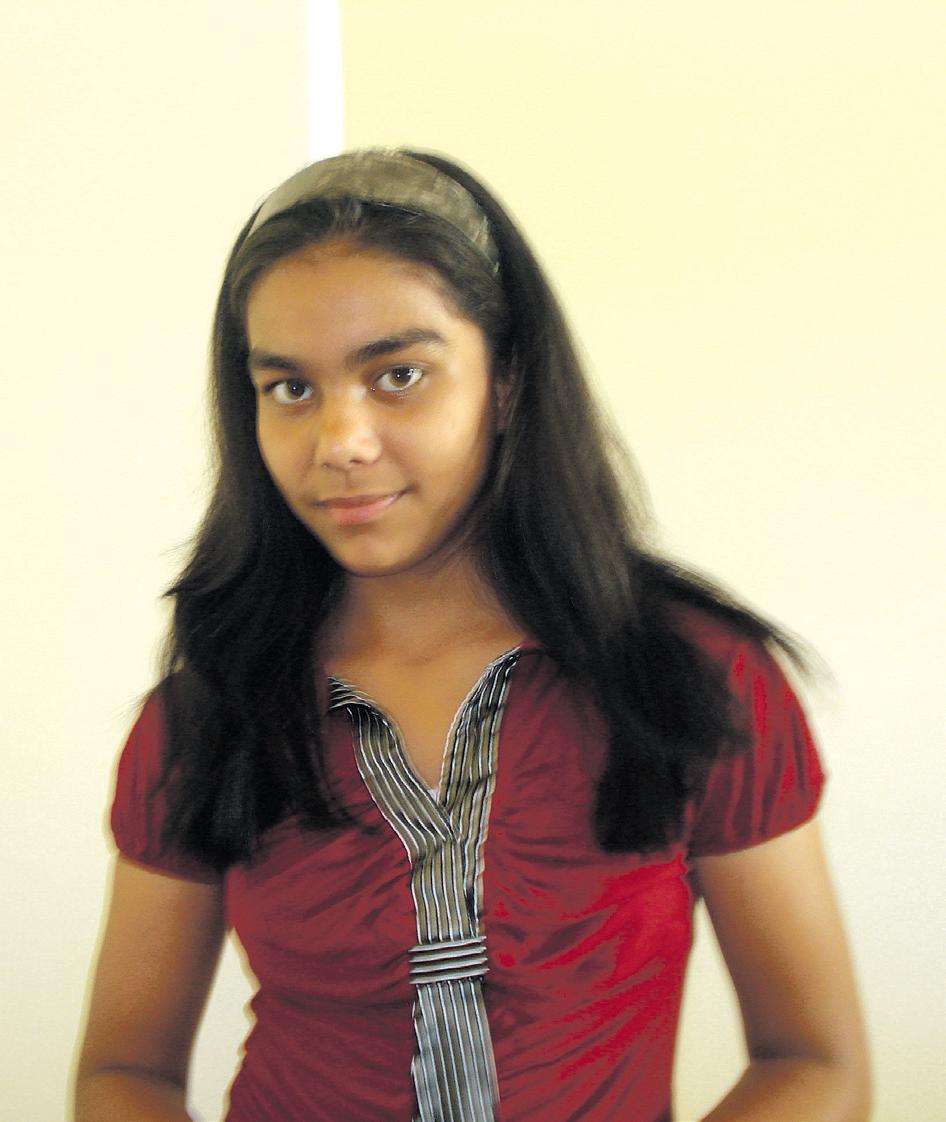
Meet Shivangi, the only daughter of Dharmender and Ritu Sharma who relocated from northern India to Adelaide in 2007. Perhaps it was the upheaval of moving to Adelaide that gave her material to work with, heightening her sense of discovery and fuelling an interest in linguistic expression, as one could speculate. However, Shivangi has enthusiastically penned no less than 15 short stories in less than a year, and her father has proudly complied them into a self-published book entitled Holiday Gossips, which he has begun to sell amongst the Indian community.
Shivangi’s grandfather RS Sharma wrote and edited stories in India, so perhaps the urge runs in the family. But what truly prompted this student of Linden Park Primary School in South Australia to take up writing a book? With a smile, Shivangi says, “I started writing these stories when I was in Year 5 and finished them in Year 6. Then dad asked me to publish them, and of course I thought he was joking, but he wasn’t! We got them published this year when I was still 11. This book is dedicated to my grandfather.”
Far from the stereotyped only child tied to a computer screen, Shivangi is a healthy and active young girl who enjoys scuba diving, has a keen interest in flying and aspires to become a pilot, and of course, keep on writing stories.
The fifteen short stories which make up the collection are, according to Shivangi, works purely from her imagination. They draw on her own experiences of relocation, life in India and Australia, and deal with
issues that other children in her situation struggle with.
While describing her favourites like Christmas Parade, A Trip to Boarding School and Shivangi’s Stressful Day, she elaborates on the concept behind some of the stories.
“I think that Christmas Parade is a good story as there are talking animals in it. I thought kids might like that because it’s a good creative idea. A Trip to Boarding School is a funny and surprising one which explains about how I want to be a pilot,” she says. “Other stories in the book are good as well and
they all have a different aspect and idea so kids know what it’s like to suffer, to have fun and to have a surprising day,” adds the young writer.
Shivangi also admits, “I wrote all the stories on my own, but mum helped me do the cover and dad did the info page.”
With such encouragement perhaps Shivangi will be the next Arvind Adiga or Arundhati Roy, or perhaps she will simply find joy and meaning in life through contributing this talent to her community, expressing herself through this creative art and allowing her stories to resonate with others. Isn’t that what the arts are all about? Well done, Shivangi!
Maths can be cool!
A Year 7 student talks to his class mate about coming tops in a state-wide mathematics competition
BY VINEY KUMAR
Seyoon Ragavan, age 12, Year 7 from Knox Grammar School, Wahroonga in NSW, has topped this year’s UNSW Mathematics Competition, competing against over 300 of the best mathematical brains in the state. He scored 29 out of 30 in the demanding 3-hour exam in the Junior Category - an exam open to students up to Year 10 in NSW and Canberra.
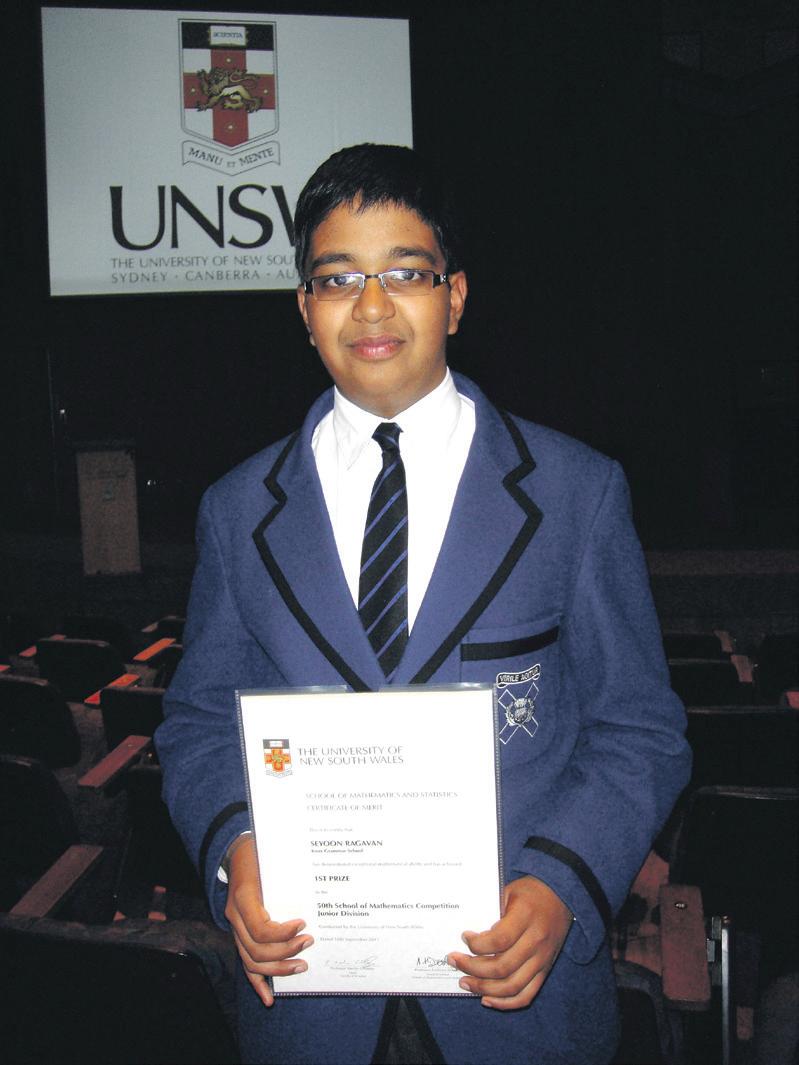

Viney Kumar: Seyoon, how do you feel after this magnificent achievement?
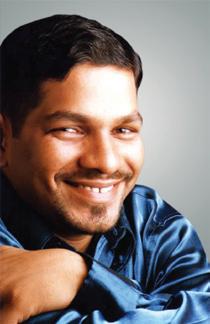
Seyoon Ragavan: I guess it twas a shock when I found out. But other than that, a great sense of euphoria and thrill. I knew I’d always come within the top few in the nation in high-level mathematics contests like this, but I’d never won one. It really was a great feeling!
VK: When did you first get truly interested in the subject of mathematics?
SR: Year 4 or Year 5.
VK: Which is your favorite branch of mathematics that truly appeals to you?
SR: Definitely number theory! I love
the way it has to use all this crazy maths to prove something that looks ridiculously simple. Take Fermat’s Last Theorem, for example. I also like the ‘crazy maths’ involved here - though I only took that up recently.
VK: Who are your greatest inspirations?
SR: I’ve gained inspiration from a lot of places... my parents inspire me a lot. Some past legendary mathematicians that inspire me are Leonhard Euler and Carl Friedrich Gauss. I’ve also been inspired by some past Maths Olympiansnamely Sampson Wong, Andrew Elvey Price and last, but definitely not least, Terry Tao.
VK: How did you get to where you are today? How much effort did you have to put in?
SR: Parents, parents, parents - I cannot stress enough the importance of my parents in my
mathematical development. They still jokingly tell me tales of back then when I was 3 or 4, and how I was struggling with principles in mathematics (though I wasn’t handling stuff for 3-year-olds). Thanks to them, I’m where I am today. From about Year 2 onwards, my teachers have also been of paramount importance in this journey (and still are). I can’t forget the painstaking effort involved in the amount of support I was given. On my part, I did have to push through a lot of obstacles; I could never walk around them because avoiding challenges simply means that you won’t improve. I had to break all of them. My improvement rate, now when I look back at it, was quite unrealistic. For example, in Year 3, I got a Distinction in the Year 5 Australian Mathematics competition; in Year 4 I got a High Distinction and in the Year 7 paper, just 4 marks short of a prize! But a lot of it was effort and
this, I guess, is the culmination - for now. Hopefully there are many more to come.
VK: What are your plans for your future?
SR: I don’t know. I can tell you one thing though, whatever I end up doing later on, it will involve some form of thinking outside the square. In other words, I won’t be sitting at a table doing stuff that calculators are made to do.
VK: What do you do in your free time?
SR: I do a lot of things. I love music - I play the drums, mridangam and piano, and I sing both carnatic and western music. Otherwise, I amuse myself on Math Links (the venerable Facebook of Mathematics), or do some computer programming.
VK: What advice would you give to future mathematics aspirants entering this competition who have a passion for maths like you?
SR: Don’t walk around those obstacles. Face them, break them and move on to the next one. Do it with all your heart, throw in all your energy, and you’ll be rewarded. Make sure your passion is known to the rest of the world - be proud of it. Love your numbers and seek the answers. Regarding the competition itself, expect the unexpected!
24 <> OCTOBER 2011 INDIAN LINK THEYOUNGONES www.indianlink.com.au
On my part, I did have to push through a lot of obstacles; I could never walk around them because avoiding challenges simply means that you won’t improve.
Seyoon Ragavan of Knox Grammar School
I wrote all the stories on my own, but mum helped me do the cover and dad did the info page.
Muslims fund, organise this Ramlila
Naseem Khan is satisfied with the modest earnings from his small tailoring shop. But every year around Dusshera, Khan turns slightly worried.
He starts accepting orders in bulk to raise his income, not for his family, but for raising funds for organising Ramlila: the mythological play based on the Hindu epic Ramayana.
Like Khan, many Muslims in Mumtaz Nagar village of Uttar Pradesh’s Faizabad district have been keeping alive the village’s decades-old custom, under which all arrangements for holding Ramlia are looked after by members of the minority community.
“We take pride in following such a tradition that exhibits communal harmony in a true sense. Every year when we organise the play, we get a unique feeling of serving the almighty. After all, our Hindu brothers are the creation of the same supreme power that has made us,” 42-year-old Khan said in a telephone interview from Faizabad, some 126 km from Lucknow.
“Besides entertainment and enjoying other religious aspects, we derive a great satisfaction by organising Ramlila that, in a way, instills a sense of brotherhood among members of the two communities,” he added.
Muslims organise the mythological play under the banner of Ramlila Ramayana Samiti (RRS), a committee that was constituted by Muslims of Mumtaz Nagar village around 47 years ago for the promotion of communal harmony.
Mumtaz Nagar has a population of around 800 people, more than 65 percent of them Muslims.
“Being a Muslim-dominated village, Mumtaz Nagar used to be livelier on Muslim functions than Hindu festivals. As there was a limited population of Hindus, our ancestors thought being in majority they should do something for enhancing the celebrations of Hindu festival,” said Majid Ali, RRS president.
“Muslims from various walks of life are in the committee. Irrespective of their financial situation, Muslims of the village make every effort to generously contribute the funds required for staging the play. Those Muslims who cannot contribute anything for the play don’t mind working as labourers for making arrangements for the play,” he added.
This time the Muslim-funded Ramlila was between October 1-8, and was staged on an elevated cemented structure that was built by the Muslims when the first Ramlila was staged in 1963.
Interestingly, Muslims have not confined themselves only to the contributions for the Ramlila. A few among them enact the play too.
“Though the protagonists of Ramlila are Hindus, a few Muslim villagers also play small roles that also fosters bonding between the two communities,” said Ali.
New Puja wardrobe: Jeggings, maxis, gowns
It’s those five days when the closet gets a facelift. And this Durga Puja, it’s not just the elegant saris and ethnic kurtas that have made it to the wardrobe - jeggings, gowns made of Baluchari saris, maxis and Benarasi corsets have followed suit.
Popular markets are flooded with narrowcut jeans, jeggings, butterfly cut tops, spaghetti strap gowns, printed short dresses and maxis. Shopkeepers say the demand for western dresses has gone up this season.
“In our retail stores, western dresses for both men and women are selling more than traditional dresses,” said Manish Agarwal, business head (east) of Future group, which operates popular retail stores such as Pantaloons and Big Bazaar.
“For women, the first choice is narrow cut jeans, a mix and match of loose floral print tops with jeggings and for men the most popular clothes are short length cotton shirts with narrow-cut jeans, cargo shirts,” Agarwal said.
As per tradition, men and women, irrespective of their age, put on new clothes during the five days of the Puja. New clothes with a touch of both latest trends and tradition are considered a must.
“Women look best in saris during Pujas. But this year, other clothes such as Anarkali style dresses, one shoulder dresses, kalidar kurtus and bandhgala waistcoats with churipants are also getting a good response,” said Pali of the renowned fashion designer duo Mona-Pali.
Agnimitra Paul, a fashion designer who has designed outfits for Bollywood personalities like Sridevi and Esha Deol, says: “Young girls who love to wear gowns during pujas can opt for gowns made of Baluchari saris.”
However, the demand for conventional red and white saris that ooze the perfect look for the biggest cultural gala of eastern India remains high.
“At this time, the sale of saris increases by up to 75 percent. Saris such as jamdani, tussar silk, pure silk, dhakai benaroshi, rajshahi silk and ikkat are hot favourites,” said Binoy Chandra Pal of the 100-year-old Ramprasad Bastralya Sari store.
On the other hand, young men are also experimenting with Indo-Western fashion.
“Young men and college-goers are also trying Indo-Western fusion clothes such as jeans with traditional kurtas which has a lot of embroidery work on it,” said Abhisek Dutta, a designer.
Short-length cotton shirts with narrow-cut jeans, cargo shirts in mono colours, striped and check shirts are also doing the rounds.
However, some designers feel Puja being a traditional festival, people should stick to dhotis, kurtas and sherwanis.
“Men look best in traditional and ethnic dresses. Young men now try colourful tasar dhutis (Bengali for dhoti) along with kurtas. They also try sherwanis,” said Sarbari Dutta, who designs men’s clothes.
3 young Indian American scientists honoured by Obama

Three Indian Americans, Dr Kartik
A Srinivasan, Sumita Pennathur and Hari Shroff, are among 94 researchers honoured by President Barack Obama with Presidential Early Career Awards for Scientists and Engineers.
The presidential early career awards embody the high priority the Obama administration places on producing outstanding scientists and engineers to advance the nation’s goals, tackle grand challenges, and contribute to the American economy, according to the White House.
El Paso, Texas-born Srinivasan, 31, is the project leader of the research group on nano-fabrication at the Centre for Nanoscale Science and Technology. He has published over 40 peer-reviewed papers in scientific journals.
Foxboro, Massachusetts-born Pennathur, 33, is assistant professor of mechanical engineering at the University of California in Santa Barbara. Her research is focused on using fundamental fluidics knowledge at both microscale and nanoscale to create novel devices for practical applications.
Kerala-born Shroff, 29, heads the lab at the National Institute of Biomedical Imaging and Bioengineering, a part of the National Institutes of Health under the Department of Health and Human Services.
Obama said, “It is inspiring to see the innovative work being done by these scientists and engineers as they ramp up their careerscareers that I know will be not only personally rewarding but also invaluable to the nation.
“That so many of them are also devoting time to mentoring and other forms of community service speaks volumes about their potential for leadership, not only as scientists but as model citizens,” he said.
India, Russia to review defence ties

India and Russia began a review of the entire spectrum of their defence cooperation apart from exchanging views on regional and global security at the 11th inter-governmental commission on military technical cooperation in Moscow recently.
The meeting was be co-chaired by Indian Defence Minister A.K. Antony and his Russian counterpart Anatoly Serdyukov.
Among the issues that the two sides discussed, included the joint development of the fifth generation fighter aircraft (FGFA) and medium transport aircraft (MTA). Indian Air Force will get 250 FGFAs and 45 MTAs later in this decade.
These apart, India and Russia will also review the refit of Admiral Gorshkov aircraft carrier that the Indian Navy bought in 2004. The delivery of the warship has been delayed by four years and is expected to arrive only by the end of 2012.
Antony, who arrived in Moscow on an official visit, will “discuss urgent issues of bilateral relations in the (military) sphere”, the Russian defence ministry said in a statement in Moscow
The head of Russian state arms exporter Rosoboronexport, Anatoly Isaikin, said in September that India remains Russia’s largest strategic partner in military-technical cooperation.
He said Russia was taking part in 20 tenders in India, with which it has a military-technical cooperation agreement until 2020.
The cooperation programme stipulates that Russia will transfer the K-152 Nerpa attack submarine to India on a 10-year lease by the end of 2011. The deal was signed in 2004.
Other aspects of cooperation include the contract to supply India with 80 Mil Mi-17-V5 helicopters, four of which were delivered recently to IAF. The contract will be completed by the end of 2013.
The Indian delegation includes Defence Secretary Shashikant Sharma, Secretary (Defence Production) Shekhar Aggarwal, Lt Gen M.S. Buttar, Air Marshal R.K. Sharma, Vice Admiral N.N. Kumar, DRDO Chief Controller of Research and Development Avinash Chander, Hindustan Aeronautics Limited chairman and managing director Ashok Nayak and Director General (Acquisition) Vivek Rae.
Kerala author happy to figure in Nobel shortlist
Leading poet and critic K. Satchidanandan is happy to figure on the list of 18 probables in the race for the prestigious Nobel Prize in Literature this year.
Speaking to the media in Kochi recently, the veteran writer expressed happiness at the news.
“I feel it is as good as getting the award that my name is there in the list of probables,” said 65-year-old Satchidanandan, who was in Kochi to take part in a meeting.
He is now based in Delhi.
A multifaceted personality with works in both Malayalam and English, Satchidanandan is an academician, editor, translator and playwright.
Born in Thrissur, he started his career as a professor of English at K.K.T.M. College, Pulloot in 1968, and moved to Christ College in 1970. He voluntarily retired from this post in 1992 to take up the editorship of Indian Literature, the English journal of the Indian National Academy in Delhi.
In 1996 he became the executive head of the Sahitya Akademi for a decade (1996-2006).
He currently edits Beyond Borders, a journal of South Asian literature and ideas. Satchidanandan is married, with two daughters.
He has to his credit 22 collections of poetry, 16 collections of translations of poetry and 19 collections of essays on literature, language and society.
He has 24 collections of his poetry in translation in 16 languages including Tamil, Hindi, Bengali, English, French, German and Italian.
He has introduced several poets like Garcia Lorca, Alexander Block, Pablo Neruda, Cesar Vallejo, Bertolt Brecht, Paul Celan, Zbignew Herbert, Eugenio Montale, Giuseppe Ungaretti, Mahmoud Darwish and Yehuda Amichai to Malayalam readers through translations and studies.
OCTOBER 2011 <> 25 INDIAN LINK
IANS
Photo: AP
Formula One racer Daniel Ricciardo of Australia performs, as the Presidential Palace stands in the background in New Delhi, Oct. 1, 2011. Ricciardo performed on Delhi’s famous Rajpath in a demonstration run ahead of the country’s inaugural Grand Prix later this month.
Waves of melody at Surtarang 2011
As we all know Australia is a multicultural country and the true spirit of India lies in its unity in diversity. We experienced this sentiment in the national talent hunt titled Surtarang 2011, organised by the Sangam Kala Group, Australia.
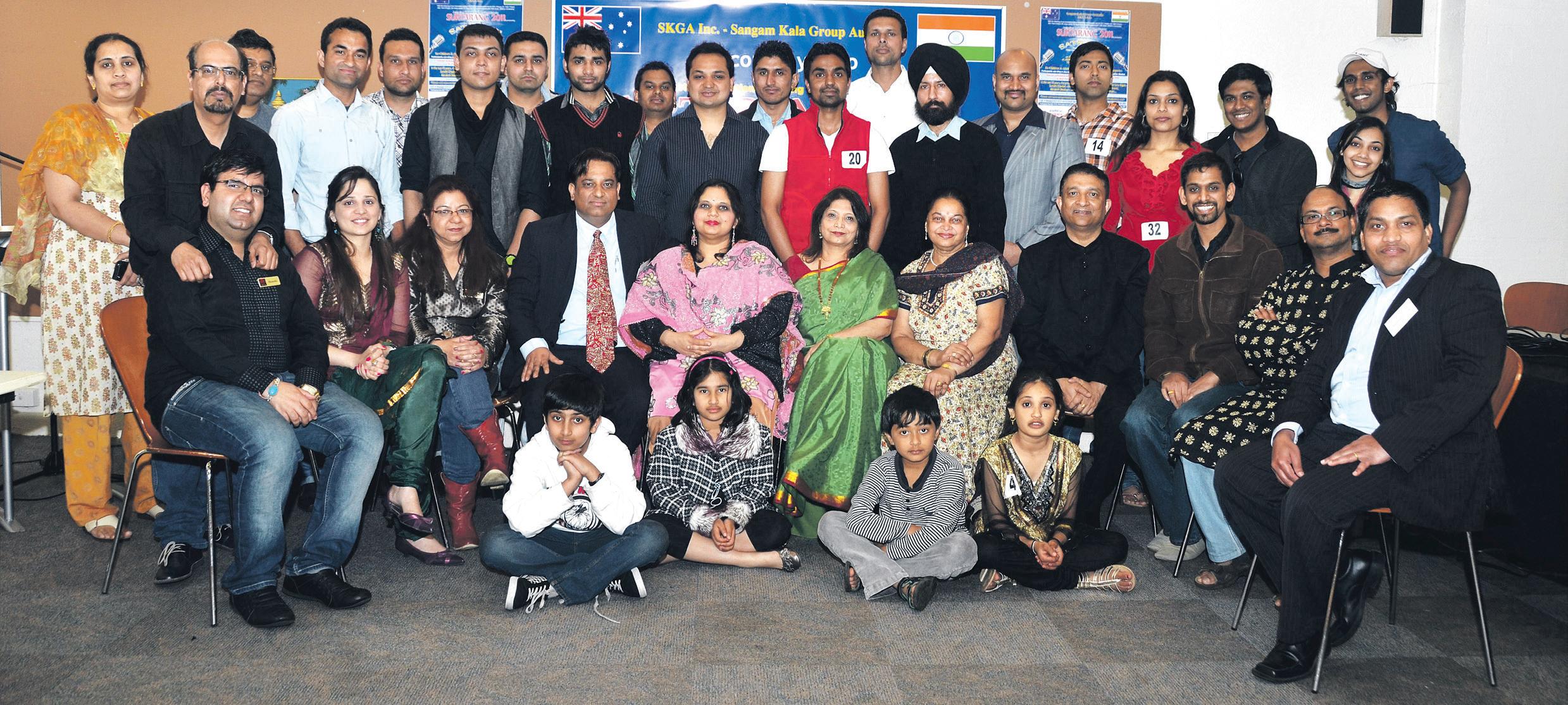
As its name indicates, Sangam Kala Group is an independent, non-profit incorporated association which aims to bring hearts and souls together by promoting Indian music, dance, drama, films and related cultural activities, including Bollywood entertainment.
On September 17, the group hosted auditions for Surtarang 2011 and a talent hunt for Satrangi 2012. The programme was held in Ashburton Library hall from 9am to 4pm, with couple of breaks. The judges were none other than the multi-talented Shriram Ayyar and Sanjay Bose. Anchored by Anu Sood with sound engineering by Aman Kalyan and Kavitha Prakash, the competition is considered as a gateway to a career in Bollywood films, Sa-re-ga-ma-pa, Indian Idol, X-factor and TV serials as well.
The programme began by lighting the Saraswati lamp by Mrs Madhu Kumari, followed by the Indian and Australian national anthems, and the Saraswati Vandana. Special guests included Mr Murali Dharmapuri, Telugu Association and Mr Winston Furlong, film director/writer.
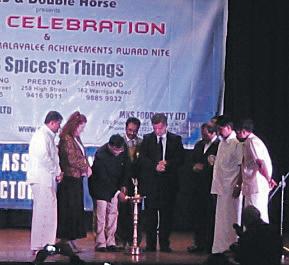
About 90 songs were sung by the participants aged 6 years and above. The wide variety of songs included Hindustani classical, carnatic classical, light music, folk songs, old and new filmi songs, devotional and patriotic numbers, Sufi music and ghazals in Hindi, English, Sanskrit, Kannada, Tamil, Telugu, Punjabi, Afghani (Pushto) and Urdu.

than their mother-tongue and some rendered their own compositions too. Some of the tender voices we heard include songs in Kannada, Tamil and Hindi by Diya, Mahati and Neil. We witnessed some of the best voices singing the compositions of Noble prize winning poet Rabindranath Tagore and Gnanapeetha Award winner D R Bendre of Karnataka, among others.
The event was very well organised, and the audience was mesmerised by the musical atmosphere, as exceptional voices performed wonderfully irrespective of their age, language, or
Gaiety at MAV’s Onam
The major sponsors of the event were MTA Tax Accountants, Funky Curry, Dhoom Films, Baba Entertainment, Amba Bazzar, Tandoori Junction, Berkeley College, MO’s Mobile & Amritsari sweets.

All credit goes to Sri Nawal Moudgil and his team for organising such a wonderful event and for encouraging people to bring out their hidden talents. We appreciate his patience, effort and service to Indian music in Australia, and wish his team all the very best in their future endeavours.
Sreenivasa Murthy/ Veena Krishnappa
celebrations
The Malayalee Association of Victoria (MAV) headed by President Mr Varghese Pynadath, organized elaborate Onam celebrations with a great deal of pomp and splendour at the Springvale Town Hall on September 24. Onam is a prominent festival in the state of Kerala, and legend has it that the festival is celebrated to welcome the spirit of King Mahabali under whose rule the state is believed to have gone through affluent times. It also marks the beginning of the harvest period in Kerala.
The occasion was graced by Minister of Multicultural Affairs, Hon. Nick Kotsiras; Mayor of the city of Dandenong, Ms Roz Blades; President of the Federation of Indian Associations of Victoria, Mr Vasan Srinivasan;
Consulate General of India, Dr Subhakanta Behera; and Adjunct Fellow of the Monash Asia Institute, Ms Tara Rajkumar. Living abroad, it is an arduous task to recreate the same enthusiasm as back home, but the organizers successfully managed to capture the true essence of Onam since everything on show was quintessential ‘Kerala’ including the evening refreshments! The main attractions of Onam are Pookalam (floral arrangement) and the Sadya (elaborate meal comprising of nearly 20 dishes), and MAV ensured that these expectations were met without any restraints.
Once everybody tucked into the delicious Sadya and ate to their heart’s content, it was time to sit back and revel in the festivities. There were a host of performances by local talent who mesmerized the audience with their inventive choreography and melodies. Some of the highlights were Vice-President of MAV, George Thomas’ song and the classical dance performances that were perfectly synchronized and full of poise. The latter half of the evening featured popular stars from Kairali TV - Kalabhavan Prajod and Vodafone Comedy’s Noby & Ajay, doing what they do best – entertaining the audience with their rib-tickling sense of humour and as expected, were an instant hit with the interactive audience. They performed a few short dramas and songs that kept the audience in high spirits who, in
customary fashion, came bedecked in traditional attire. It was pleasant to see a good number of families turn up for the occasion and the children present behaved in a much more mature manner than the unruly group of men in the audience whose disgraceful behaviour was an embarrassment to the community.
On a more philosophical note, the celebrations also featured the acknowledgement of Malayalees who have contributed to society. This year’s winners were Mr Alexander Vadakkedom, Director of Norka-Roots (NonResident Keralites Affairs) and Mr MS Nobi.
Since it’s inception in 1976, MAV has come a long way and are one of the many pro-active organizations in Melbourne constantly striving to bring the community together through various cultural events. We wish them all success.
Sujith Krishnan
26 <> OCTOBER 2011 INDIAN LINK
STAGE
Sisters Anita and Roopa Das have been regaling Melbourne carnatic music audiences for some years, as they have been two of the most sought-after student performers in Melbourne. So it was with some anticipation that carnatic music lovers looked forward to their violin arangetram – the first for guru Murali Kumar’s Raaga Sudha school of carnatic music.
Anita and Roopa presented some very popular carnatic kritis and ragas, beginning with the ever-popular (and challenging) varnam in bhairavi, Viriboni. This was followed by the Gowlai kriti Sri Maha Ganapathe and arabi kriti Sadinchane. This was a master stroke, as many of the younger generation of carnatic rasikas warmed to the concert as they could recognise and hum together with them. The ragam-tanam-pallavi in Charukesi set to khanda-jati-triputa was competently executed and their rendering of kalpana swaras was varied in tempo and content. The concluding items that followed this focal piece were popular and well-known kritis, to which the audience could easily relate.
Sri Sridhar Chari on the mrudangam encouraged and complemented the violin duo, and Sri Thiagarajan’s kanjira provided able percussion support. It was an enjoyable musical evening, and no doubt Melbourne will see even more of the Das sisters after this successful debut duet.
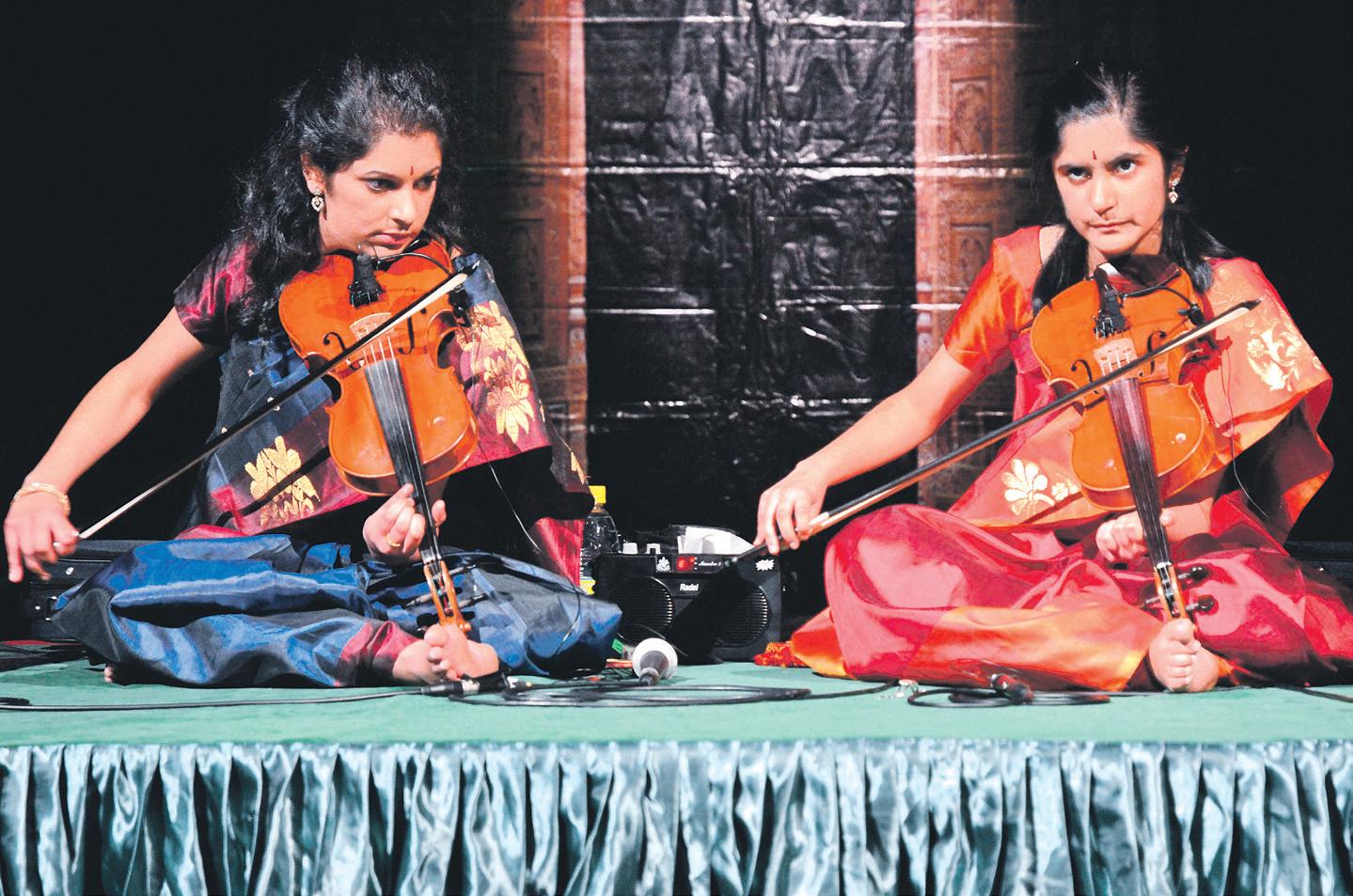
Govind and Sandhya Pillai presented a dance duet, Sutra at the Union Theatre in
Melbourne University on October 1. It is the brainchild of Govind Pillai, who interspersed dance performance with a well-made and informative documentary on Indian dance. Govind is the talented pupil of the well-known Sydney bharatanatyam dance teacher and choreographer Smt Hamsa Venkat, and his sister Sandhya has learnt kuchipudi and mohiniattam from Smt Mythili Venkatachalam and Smt Latha Mohan respectively.
The documentary on the history of bharatanatyam was well done and crisply presented on the screen; the brother and sister duo regaled the audience for almost 3 hours with a variety of dance items. They began with a kavutuvam – with Govind presenting it in the bharatanatyam style and Sandhya in kuchipudi, and it was a brisk beginning as the kavuthuvam allows the rendering of both nritta and nritya at a fast pace. In this and the next pure-dance item, the Mysore Jati, Govind Pillai simply swept through and electrified the stage with his razor sharp, precise and energetic adavus and footwork. His adavus were picture-perfect yet graceful; his footwork faultless; the expressions and natya (storytelling abilities) were superb, and watching him was a wonderful visual experience. What this young Australian man has done for bharatanatyam is phenomenal. In one single leap – through a well-produced documentary and his superb and very individual style of bharatanatyam – he has
Sandhya Pillai’s , a dance in kuchipudi style depicting the divine Goddess in all her glory – from a compassionate mother to a fiercely protective Kali, was a visual treat. In the varnam that followed, Govind kept the pace up for the entire 40 minutes, moving from jatis to sanchari bhavas where he demonstrated that his natya skills were in no way inferior to his nritta skills!
The orchestra made up entirely of young Australian born performers, was a brilliant coup. Anand Dixit on the vocal sang his way to everyone’s hearts; Venkat Ramakrishnan on the mrudangam played like a veteran and Anita Das provided
nattuvangam. She has done such a fantastic job as a Guru in her training of Govind. However, as a Hindi saying goes: guru mile anek, chela mila ek (it is easy enough for anyone to find a good guru; but for a guru to find that brilliant and committed student/pupil, he or she must be really fortunate). Hamsa Venkat is indeed lucky to have a pupil like Govind who does credit to her tutelage and the art form. He deserves to be seen by anyone who enjoys dance and cherishes that special aesthetic experience.
Siblings scintillate in classical scene Excellent Odissi delights audience
Chitra Sudarshan
The second 2011 Annual Concert of Nila’s Odissi Dance Studio was celebrated on September 17 at Flemington Community Centre and was very well attended by lovers of Indian classical dance across Melbourne. Odissi dance is one of the oldest forms of Indian classical dance from Orissa in India. The welcome address was presented by Guru Nilakshi Barah, Creative Director of the school, followed by lighting of the auspicious lamp by Chief Guest for the evening Mr Vasan Srinivasan, President of Federation of Indian Associations of Victoria (FIAV); guests Rajsekhara Acharya, President of Orioz, Oriya Association of Australia; and Kamal Dutta, President of Vic Assam, Assamese Association of Victoria. Mrs Kalpana Dutta was also a guest of honour. Ms. Dikshita was the efficient MC for the evening. After the inauguration, Guru Nilakshi Barah presented the guests of hounour with a traditional Indian shawl. In his speech, Mr Rajsekhara Acharya explained about the Odissi dance, touching upon its origination and types. He thanked Nilakshi for teaching and spreading this great art to Oriyas in the Victorian community. Next, Mr Kamal Dutta introduced Guru Nilakshi and spoke on length about her activities in spreading the Odissi dance. Finally, Mr Vasan Srinivasan highlighted the achievements of Nilakshi in her career as an Odissi dancer, Odissi guru and an active member as advisor of Federation of Indian Music and Dance Victoria (FIMDV). He encouraged her and ensured support
from his organization in her endeavours of spreading the art of Odissi dancing.
The annual achievement certificates and certificates of appreciation were then distributed by Mrs Kalpana Dutta. The main attraction of the evening was the dance performances by Guru Nilakshi and her students.

The performances began with an invocational piece from the Odissi repertoire, Mangalacharan, paying homage to Lord Jagannath a sloka and dance, which was presented by two groups of students. The first group presented a prayer to Lord Vishnu, while the second consisted of a prayer to Lord Ganesha.
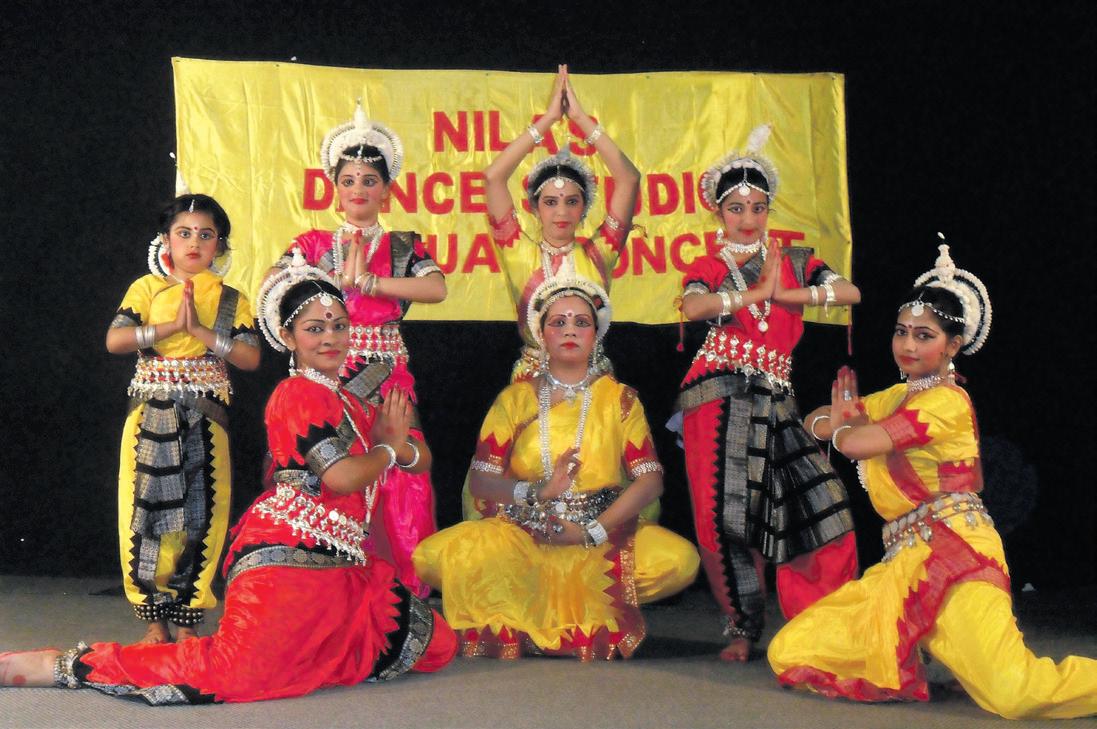
The abhinaya “Mridanga Baajee” was performed by Shreya Das, based on the Radha-Krishna theme. In the next item the dancers presented the different posses of chowka and tribhanga, based on Ek Taal and was choreographed by Guru Nilakshi.
Other pieces like Sthai, various abhinayas like the one performed by Guru Nilakshi called “Trrahimaam”, based on Lord Shiva and Durga Stuti that celebrates the homecoming of Goddess Durga were all performed with aplomb.
The last item of the evening’s program was Moksha, the concluding item of a recital, meaning “spiritual liberation”. This dance represents a spiritual culmination for the dancer who soars into the realm of pure aesthetic delight, and was effectively presented by Bavani and Snigdha. Guru Nilakshi joined with the rest of the participants – Neelima, Ruchika and
Priyanka in the cosmic chant Buddham Charanam Gachami, praying for universal peace and harmony.
The evening was well attended with a packed house. The performances by Guru Nilakshi and her students was enjoyed and appreciated by everyone, touching upon the high standards of professionalism and performance. The concert came to an end with the vote of thanks from Guru Nilakshi Barah.
Nilakshi started her Odissi dance academy modestly in 2009, and she performs Odissi dance stage performances in and around Melbourne and in India. She is the executive member of FIMDV and was trained in Odissi from renowned and internationally famous gurus like Padmashree Late Guru Pandit Gangadhar Pradhan of India and none other than her own mother, Guru Minakshi Barah, who has been running her Odissi school in Guwahati, Assam, India for the last 20 years. As part of Nilakshi’s professional training, she completed her graduation, Bachelor of Music - Odissi dance from Prachin Kala Kendra, India.
Nilakshi started her dancing career at just 4. She is a National Talent award holder from the Ministry of Cultural Affairs, Government of India. She has undergone vigorous training in the dance form for 10 years and has accolades like “State Best Dancer” in many programmes in India.
Apart from her dance school, Nilakshi regularly perform at the invitation from different organizations like Janmashtami at ISKCON Melbourne, Assamese Society of Victoria, Bengali Association of Victoria, Bangladesh Association, Deepawali In West programme sponsored by Marsha Thompson, MP, Australian Polish Community Annual Meet, Deepawali Celebrations – Geelong Indian Association and many more.
Odissi has been exposed to all Indian and international audiences. Its lyrical beauty and gracefulness has made it tremendously popular not only with student performer but also with connoisseurs and spectators all over the world, bestowing on it the distinction of a major form of classical dance of India. Nilakshi has been trying to spread the art of Odissi dancing among the Indian community as well as the Australian mainstream communities.
OCTOBER 2011 <> 27 INDIAN LINK
www.indianlink.com.au
Anita and Roopa Das
A tribute to Tiger
 BY RITAM MITRA
BY RITAM MITRA
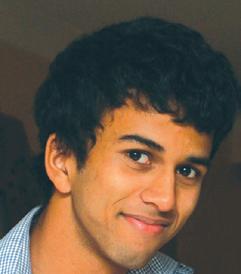
Cricket today allegorises the world in which it resides. Its primary concern seems to be money. There are increasing controversies regarding technology and there is even a sense of power imbalance between competing nations. What a shame it is, then, that the cricketer who most epitomised class and distinction both on and off the field, is no longer with us. On September 22, we bid goodbye to Mansur Ali Khan “Tiger” Pataudi – the last recognised Nawab, and widely considered India’s finest ever captain.
Pataudi was born in Bhopal in 1941 to Iftikhar Ali Khan, the eight Nawab of Pataudi and Sajida Sultan who was a Begum of Bhopal in her own right, being the second daughter of the last ruling Nawab of Bhopal. Iftikhar passed away playing polo in 1952, and thus Tiger succeeded his father as the ninth Nawab of Pataudi at the age of 11. Pataudi was a princely state under the British Raj, and so it was merged with the rest of India in 1947; however, Tiger kept the titular dignity “Nawab of Pataudi” until the entitlements were abolished through Mrs Gandhi’s constitutional changes in 1971.
Pataudi’s world was one which revolved around sheer dignity and civility. He was not a rockstar of the modern ilk; to find a more understated personification of elegance would be a difficult task. His simple yet charismatic personality saw him capture the imagination of a generation, and take forward a country struggling to make a name for itself as an independent nation.
There were very few who did not admire the man who was, for over 45 years, the youngest ever captain of a Test team – and a similarly small number will know him better than Sydney-based Australian Hartley Anderson, who shared a close friendship with Pataudi spanning several decades. Hartley met Pataudi on a tour to India through the Australian Old Collegians in 1970.

Hartley’s memories of Tiger reveal him as a charming man who valued his privacy,
had an extremely sharp wit, and was the quintessential gentleman in every aspect of his life. However, to those who knew him well, Tiger was mostly known and admired for his relaxed and gentle, yet intelligent approach to life.
“He was very much one of the boys,” recalls Hartley. “He was the editor of Sportsweek magazine and he came out here to cover the tour along with another close friend, Raj Singh Dungarpur when India came down here in 1980/81. Tiger didn’t like flying very much, so we all went down to Adelaide by train and came back by train as well. Tiger only had to file one copy of his articles a week, and his editor in India constantly had to plead with him to have even that one article done per week. He was just out here having a holiday, really.”
The Indian cricket scene in Pataudi’s time was far removed from the occasionally oppressive heights it has reached today. India had not yet even had a series win overseas, and it was a tough time for Pataudi to take the mantle. However, he was a natural leader. He was only 21 when he stepped out for his first toss as a Test captain, replacing the injured Nari Contractor. Hartley’s experiences with Tiger give further credence to his abilities as a captain. “I’d put him down as a leader by example; one, because he was a hell of a good fielder, and he really could bat,”
recounts Hartley. “Pataudi was also a leader by title, but he also had an analytical brain. He could work things out; he had the respect even of the older players in the side who were probably the next in line. And even though at that time being the captain of India wasn’t what it is now - a license to print bank notes - it was still an aspirational post. There were those who didn’t care for it but I think that he was a good choice because of the quality that he had which may not have been evident to some people.”
Despite this, Pataudi played for South Zone for Hyderabad under the captaincy of ML Jaisimha, and when asked why he agreed to play under the captaincy of ML Jaisimha, Tiger replied, “Because he is a much better captain than me”.
Pataudi was a fantastic fieldsman in the covers, and had an array of unorthodox, yet stylish shots. He famously adopted an open stance to make up for the fact that he only had one good eye for the best portion of his career, having all but lost the sight in his right eye after a car crash in 1961. It is astonishing then, that he managed to score 6 centuries and almost 3,000 runs at an average of 35, respectable figures for even an able-bodied cricketer of the time. Sunil Gavaskar idolised Pataudi as much as anyone: “I don’t think there was a single budding teenage cricketer in the country who did not try to walk like him or have a stance like him. We all tried to copy that but kept getting out bowled or leg before playing across the line. We couldn’t copy his fielding since in that era he was pretty much
a one-off who could slide and save the ball.”
The one story that perhaps typifies Pataudi’s character best comes from Hartley himself. “I’ll never forget his words at a function here in 1997 - he literally hadn’t been off the plane long before he spoke when opening a jubilee of Indian Independence photography exhibition at the Museum of Sydney on Bridge Street. He said, ‘When my father came to Australia with the English team in 1932 under Douglas Jardine, there were no Indians in Australia. When I came to Australia in 1968 as the captain of Indian team, there were very few Indians. When I look at the faces around me now, and noticing how many Indians are here, I can’t help feeling that Pauline Hanson has got it wrong.’ I thought at the time, when Pauline Hanson had a lot of popularity, that that was quite a strong statement from someone who just got off a plane.”
Indeed, it was Pataudi’s ability to assess a situation and apply to it his uniquely omnipresent wit that set him apart. Occasionally, Pataudi was seen as being too forward - or even rude - with his comments. But as Hartley reveals, Pataudi was extremely clear-cut: he made no misrepresentations as to what he thought, and that was the bottom line. “He thought deeply about what he said. His wife said once that he almost had a game with himself to say what he wanted to say using the least number of words possible. He really did think about brevity - there’s a tremendous amount of wisdom there. But he was probably at his best as a one-on-one person. He had an impish sense of humour, a twinkle in his eye. He loved demonstrating a sense of humour. There was always laughter - my kids loved him whenever he stayed with us,” recollectS Hartley.
Even with Pataudi’s background, and taking into account that his wife Sharmila Tagore was also an extremely popular actress, their humble nature was paramount to their popularity. “We went to dinner in 1997 down at Rockpool in lower George Street. The English film actor Michael Caine, who was in Australia making a film, was having dinner there with his wife. We had to restrain Sharmila from going over to Caine and asking for his autograph.
28 <> OCTOBER 2011 INDIAN LINK
An old Sydney friend remembers MAK Pataudi as a personification of exemplary sportsmanship combined with the dignity of a true gentleman
SPECIALREPORT
Get set for DIWALI!! Calling all kids 10 years and under. Create an art work on the theme of DIWALI. Use poster colours, paints, crayons, colour pencils or craft paper. Send in your work, on plain white A4 paper, to: Indian Link, GPO Box 108, Sydney 2001. Last date for submission 10 Oct 2011. The winning entry will be designed into Indian Link’s Diwali cards for the year 2011. For more details, ring the Indian Link office on 02 9279-2004, or email info@indianlink.com.au DIWALI ART COMPETITION ?
Hartley and Pamela Anderson with Tiger and Sharmila Pataudi in Udaipur’s Lake Palace Hotel
His simple yet charismatic personality saw him capture the imagination of a generation, and take forward a country struggling to make a name for itself as an independent nation.
It is not out of the question to assume that, with his charismatically charming nature, Pataudi would have been a princely figure in his own right, even without his background.
I thought the humility of that was just something to behold,” says Hartley.
Cricket has always been referred to as a gentleman’s game, and there have been few, if any, who will have exemplified that concept as completely as Pataudi did, both on and off the field. It is not out of the question to assume that, with his charismatically charming nature, Pataudi would have been a princely figure in his own right, even without his background. It is a huge loss, but Pataudi will always be remembered as the one who steered Indian cricket in the right direction, instilling in them a vision to win, not just to show up. This Tiger was indeed a unique breed.
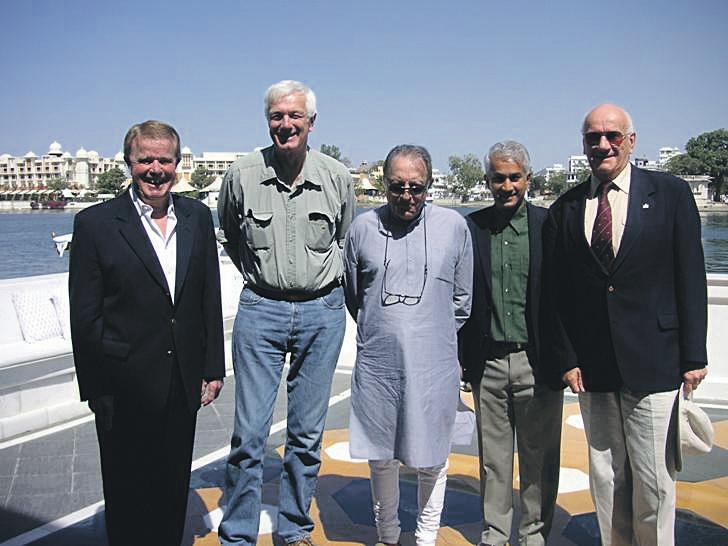

DIWALI ART COMPETITION
email info@indianlink.com.au

OCTOBER 2011 <> 29 INDIAN LINK www.indianlink.com.au
Get set for DIWALI!! Calling all kids 10 years and under. Create an art work on the theme of DIWALI. Use poster colours, paints, crayons, colour pencils or craft paper. Send in your work, on plain white A4 paper, to: Indian Link, GPO Box 108, Sydney 2001.
Oct 2011.
Anderson and Pataudi with Yajuvendra Singh (right) at the Udaipur test match in March this year; sightseeing with friends at Udaipur (below)
Last date for submission 10
year
The winning entry will be designed into Indian Link’s Diwali cards for the
2011. For more details, ring the Indian Link office on 02 9279-2004, or
?


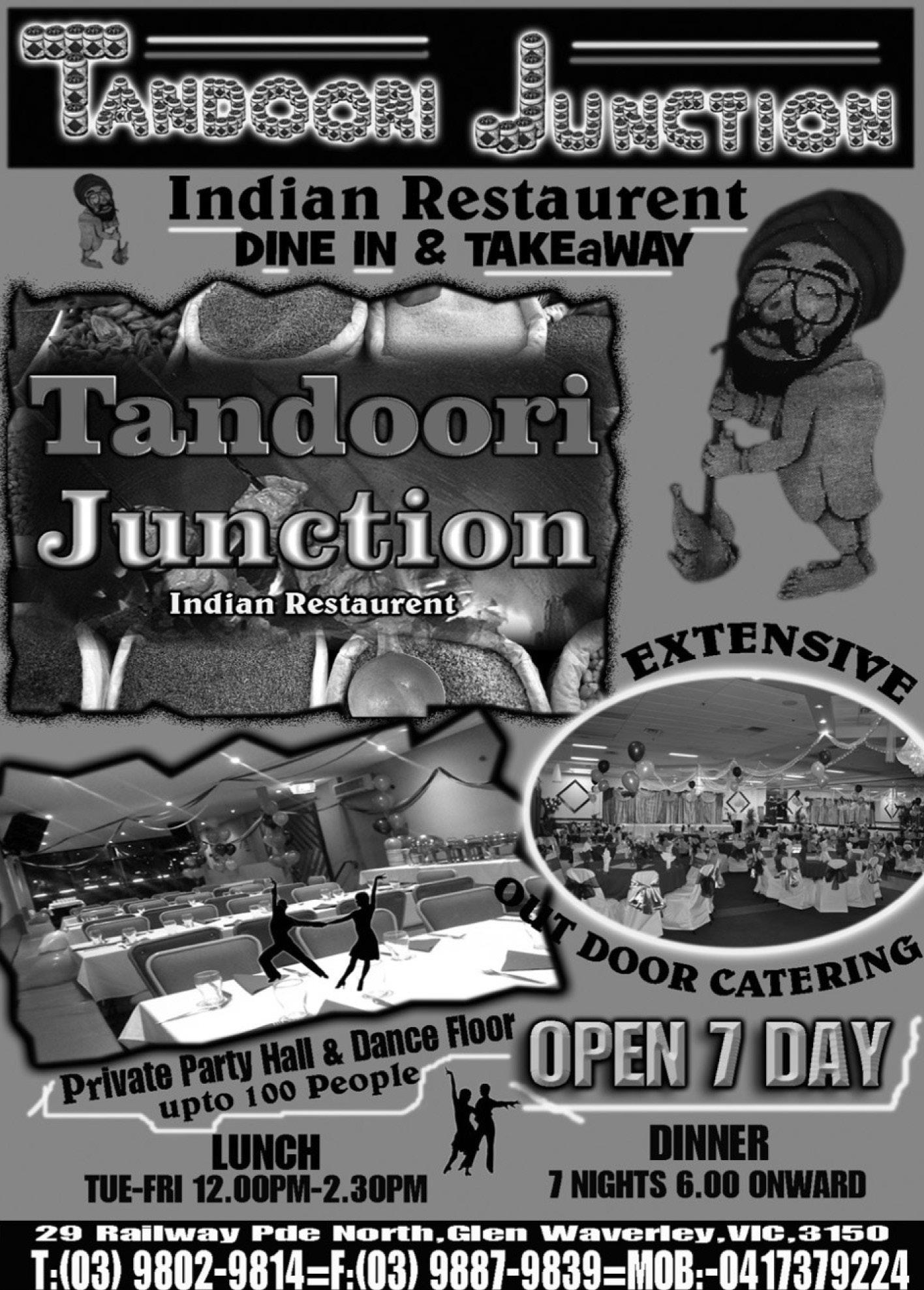
30 <> OCTOBER 2011 INDIAN LINK
A delicious offering
BY FARRHA KHAN
I have never met Tanveer Ahmed and only know him through his media pursuits, namely his opinion column in the Sydney Morning Herald and his writings for Indian Link. His recently released memoir, Exotic Rissole provides an encouraging and touchingly honest insight into his life that had me laughing out loud, smiling or nodding along with him as he told his story through the pages of the book.
“I admired his crew cut and was riveted by his rat’s tail, which he sported with great confidence. I wished I could have one, but my parents were horrified at the idea, believing it would be my first step towards the juvenile justice system,” begins Tanveer, throwing us into a life that undoubtedly many can relate to.
Set in the western suburbs of Sydney, the memoir begins with a prologue that sets the tone and introduces a very young Tanveer Ahmed and his best friend Daryl. Tanveer manages to not only look at himself as an exotic creature to Daryl and his mother, but manages to reveal how this little Bangladeshi child would find Daryl and his family exotic in the way only an innocent child can.

Tanveer then moves backwards, to his first days in Australia and the trauma of immunizations, something foreign to most migrants. As we get an evocative glimpse of what prompted many Bangladeshi’s to migrate in the 1970s in hopes of a better life, Tanveer manages to beautifully explain how difficult it is to migrate, to leave one’s home and cultural societies so entirely to go live in a country that perhaps, you hadn’t even heard about before.
Moving between Bangladesh and Australia, Tanveer delves and dissects perhaps the most telling moments of his life and the lives of his family. While he does talk about the cultural issues his father dealt with, the cultural aversions of marrying outside one’s cultural group, and his own marriage to Alina who is of Ukranian decent, he shows an interesting insight of going back to one’s country and the worries he had of how Alina would react to Bangladesh and its culture, and how people would react to her. Funnily, he explains how she had watched Monsoon Wedding to prepare for the trip.
From the story of his parents meeting and marrying amidst the war post the Indian-Pakistan separation, to shaking off his Sydney Grammar uniform before getting off at Toongabbie train station; from his first girlfriend, to being part of a cricket team that was almost confused to be a terrorist group; from to his first visits back to Bangladesh or even standing up to his father when his sister decided she wanted to work while she studied - the first half of the memoir would make you believe this is like any other mixed cultural identity memoir or novel. But you’d be wrong!
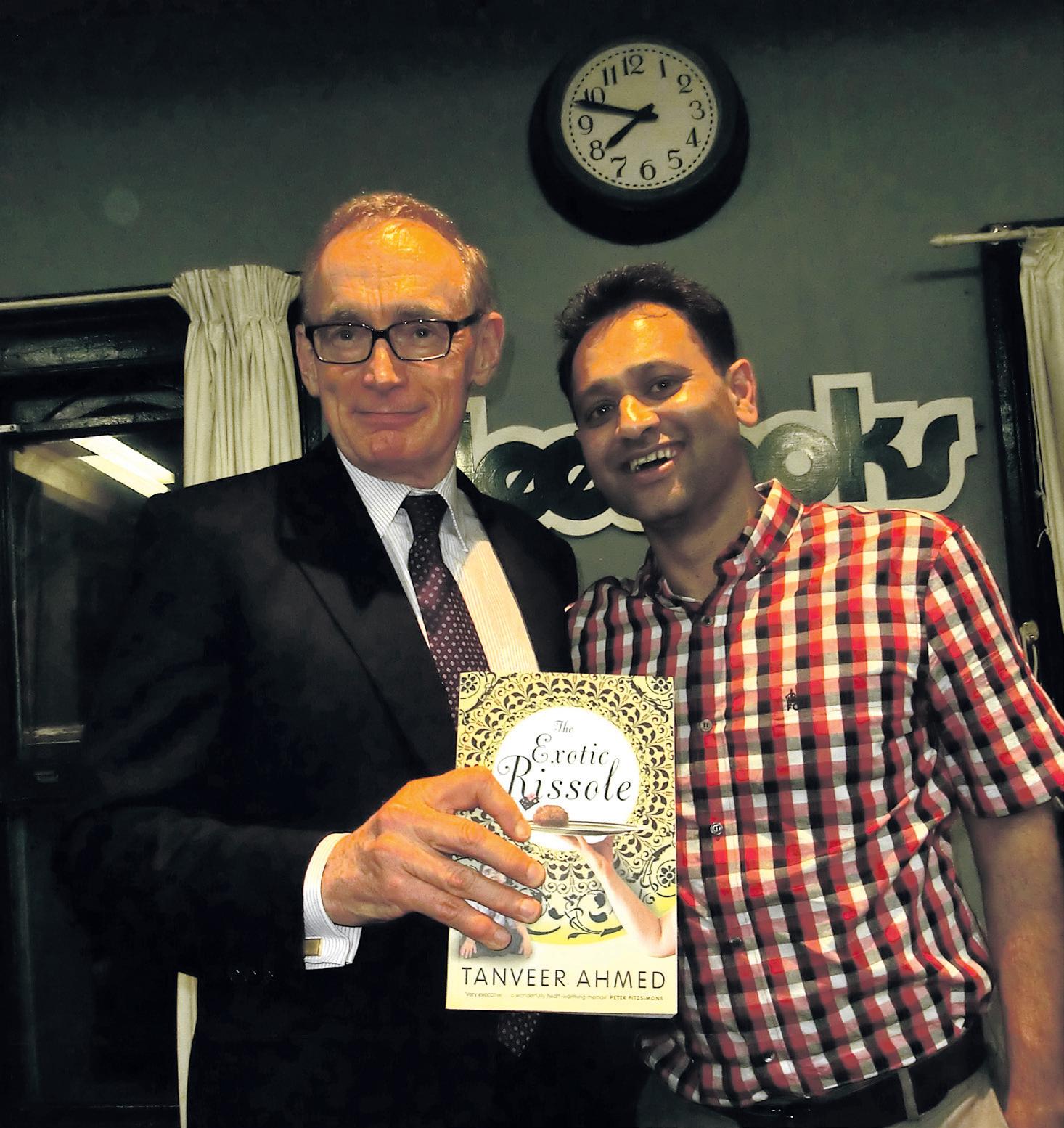

Tanveer’s memoir is very personal and he doesn’t fall into the trap of simply writing only about the cultural dimensions of his
identity. His most revealing chapters explain his ‘fifteen minutes of fame’. It began as a stand-up comedy stint that many months later landed him a gig as an Indian accentladen caricature for a game show. “Looking back on the entire period it was as if I was afflicted with some rare strain of brain disease, a crazed Bingo-themed dementia,” he writes.
Tanveer reveals his own confusions of his career path, of disliking dead bodies as a medical student and his early aversions to shock therapy. The most confronting for him, he explains, was the death of one of his patients outside a medical institution. The death occurred in the patient’s own home, and for a long time, he blamed himself for the elderly man’s death. Tanveer explains how difficult it was to decide to move away from a medical career to becoming a ‘mind doctor’ or psychiatrist, and how much more difficult and trying it was emotionally to pass the exam so he could practice psychiatry.
The memoir, however, feels like there are many holes to be filled with more details, more stories and more insights. Tanveer Ahmed has lived a life with many dimensions, a child in a poor Bangladesh on the brink of civil war, growing up in the western suburbs of Sydney, attending Sydney Grammar and travelling as a medical student and doctor. A stint on television, a beautiful marriage, a media career and with parents and a sister that have undoubtedly their own share of stories, I wish this memoir were longer and more detailed.
The Exotic Rissole is a touching memoir with cultural collisions, confusions and allusions. But it’s not just another memoir or story about mixed cultural identities, it is the story of a young man’s journey through a life of many paths, a journey that definitely isn’t complete.
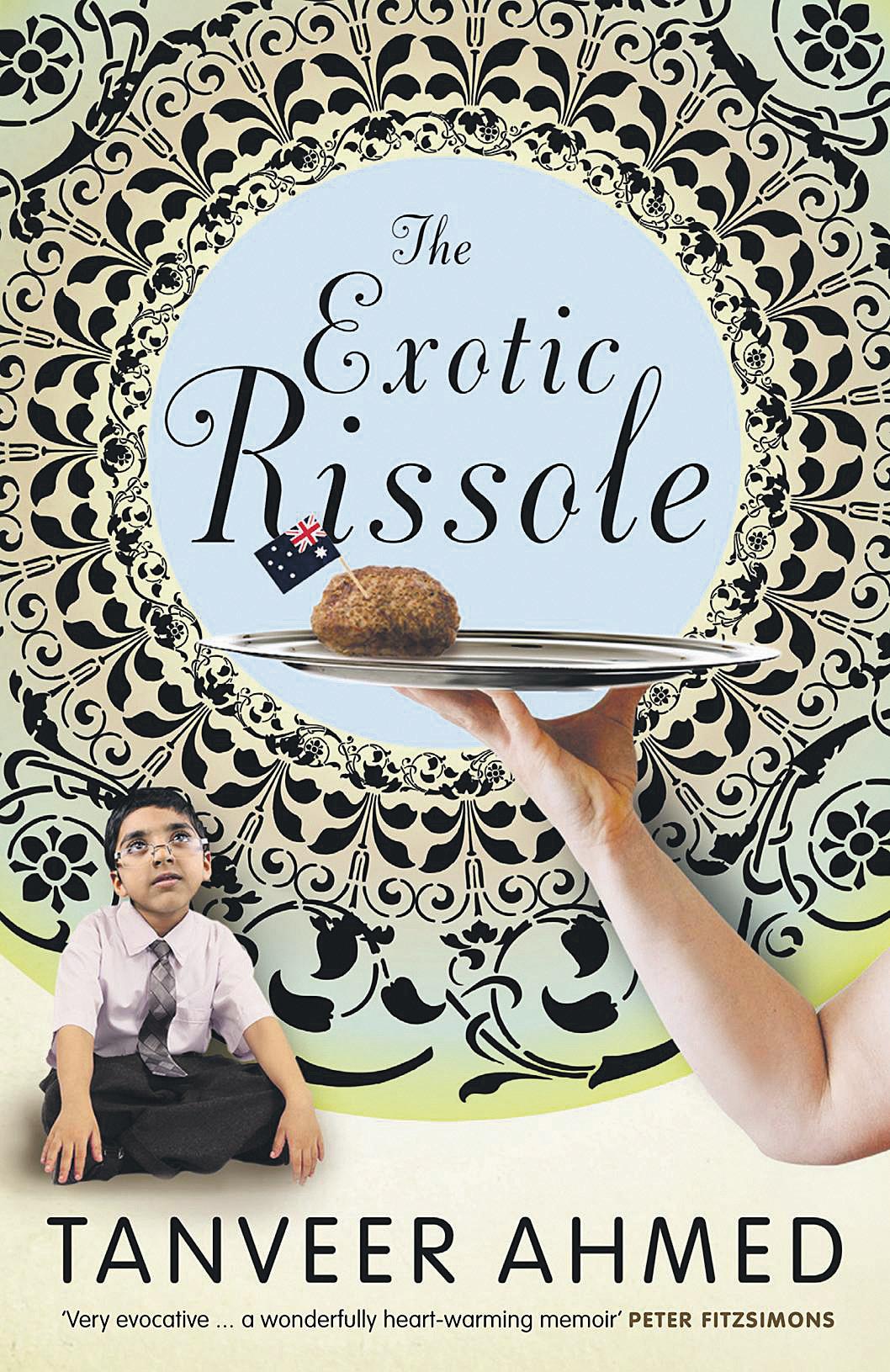
Tanveer manages to not only look at himself as an exotic creature to Daryl and his mother, but manages to reveal how this little Bangladeshi child would find Daryl and his family exotic in the way only an innocent child
Tanveer explains how difficult it was to decide to move away from a medical career to becoming a ‘mind doctor’ or psychiatrist, and how much more difficult and trying it was emotionally to pass the exam so he could practice psychiatry.
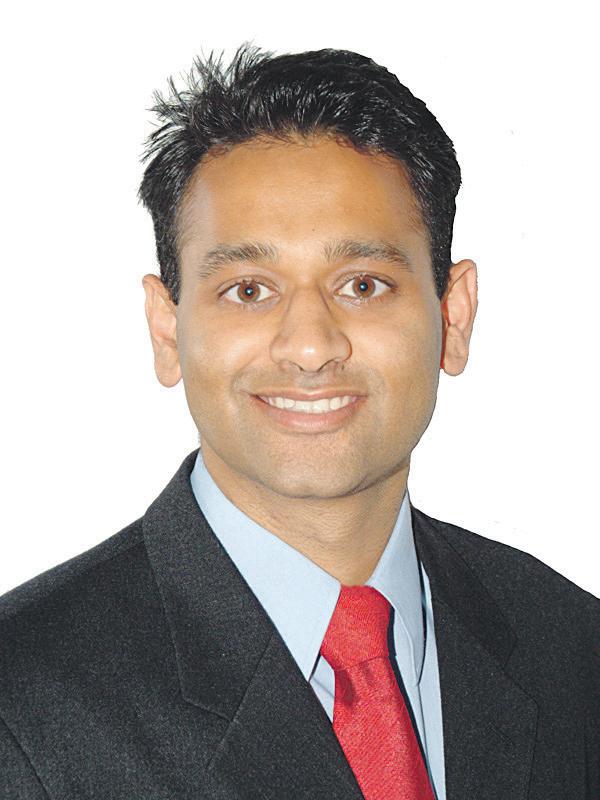
OCTOBER 2011 <> 31 INDIAN LINK BOOKS
Tanveer Ahmed’s memoir covers aspects of his life with wit, compassion and understanding, leaving the reader with a craving for more
www.indianlink.com.au
Tanveer Ahmed with Julian Morrow (left) and Bob Carr (below) at the Gleebooks launch of his book
Myth of the Lokpal
Only one call can change your life
BY NOEL G DE SOUZA
The recent anti-corruption agitation in India was able to muster considerable support, particularly through media coverage. It was launched with a swiftness and organizational skill which raised the suspicions of conspiracy theorists. At its helm was a practically unknown person, 74-year-old Anna Hazare, who got swift recognition from several important political figures, mostly from the opposition ranks. Others who joined in the fray included some well known film stars.
The man at the helm of the agitation is portrayed as impeccable in character signifying a corruptionfree record. That may be so. However, the pronouncements made by those running the movement were interpreted by some as being dictatorial, as they harboured no dissent from anyone. Thus Aruna Roy, member of the National Advisory Council, who leads the National Campaign for Peoples Right to Information (NCPRI), was disturbed at the movement’s intolerance of dissent.
answerable to anyone!

Is the Anna movement really a people’s movement? The House of Representatives in India is called the Lok Sabha meaning ‘House of the People’. Several political parties such as the Bharatiya Janata Party, the Janata Dal and Janata Dal (Secular) also include the term “Jan” meaning ‘people’, with each of them claiming to represent the people.
Whilst Team Anna brooks no criticism of its leader or of his lieutenants, Anna himself has been highly critical of the current central government’s ministers.
A much-publicised Star News-Nielsen survey conducted in mid-August found that 87 percent of respondents supported the Jan Lokpal Bill as proposed by Anna Hazare. The survey was conducted among 8,900 persons spread over numerous cities in India. That figure might not be very representative even in Australia with only a 22 million population, leave alone in India with 1,200 million people and an electorate of some 700 million. The survey was possibly conducted when the significance of the Anna proposals had yet to sink in. The survey showed a much lesser awareness of the Lokpal Bill in India’s southern states.
Whilst Team Anna brooks no criticism of its leader or of his lieutenants, Anna himself has been highly critical of the current central government’s ministers. He has thus seemingly adhered his movement with the main opposition party. His movement increasingly looks like having polarised the Indian political scene.
The Anna movement has centred around the establishment of a Lokpal (“people’s protector or keeper”) or an ombudsman to whom complaints can be made and who can be expected to redress grievances. The proposed bill is referred to as “Jan Lokpal”; “Jan” also means “people” so the bill emphasises that the choice of having a “protector” is people-driven. The noise and agitation surrounding the appointment of the Lokpal is astounding, given that there are already several Lokayuktas in a similar position at the state level.
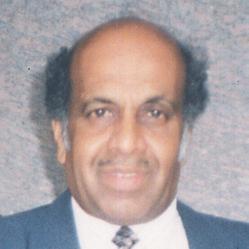
The proposed Lokpal is almost a mythical entity. He/ she is supposed to be allpowerful, as even the Prime Minister of the country could be under his/her watchful eyes and scrutiny. His/ her credentials are allegedly impeccable, meaning that the Lokpal will be unbiased and evidently non-political, himself/herself being non-corrupt, having a jurisprudential mind and perhaps being non-
Much has been made of Anna as a ‘Gandhian’. Wearing Gandhian attire or living a life of austerities does not produce a mahatma; numerous Indian politicians have dressed in that fashion, have made pious statements and preached austerities, but when in power they have not hesitated to have fire opened on demonstrations. The martyrs memorial in the heart of Mumbai bears testimony to the many who died in police firings whilst agitating for a Maharashtra state.
During Anna Hazare’s fast there were many leaders who were concerned about his health by the tenth day. India has had a history of people fasting and even dying for a variety of causes. It would have been folly to have a martyr and the consequent disturbances. There was a sigh of relief when he broke his fast and surprisingly emerged hale and hearty, and even able to deliver a speech. Several political fasts and pilgrimages (yatras) are currently taking place in diverse parts of India.
Wearing Gandhian attire or living a life of austerities does not produce a mahatma; numerous Indian politicians have dressed in that fashion, have made pious statements and preached austerities, but when in power they have not hesitated to have fire opened on demonstrations

The original Lok Pal bills have been scrutinised by the Central Bureau of Investigation and considered to be unworkable. It is for the Indian Parliamentary system to come up with a workable solution with no outside pressure.
Devadutt Patnaik, an official of the Odisha Vigilance Department who has been highly decorated for over two-and-half decades of anti-corruption investigations, suggests inserting a clause in the Prevention of Corruption (PC) Act for appointing a Lok Pal with the powers of a chief judicial magistrate.
32 <> OCTOBER 2011 INDIAN LINK
While India burns with the fervour of anti-corruption, the bill itself and its promoters seem to display inflexible and unreasonable traits
OPINION
www.indianlink.com.au
Lunch for Mayor Memsaab!
BY RITAM MITRA
The word “art” evokes thoughts of intricately carved Greek sculptures, majestically painted chapel ceilings - or maybe even graceful ballerinas and talented musicians. However, there are a group of artists who practise a form of art not commonly referred to as one. These artists are chefs, and they do not only make dishes - they create masterpieces, just as Da Vinci did with his Mona Lisa. The Sydney Morning Herald’s Shoot the Chef competition seeks to capture the inspiration, emotion, and to a large degree, the eccentricities of Sydney’s top chefs – all through another form of art: photography. We recently spoke to finalist John Slaytor as well as his subject, Ajoy Joshi, head chef and owner of Nilgiri’s restaurant.
The competition, in its 11th year, is one of the highlights of the Crave Sydney International Food Festival. 22 finalists were chosen to be on display from October 5-28 at Chifley Plaza in Sydney, with the winning photographer taking home two return flights to South America; but for most of the participants, the competition is about a whole lot more than a holiday. For Ajoy and John, there is a lot more than meets the eye when it comes to their motivation behind their picture.
A concept is created
The shot itself is a sight many will barely even pay a second glance back home; a dabbawalla delivering lunch - albeit to the Sydney Lord Mayor in front of the Sydney Town Hall organ pipes!
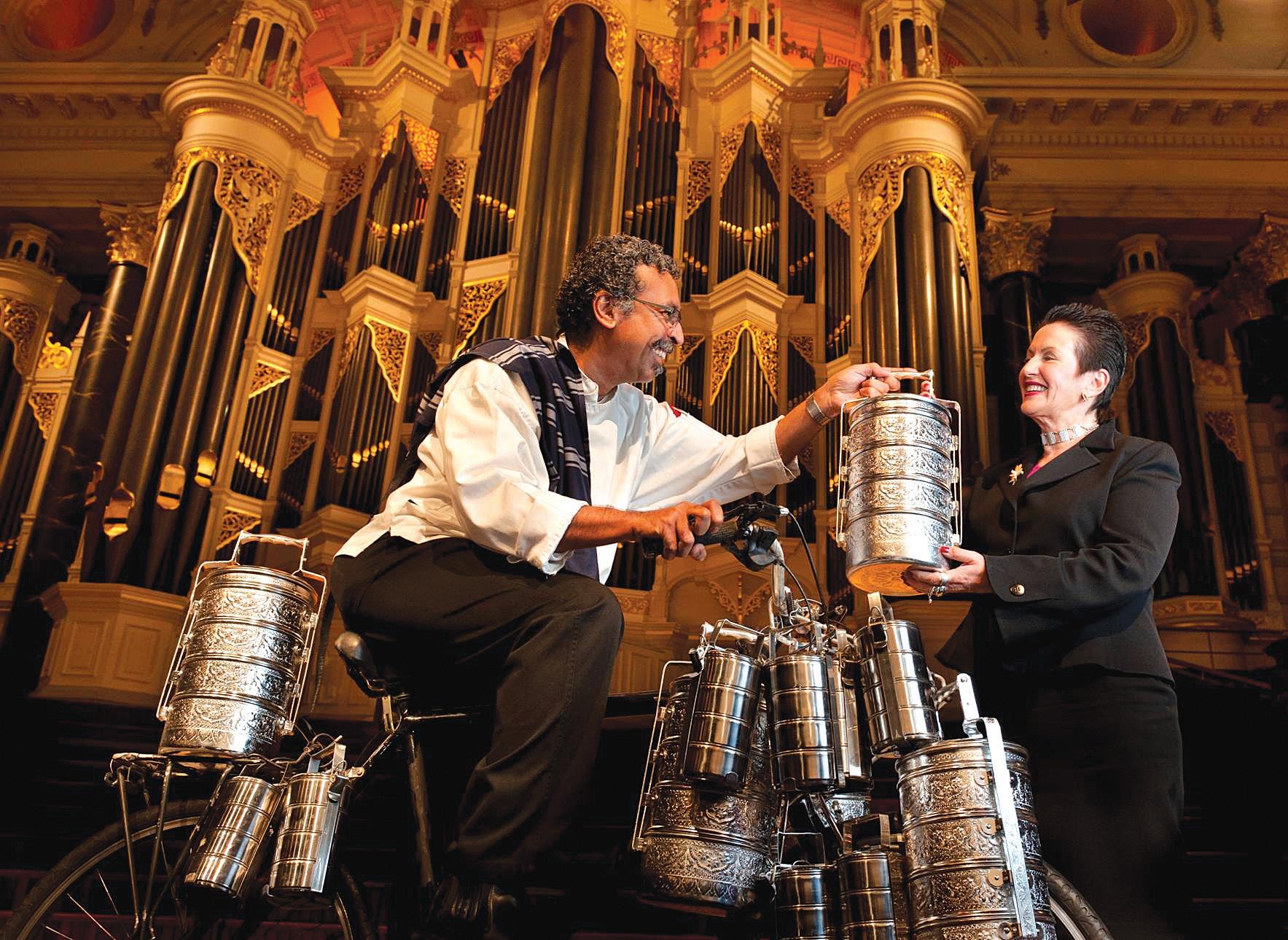
“This idea was sitting in the background somewhere,” says Ajoy. “It’s a great opportunity because Cadel Evans won the Tour this year, and the Mayor (Moore) wants the city to be an all-green city, with no cars, no petrol – so a cycle is the best thing. I love cycling and John loves cycling, so we thought we’d give it a go.”
Dabbawallas (literally, ‘person with a box’) have been delivering lunches across India for 130 years. They collect and deliver fresh lunches to workers from their homes; and then take back the empty dabbas
John recounts, “It all began because Ajoy wanted to take part in Shoot the Chef – he didn’t want a studio shot, because they’re too stale and too boring. So we thought, ‘Fine, let’s go out there.’ Dabbawallas, they’re extraordinary. They’ve been around since the 1880s, and it’s an extraordinary delivery system. Nothing seems to get lost, but there are no computers, just – another way of saying India is an amazing place. But it’s not your usual cliché Taj Mahal-sort of version of India. That’s why we chose the dabbawallas.”
Essential execution
Once the Sydney Lord Mayor Clover Moore agreed to take part in the shoot after a request from John’s wife, John and Ajoy were running to a very tight schedule. Ajoy recalls, “A photographer with a vision is the most important thing. The day the Lord Mayor was to come, we were practising for about half an hour to an hour, and then the PA came in and told us Clover didn’t have much time – there’s probably a maximum of 7-10 minutes she can give you. John said, ‘We’ll do it in two minutes’ – and he did!”
John’s philosophy seems simple: “As soon as Clover Moore came, I took 3 photos. Normally photographers spend hours and hours taking photos…but life’s too short for that! We knew we had the shot, so I stopped.”

Ajoy believes creativity is “a part of human nature”, and it is competitions like this that allow creative juices to flow. “The competition is great – it recognises both the artist and the subject. A food book is not a food book unless there are good pictures. It gives the photographers a chance to showcase their art and meanwhile, small-time chefs like me get recognised”.
It is this concept which seems to be the fundamental keystone of the competition – giving recognition to one artist through the very art form of another; even if they aren’t well known already.
Understanding Indian cuisine
As one the 22 finalists, Ajoy seeks to address what he believes is a glaring flaw in the way Indian cuisine is regarded in the public spectrum.

“I’m pretty vocal about it – there are a lot of fantastic chefs in this country. We need to throw in a few lines about them. Indian chefs are not featured as chefs at all – we are just known as ‘curry boys’. Indian
We need to throw in a few lines about them. Indian chefs are not featured as chefs at all – we are just known as ‘curry boys’ (Ajoy Joshi)
cuisine is not just about the curry – we don’t have rogan josh for breakfast, butter chicken for lunch and beef vindaloo for dinner. Nor are we Sachin Tendulkar – we don’t want recognition to a point where our private lives are scrutinised. But passion needs to be recognised,” he said vehemently.
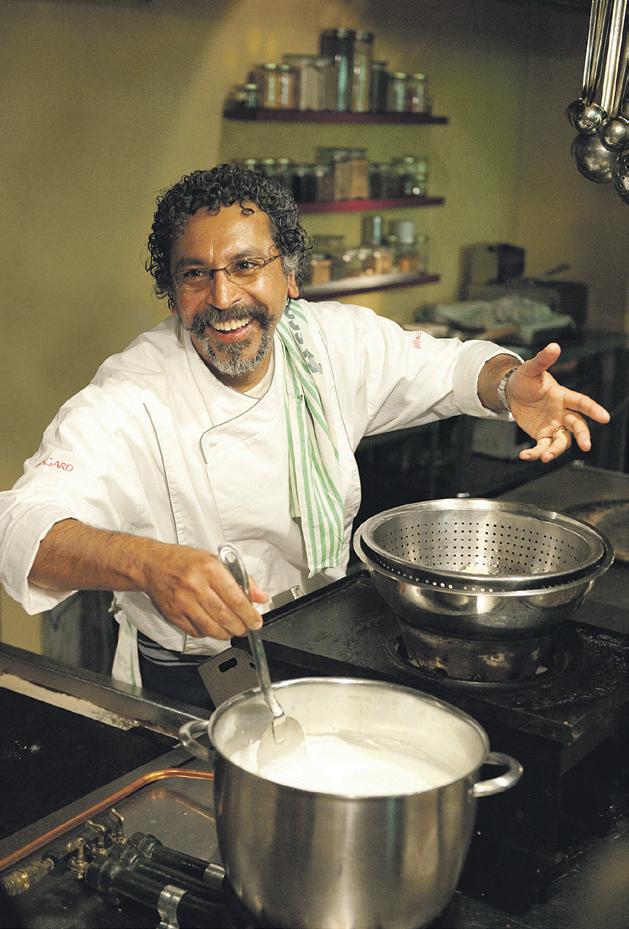
When I was in India I took amazing photos – I was in an auto-rickshaw literally whizzing through the street, and I had a lot of candid images which no one expects (John Slaytor)
John also enjoyed the experience, “I know Ajoy was thrilled, Clover Moore tweeted it to all her followers – I think it was all positive,” he said. John has been to Mumbai twice – but hasn’t yet seen the dabbawallas in action. However, he embraced his trips to India, because as John found out, “In India when you have a camera everyone rushes towards you, unlike here where if someone sees you taking a photo of them, they think you’re a pervert. When I was in India I took amazing photos – I was in an auto-rickshaw literally whizzing through the street, and I had a lot of candid images which no one expects.”
Even though he didn’t win this year, John takes heart from a successful debut entry in Shoot the Chef. “As Oscar Wilde said, every portrait painted with feelings is a portrait of the artist, not of the sitter. When I’m capturing tenderness between human beings, I’m really revealing that I’m a human being – it sounds a bit pretentious, but it’s what motivates me. Ultimately, it’s people that keep me going,” he said.
Art will always be ever-changing; that much is a certainty, as it will continue to reflect the context in which it originates. However, often art is right before us and we don’t recognise it for what it is. The next time you go out for a nice dinner – or maybe even when you sit down to a home-cooked meal from mum, take a moment to appreciate what is before you. Because it’s more than just a meal!
OCTOBER 2011 <> 33 INDIAN LINK
ART
www.indianlink.com.au
Sydney photographer John Slaytor’s portrait of Nilgiris’ chef Ajoy Joshi is a finalist in this year’s Shoot the Chef competition
Rice trails through
Gorgeous green terraces on misty mountainsides engulf this charming rustic region, which has kept its centuries old traditions alive and thriving
BY THOMAS E KING
Freshly brewed Filipino coffee warms me as I wake to a brisk breezy morning in Banaue. It wasn’t the opportunity to savour flavourful brews that had lured me to the northernmost mountain provinces of the Philippines but rice or more precisely vistas of virtually endless rice terraces cascading down steep mountainsides like jade waterfalls.
Apayao is the topmost of seven rugged mountainous provinces. Almost nudging the northern coastline of Luzon Island, this province is one of the least explored and least developed areas in the country. Benguet, the southernmost of the seven zones, on the other hand, is the most visited due to the establishment many years ago of its pine treeaccented provincial centre of Baguio as the cool climate summer capital of the Philippines. Wedged in between are the aptly named Mountain Province and neighbouring Ifugao. Both provinces are spread across the broad sides of the Grand Cordillera Range. Even from the balcony of my comfortable hotel room in Banaue I could clearly see terraced rice fields that had been carefully carved into the slopes of this mighty mountain range. It was early in the day but the pale light of the mid winter’s morning was sufficient to illuminate a timeless scene of farmers toiling their tiered paddy fields. It’s a daily activity I learned later that has continued unbroken for more than 2000 years.
A battered old jeepney transported me along a bumpy road that winds a few km through the hills to Dianarra. The vantage point here has a sweeping vista over what’s been called the ‘eighth wonder of the world’. Enshrined on the World Heritage List in 1995 as the Rice Terraces of the Philippine Cordilleras these ‘stepping stones to the sky’ were hand crafted by the ancestors of the indigenous Ifugao tribal people using primitive tools. Much of the work was done by women because the men were constantly on guard against head hunters!
I was surprised to learn the terraces are spread over some 10,360 sq. km of the northern Philippines and that if they could be placed end to end they would stretch halfway around the globe, a distance ten times the length of the Great Wall of China! The terraced mountainsides vary in height from a substantial 865 m to a breathtaking 2 km. Constant maintenance is undertaken to protect one of mankind’s greatest agricultural achievements from erosion and landslides.
Each rock reinforced terrace is irrigated using an ancient network of bamboo pipes linked to streams deep in rainforest seclusion. Water is channelled to flow through each terrace and then down to the next. April and May are the best months to see fields abundant with slender stalks of green. In June and July the prevalent colour is gold as mature crops await traditional methods of labour intensive harvesting.
The panorama at this vantage point was entrancing but I pressed on a few more km uphill to an even more magnificent sight, an awesome amphitheatre lined with emerald velvet. Just 400 people live in picture perfect
Bangaan, a tiny settlement semi circled by towering paddy terraces. Sitting inside a small village school which clings to the hillside and overlooks the idyllic setting I chatted with Elizabeth Majhen, one of five teachers who guides the destiny of 120 elementary students. She recalled the days not long ago when she walked for three hours to Banaue just to buy soap, sugar and salt. “Life then was simple but happy,” she says. Change is inevitable, she admitted. But she is genuinely gratified that these isolated Ifugao children are able to obtain a basic education. Behind the satisfaction I detected a note of sadness, however, when she said those who are educated often don’t want to spend their lives as farmers doing back breaking work in the rice terraces. Perhaps, one day there will be no one willing to tend terraces, she lamented. I thought of her comments as I set out next day to explore 20,000-strong Banaue. Attractive is not a word I would likely use to describe this town as it has more of a quaintly ramshackle style of architecture. Unpainted weathered wooden houses line the main street which during my interlude several seasons ago was muddy.
A ribbon of mist slowly swept across the green hills surrounding town. I dreamily watched this occur while sitting in a rustic cafe and sipping another coffee. A few other visitors had the same idea and we casually chatted about our travel experiences in this far flung corner of the Cordillera region.
In addition to Banaue and its world famous rice terraces there are other ‘gems’ to be found in the mountains. I proceeded on to Bontoc, the provincial capital of Mountain Province. The three hour drive was exceptionally spectacular and in places more than scary as there were sheer drops to distant doom below should any driver’s concentration falter.
The bulldozed road is being improved with funds from the World Bank. This seems to be a near constant process, I was told, as Nature does her best to ensure that road crews are kept ever busy with general maintenance duties or, on occasion, significant reconstruction work. Landslides caused by heavy rains or infrequent earthquakes are not uncommon and the wise traveller does not plan a time-tight itinerary through the Grand Cordillera Range.
This imposing mountain chain stretches for 320 km from Baguio to practically the northern tip of Luzon Island. In places, this ‘dragon’s spine’ is 60 km wide. Five of the highest peaks in the Philippines are embraced by malachite coloured mountains including the 1865 m Mt Polis, a lofty sentinel which straddles the boundaries of Ifugao and Mountain Province.
As the road zigzagged across yet another steep mountainside I dared to look over the edge of the gravelled track. The sun was sparkling off the Chiko River far below and it looked like a necklace of diamonds was floating in the area’s major waterway.
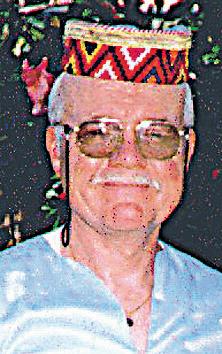
The air out here is clean, crisp and clear. Local people probably think the whole
Enshrined on the World Heritage List in 1995 as the Rice Terraces of the Philippine Cordilleras these ‘stepping stones to the sky’ were hand crafted by the ancestors of the indigenous Ifugao tribal people using primitive tools.
1. Bulul, the rice god of the Philippines keeps watch over the terraces.

2. Exquisite woodcarvings and fine basketry are popular souvenirs.
3. Set between jungle and mountain, Banaue is a picturesque town.
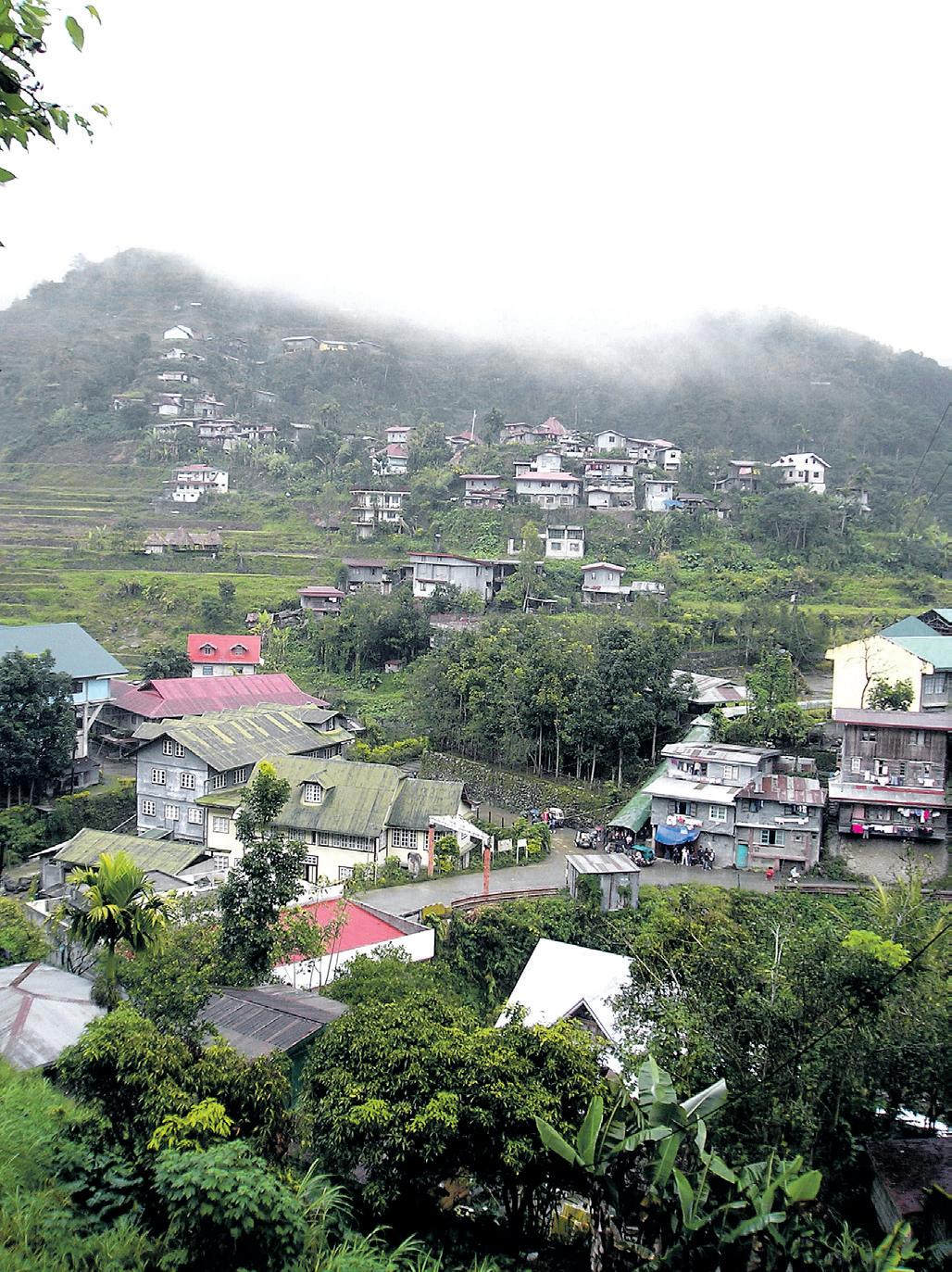
4. Ifugao children recount tales of their people during cultural presentations.
5. A farmer ploughs his terraced fields with time tested buffalo power!
April and May are the best months to see fields abundant with slender stalks of green.
34 <> OCTOBER 2011 INDIAN LINK
TRAVEL
3
Banaue
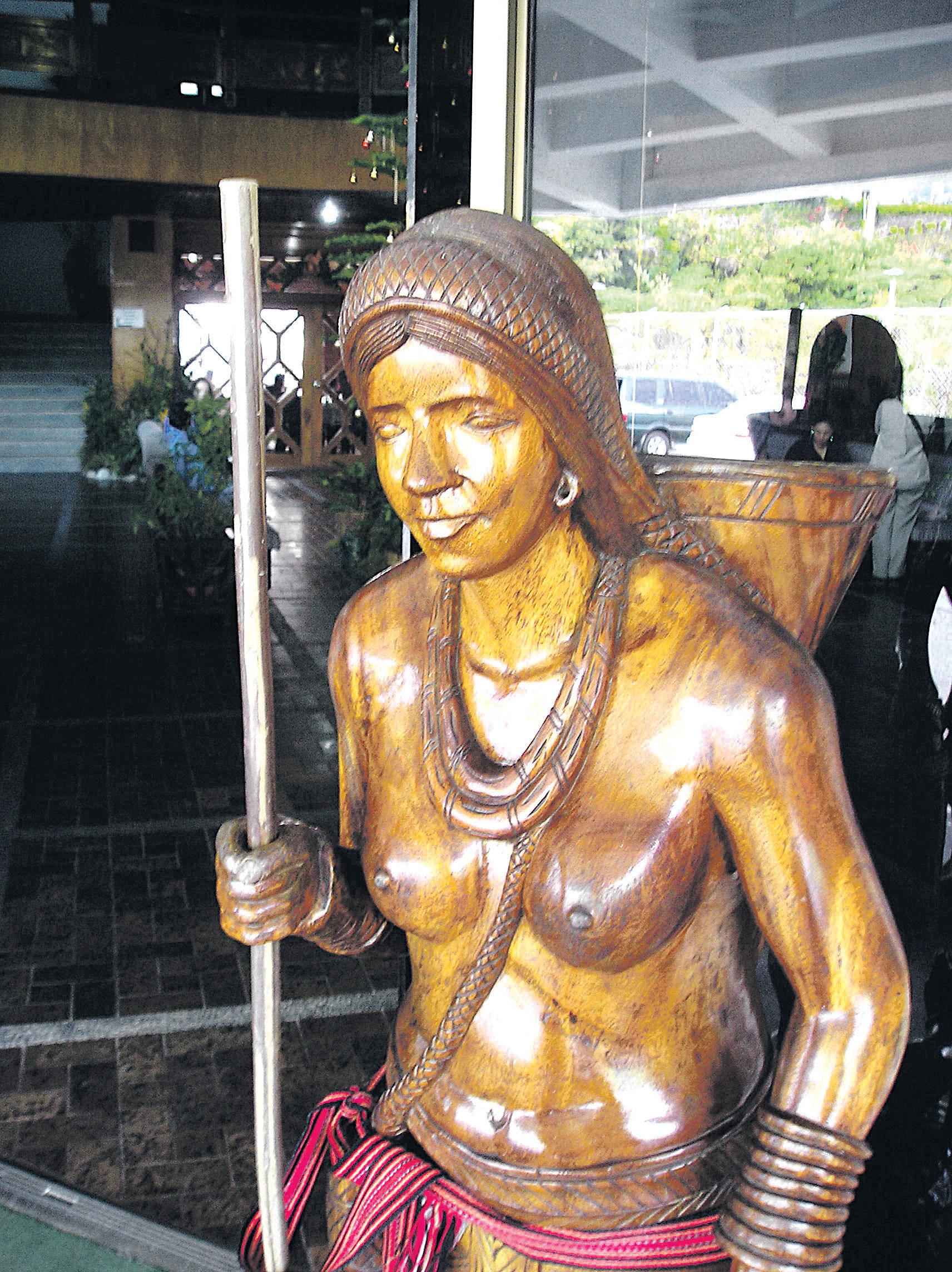


Travel notebook
BANAUE/NORTHERN PHILIPPINES

GETTING THERE
Flights Philippine Airlines operates six Airbus A330 flights a week linking Sydney and Manila and six weekly Airbus services connecting Melbourne with the capital of the Philippines. Manila/Northern Philippines can also be a culture/adventure/shopping stopover en route to India. The flag carrier has five flights a week between Manila and New Delhi. Return economy flights are available from Sydney to Delhi via Manila from $1672* including taxes or from Melbourne to Delhi via Manila from $1654* including taxes. Philippine Airlines’ new India services and increased Australian frequencies come as the airline celebrates its 70th anniversary.
See your travel agent or phone toll free Australia wide 1 300 888 725. See www.philippineairlines.com
SIGHT SEEING
Travel There are several ways to get to the rice terraces. Join a guided jeep tour. (Make a booking with a local tour operator as soon as you arrive in Banaue.) Arrange for a jeep driver to drop you at a specific location for an extended walkabout. (Ensure you make arrangements for the return journey.) Walk! Before setting out get a detailed walking map at larger inns and hotels in Banaue. It’s recommended to use the services of an accredited mountain guide. There are also accommodation inclusive guided tours of Banaue and other mountain destinations that depart from and return to Baguio.
INFORMATION
Start planning your holiday with advice from experts at the Philippine Department of Tourism Office in Sydney. Brochures and maps are also available to those contacting the helpful office at Level 7, 301 George St, tel. (02) 9279 3380. Visit www.philippinetourism.com.
au. Lonely Planet’s Philippines: a travel survival kit and Southeast Asia on a Shoestring are popular guides available
world is this perfect as few have ventured beyond valley walls. Geographically and economically they still remain very isolated. One upside of this remoteness is that the people’s culture and traditions have survived
After more twists and turns we finally reached Bontoc, the somewhat frontier reminiscent capital of Mountain Province. Though this regional hub has far more shops and facilities than Banaue none were of interest as I directed my attention to the small but artefact-packed Bontoc Museum. Displaying a fascinating mix of antiquities on the inside and exhibiting representations of houses used by the various mountain tribes, the museum is an absolute must-see attraction.
The lush valleys and pine-covered peaks of the Cordilleras are home to 33 groups and subgroups of indigenous people who many researchers conclude originated in neighbouring Indonesia and South China as long ago as the Neolithic Age. Mountain tribes like the Igorot – most native Bontoc people are a sub tribe of this group – and Kalingas have the largest numbers. (In Banaue, just 48 km away, the dominant people are the Ifugao.) My concentration was broken as the sound of nearby crashing gongs alerted me to the start of a festival. I was handed a glass of potent rice wine as I watched age-old dances performed by nakedto-the-waist men clad only in colourful loin cloths and costumed women with tattooed arms. The rhythm was nearly hypnotic as the men bowed and beat their gongs while the women circled around them with arms upraised like eagles in flight.

Celebrations ended and I departed for Banaue. It had been a long day of discovery. Exhausted yet exhilarated back in my room at sunset I ventured out to the balcony and gazed over the now silhouetted dusky scene. Farmers were still hard at work repairing terraces and tending fields of green. I wondered for how many more years this scene would remain the same.
E. King
OCTOBER 2011 <> 35 INDIAN LINK
www.indianlink.com.au
Photo:Thomas
1 5 4 2

36 <> OCTOBER 2011 INDIAN LINK
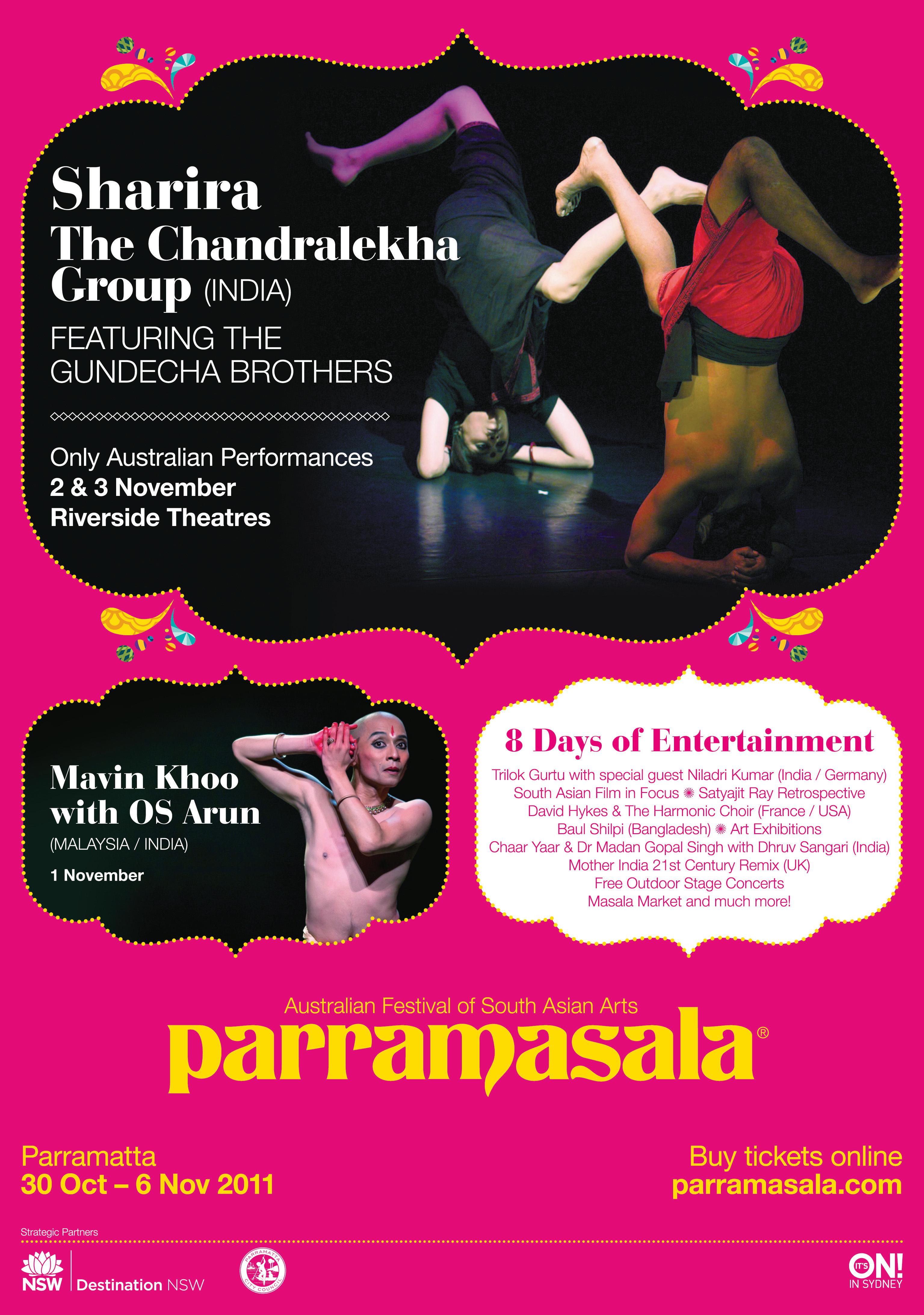
OCTOBER 2011 <> 37 INDIAN LINK
World Famous Astrologer Ankit Sharma
Your chance to have a business in India

Experienced, Successful Network Marketers who are looking for a Ground Floor Opportunity with a large, debt free, International Company soon to launch into the Sub Continent. This Company is present in 19 countries. Only one product, no warehousing, health beverage. We are looking for 3 leaders.
Must be Ambitious, Hard working, Honest and Teachable. Give me a call. I am 79 years old
I am only looking for people who are genuinly seeking 'their Big Chance' in life and are prepared to work hard to get it.
Free sample of product given to all who attend the interview Call


38 <> OCTOBER 2011 INDIAN LINK
Helen on 0414461673


OCTOBER 2011 <> 39 INDIAN LINK
New visa regulations welcomed
With the Australian government easing visa norms, the flow of students from overseas, including India, is expected to increase, the vice chancellor of the University of New South Wales University, said on a tour of India recently. He also expects greater cooperation with universities and institutes in India.
“We are very delighted with the new visa regulations,” Vice Chancellor Fred Hilmer told IANS after the recent announcement on the new visa norms. “The new policy will see an increase in the flow of students.”
Hilmer, who was in India for the first alumni meet of the university in India, says the earlier regime was not competitive with other countries.
“We felt visa requirements in Australia were not in competition with other countries. It took too long, and the cost was too high,” he said.
Australia had tightened the visa regime, stating that many students came to the country to settle down by taking admissions in nonskilled vocational courses like cookery and hair-cutting.
The number of students going to Australia also went down significantly earlier this year following news of attacks on Indian students and the tough immigration policies. According to Australian government figures, the numbers fell by almost 50 percent in January.
The vice chancellor said the attacks were a matter of the past and were not necessarily racial.
“We had no problems in the universities; it was in some vocational colleges. But the publicity was damaging. Now that is behind us and the atmosphere in Australia is friendly and safe,” he said.
“I don’t see racial bias. Australia is an immigrant country; we have people from different nationalities,” he added.
Citing an example of diversity, Hilmer said:
“We have a park in front of our library, and the only statue in that park is of (Mahatma) Gandhi. You won’t have that if we were racial. We identify people on the basis of their work.”
Today the UNSW has 20 MoUs with Indian universities.
“I’ve met on this trip the VCs of Delhi University, Jawaharlal Nehru University and National Law University. We are looking forward to how we can get in student- and research-based collaborations,” Hilmer said.
The UNSW is known for its courses in engineering, management, medicine and science. Out of an approximate 40,000 students, around 400 are Indian.
The university has some student exchange programs and is looking forward to forging more ties. Some of the premier institutes being looked at are the Indian Institute of Science (IISc) Bangalore, and IIM Ahmedabad.
The university is now focussing on attracting more students from India through exchange programs and research collaborations with Indian institutes.
Under the new visa rules, the financial requirement for student visas will be eased and applicants will need around A$36,000 Australian less. Post-study work visas will allow students to remain in Australia for two to four years after their course ends, depending on their level of qualification.
Visa norms relaxed to woo more students
Worried by continuing slide in the international students’ numbers, the Australian government has decided to relax visa norms further.
The decision has coincided with former New South Wales minister Michael Knight’s report that calls for loosening the onerous immigration
PART TIME/FULL TIME INSURANCE ADVISORS
requirements for international students.
The government has accepted all 41 recommendations made by the ‘Knight Review’. These include similar assessment level for all international students regardless of their country of passport. The students would also need to show A$36,000 less to get Australian student visa.
The rising Australian dollar and global financial crisis have dealt a serious blow to the universities and vocational education colleges in the country as international students, especially from India and China, have started shunning Australia.
“The university and vocational education sectors have been concerned for some time that the visa system was making them uncompetitive in what is stiff competition among provider nations,” Tertiary Education Minister Chris Evans said recently.
“They were wanting to make sure our visa system was allowing them to compete on an equal basis,” the minister added.
The changes proposed by the Labor government include a more streamlined visa process for international students coming down under for higher studies. This would mean easing financial criteria. International students are now required to prove they have sufficient funds to finance their studies and living expenses in Australia upfront.
The proposed changes would also see introduction of a new work visa for international students. There are speculations that this work visa could be something similar to the ones offered by Canada and New Zealand to international students once they have finished their studies.
The post-studies work visa is likely to be of two to four years’ validity depending upon the level of studies completed by the international
student in Australia.
While the financial requirements would be relaxed considerably, the onus would be on the student to establish they are genuine students and have plans to return to their home country after finishing the studies.
Prof. Fred Hilmer, Vice Chancellor UNSW
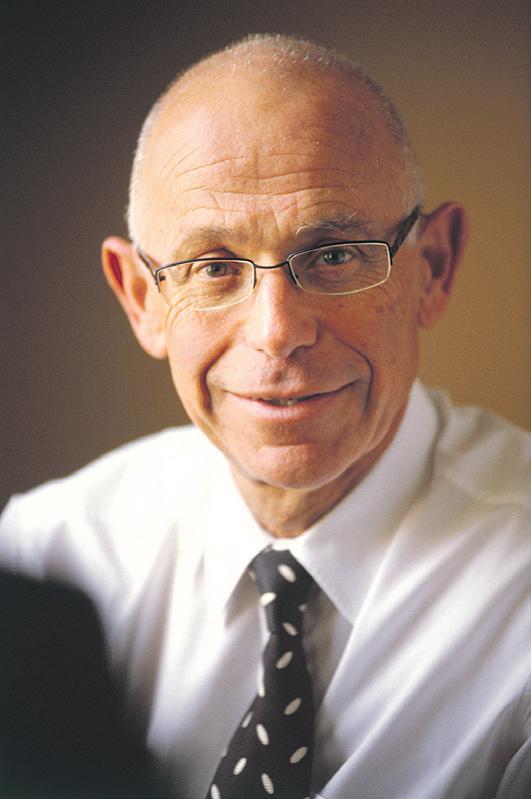
“It’s not enough to be genuine about your studies and have no intention of going home, nor is it enough to be genuine about going home but not serious about your studies,” Michael Knight said while speaking in a press conference in Canberra.
The assessment levels which decide financial requirements for various countries have been the major impediment for students from countries like India and China as they are classified as “high risk” countries. The higher assessment levels also mean students have to show much more funds in the bank accounts before student visa could be issued.

“Our consultations found that the financial requirements for student visas were too onerous, so we are reducing the financial requirements for some applicants, with students now needing around $36,000 less in the bank when applying for a visa,” Immigration Minister Chris Bowen said in a statement accompanying the report’s release.
From IANS reports
Matrimonials
Seeking Grooms
Seeking match for Hindu Arora girl, 24, professional, employed well, born and brought up in Sydney. Well educated and settled family. Boy with similar background preferred. Email: rtmkh8064@gmail.com or call 0405 488 042.
Seeking suitable match (from Australia, never married) for Hindu girl 34 years, Chartered Accountant (non-veg), living in Australia over 25 years, with eastern and western family values. Please email with all details on ganesh2011v@gmail. com
Correspondence invited from well-to-do established young man (aged between 33 to 37) for a charming, pretty girl of 33, settled in Australia and working in IT industry, profile in Jeevansathi.com TTU0136. Please contact with recent photo and profile on sharad46@tpg. com.au, home phone 02 9713-2893.
Seeking a suitable match for May 1979-born girl, UK citizen, Australian permanent resident. Currently Pharmacist in UK, but would prefer to settle down in Australia. 5ft 7”, slim, vegetarian. Hindu Punjabi Khatri background. Father retired, mother working part-time in govt job, one brother (all in UK) and one sister (married and settled in Australia). Contact redvanilla101@hotmail.com
Looking for an intelligent, handsome, Sikh boy for my younger daughter 25 years old, 5’6”, slim, fair, beautiful and working in Insurance industry with Finance background on high income. We have been settled in Sydney for the past 35 years. My elder daughter is happily married here in Sydney. Please respond with your details and photo to 24advertiser@gmail.com
Seeking Brides
Seeking a suitable Australian Resident girl (Khatri, Brahmin, Sikh) for good-looking cleanshaven Khatri boy (Manglik) 08/10/1984, 5’9”, well-
educated. B.Tech Mechanical (Production) from N.D.E.C Ludhiana, presently working in MNC in India (Punjab). Elder brother and sister-inlaw settled in Sydney for the last five years. Good family background. Belongs to Distt Hoshiarpur (Punjab). Please contact mobile: 0432 841 613 or email sunny_ nannu0082@yahoo.co.in
Suitable match for 1975born, clean-shaven Sikh Khatri boy, 5’ 9”, M.P.M, M.C.M (from India). Recently finished Masters in I.T from Australia. Boy is temporary resident and currently preparing to file for P.R. Has full-time job in service industry with decent income. Staying with elder brother and parents (who are on 1-year visitor visa) in Sydney. Girl should be tall, well educated with pleasing personality and must be from Sikh background. Early marriage, serious proposals only please. Phone: 02 94764570, email jas_ghai01@ hotmail.com
40 <> OCTOBER 2011 INDIAN LINK
SPECIALREPORT www.indianlink.com.au
One of the
insurance
India are
for full time/part time advisors to work form Australia. Pl. contact Aashish on
9811613250 or email on aashishsharma.pg@gmail.com for more info
biggest
companies in
looking
+91
Business For Sale

Two profitable newsagencys located in one of Australia’s fastest growing towns in Beautiful Port Macquarie on the NSW mid north Coast.

• The first is located in the main street and been established since 1900.

• The second is situated in the heart of the towns shopping centre next to Target.

Both stores figures have shown growth each year with well over 20% return on investment. Ideal family business in a growing tourist town less than a 4 hour drive from sydney.
Price $750k ono plus SAV
0421931348
OCTOBER 2011 <> 41 INDIAN LINK
Ph owner
Diwalidelicacies
BY RAJNI ANAND LUTHRA
It’s Diwali, but life is busy! Trying to get all the traditional fare to make up an authentic Diwali is getting harder. We can put up the lights, buy a few phooljhadis (sparklers), but the sweets? That takes an effort and it seems much simpler to sneak into your friendly Indian shop and buy a bunch.
That’s why these recipes, sourced from friends and family, are perfect. They’re traditional (some are not!), not too much of a process to make and the final outcome is just delicious!
So make the festival season just that little bit special and find a reason to boast to your friends that you can still manage a ‘homecooked’ Diwali.
Chocolate Burfi
_ ½ kg khoya, crumbled*
_ ½ kg sugar
_ 8 tbsp drinking chocolate
_ 1 cup plus 1 tbsp extra milk
_ 1 tbsp cocoa powder
_ Silver varakh paper (optional).
Heat one cup milk and dissolve drinking chocolate and cocoa powder in it to a smooth paste.
Heat a heavy bottomed pan and stir the crumbled khoya for five to six minutes over medium heat till it forms a smooth ball. Remove from heat and keep aside.
Heat sugar and a little water in another heavy bottomed pan. When the sugar has melted, add one tbsp milk and remove scum. Keep stirring on low heat till the mixture is bubbly and almost thick. Then add the heated khoya and the dissolved drinking chocolate-cocoa mixture and mix well. When the mixture leaves the sides of the pan, remove from heat and keep it aside for ten minutes.
While still lukewarm, pour the mixture into a greased plate to set. Decorate with silver varakh. When cold, cut into desired shapes. Store in a dry jar.
* To make a quick khoya substitute, combine three cups full-cream milk powder, 300ml thickened cream and a can of condensed milk. Microwave on High for 4 minutes, stir and reheat on High for a further 4 minutes. (You might find that you have to vary these times depending on your microwave – so experiment till you get the right amounts and time suited to you).
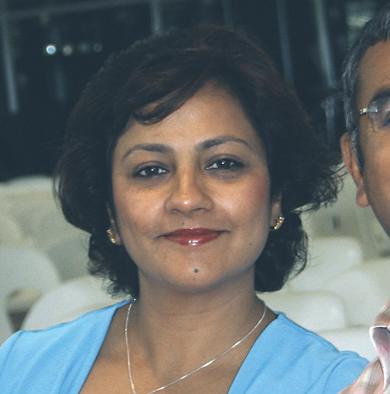
Doodh Peda

_ 2 cups milk powder
_ 3 tbsp unsalted butter, softened
_ ½ cup milk - sufficient to make a soft dough
_ ½ cup sugar + ½ cup water to make syrup
_ 3 or 4 numbers cardamom, crushed, and roughly _ powdered pistacchio nuts to decorate.
Mix butter and milk powder, and add milk to make a soft dough. Refrigerate for 15 minutes. Take out the dough and crumble it
with your fingers breaking all the lumps. Make sugar syrup of one strand consistency; put in the crumbled dough and keep stirring till it cooks and starts leaving the sides of the pan. Remove from heat.
While still slightly warm, make small balls and flatten into peda shapes. Decorate with cardamom and pista powder on the top.
Coconut Burfi
_ 1 cup ghee
_ 2 cups fresh grated coconut
_ 3 cups sugar
_ 4 cups milk
Mix all the four ingredients in a deep non stick vessel. Bring the milk to a boil on low flame stirring the contents occasionally. Keep stirring till it all comes together and starts leaving the sides of the pan. Put some mixture on your palm and see if you can roll it up into a ball. If you can, then the mix is cooked, and for you to pour out in a greased tray. When cool, cut into desired shapes and store in a dry jar.
Instant Kalakhand
_ 1 tin condensed milk
_ 6 tbsp milk powder
_ 2 tbsp yogurt
_ 2 tbsp ghee
Mix all the ingredients in a glass bowl. Let stand for a minute or so. Microwave on High for three minutes. Take the bowl out and stir the contents once. Microwave again for three minutes on High. Keep watching as it could bubble over. If it does, stir and continue. The kalakhand is cooked when the mixture all comes together as a mass and browns slightly and unevenly as a result of caramelisation.
Narial Pak Laddoo
_ 3 cups semolina
_ 1 cup ghee
_ 1 ½ cups sugar
_ ½ cup fresh grated coconut
_ 7 – 8 cardamom pods
Boil sugar in ½ cup water to make a sugar syrup of one-strand consistency.
Fry semolina in ghee for about 15 minutes. Add coconut and fry for another 15 minutes. Add semolina-coconut mixture to the syrup and mix well. Remove from heat and beat well. Keep covered for half an hour. When cool roll into laddoos.
Malai Laddoo
_ ½ cup condensed milk
_ 250 gms paneer
_ 2-3 drops kewra essence
_ ¼ tsp yellow colour
Mash paneer well. Add condensed milk and cook on low heat, stirring constantly. Cook till thickened and it all comes together, leaving the sides of the pan. Add essence and
remove from flame. Pour onto a plate and let cool somewhat. When still slightly warm, roll into little laddoos. Sprinkle powdered elaichi on top to decorate if you wish.
Quick Til Burfi
_ 1 cup white sesame seed (whole)
_ 1 cup milk powder
_ 125 gms unsalted butter
_ 1 can condensed milk
Dry roast the sesame seeds and grind coarsely in a grinder or blender.
In a glass dish add all the ingredients including the ground sesame seeds. Microwave on High for 3 minutes. Stir the mixture well and reheat on High for another 3 minutes. Keep watching as it could bubble and pour out. If it does, stir briefly and continue. Soon it will come together as a mass. Pour into a greased thali and let cool. Cut into desired shapes and store in an airtight container.
Besan ki Chakki
_ 100 gms gramflour (besan)
_ 100 gms pure ghee
_ 100 gms sugar
_ 1 tsp cardamom powder
_ ½ cup milk
_ A few strands saffron
Add one tbsp ghee and ¼ cup milk to the gramflour and mix well. Knead to a smooth dough. Keep aside for a brief while. Then take a strainer and pass the dough through it. Heat the strained dough with the remaining ghee, cook for a while and then let cool.
Add ½ cup water to the sugar and heat to make a thin syrup. Add to this the remaining milk, saffron and cardamom powder. Stir well.
When cool, add the gramflour to the syrup and mix well. Pour into a greased tray to set. When cool, cut into desired shapes and store in an airtight container.
Quick Jalebi
_ 1 cup plain flour
_ 2 tsp gram flour (besan)
_ ½ cup yogurt
_ 2 cups sugar
_ Pinch Eno fruit salt or sodabicarbonate
_ ½ tsp saffron
_ Oil for deep frying
Mix sugar and one cup water and heat to make a sugar syrup of one-strand consistency. Combine plain flour and besan. Add yogurt and saffron. Add one cup water and finally soda. Mix well.
Heat oil in a kadhai. Roll up a clean plastic bag or piece of fabric into a conical shape and snip off the end. Put in prepared paste and allow it to pass through the hole, directly onto the hot oil. Turn your hand deftly in circular motions to make spirals. Fry both sides. When lightly browned, remove from the kadai with a slotted spoon straight into the sugar syrup. Soak briefly and remove onto a plate.
Gujiya
For pastry:
_ 4 cups plain flour
_ ¼ cup melted ghee or oil
_ ¼ cup water to make the dough
Mix the oil and the flour so that the mixture resembles fine breadcrumbs. You may have to rub the flour between your palms to get the required texture. Then with small quantities of water mix into a smooth, elastic dough. Cover with a damp cloth and keep aside.
For filling:
_ ½ kg khoya
_ 50 gm raisins
_ 50 gm crushed cashewnuts
_ 100 gm desiccated or fresh grated coconut
_ 7 or 8 green cardamoms
_ 250 gms sugar
_ Oil for deep frying
Dry roast the khoya in a pan on a low heat. When it begins to change colour add the sugar and stir it for some more time, till it turns a golden colour. Add the other ingredients. Switch off the heat and allow to cool. The dough can be divided into 25 or 30 balls.
Take one ball of dough and roll it thin and into an even circle. Put a scant teaspoonful of the filling in the centre of the circle and spread it out in a line, leaving a little space along the edges. Dip a finger in water and run it along one half of the edge of the circle.
Fold over the casing so that it forms a half moon shape. Press down on the wet side so that the casing does not open. Make sure that it has stuck well. Now pinch the edges of the mould so that it takes on a delicate shell pattern. Make up all the gujiyas and keep aside under a damp cover.
To fry, heat the oil in a pan or kadhai. Lower the heat and then fry the gujiyas on a gentle heat till a delicate golden colour. Cool and store in air tight containers.
Almond Burfi
_ 1 litre full cream milk
_ 10 numbers almonds
_ 3 cups sugar
_ 1 tbsp semolina
_ 1 cup ghee
Boil the milk down in a heavy-bottomed pan till it reduces into quarter litre.
Soak almonds for about an hour, peel off and grind them into fine paste.
Add sugar, semolina and almond paste into milk and cook till the mixture thickens. Now add ghee and reduce heat briefly till it melts completely and then turn off heat. Mix well; you will notice the mixture coming together and leaving the sides of the pan.
Pat this mixture in a plate and when cool, cut into desired shapes.
42 <> OCTOBER 2011 INDIAN LINK www.indianlink.com.au FOOD
These special dishes can be cooked to honour any celebration, to bring a touch of festivity to the occasion
HEAT THE WINTER CHILL
Hot Soups
Manchurian Vegetarian Pizza (Special Gourmet Pizza)
From the Wok - Chilli Chicken
Hakka Chow Mein
Sweedish Cake with Ice Cream
50 more Dishes to chose from Catering available for festive occassions
100 % Vegetarian & Gluten free food available
Catering Vegetarian & Non-Vegetarian
Great Eastern Hakka Restaurant

319 Stephenson Street Mt Waverely 3149 Ph (03) – 98073388

Trading Hour: Tuesday – Friday – from 12pm till late Sat – 1pm till late Sunday + Public Holidays – 5pm till late www.greateasternhakka.com.au

OCTOBER 2011 <> 43 INDIAN LINK


44 <> OCTOBER 2011 INDIAN LINK
Deepadasi
 BY RANI JHALA
BY RANI JHALA
“Come,my child,” Ma said as she led the way. I took my first step as I heard her add with a smile, “There is much I need to learn from you.”
‘Ma’, as Mata Sitamayee was lovingly called, was among the many neo-saints of modern India. As society moved towards materialistic success, gurus and mas were sprouting everywhere. It was normal to see each of these saints amass a large following, and amidst them were several famous and materialistically successful people. It is these folk that became the true evangelists for these saints, to whom they give the bulk of their donations.
So when Ma asked me to come forward, I was elated at the privilege, yet matter-offact about the honour. People knew of me, the world-renowned actress, more than they knew of Ma. Of course she would pick me from the crowd and of course, she would want to learn from me.
I followed Ma and her assistants into the prayer hall. There in the centre of the room was a fountain. Around it was a winding waterway that meandered around, forming a serpentine-like formation. A waterfall slid over a rock face that made up one wall of the great hall.
“Come, child, it is a special night, help me prepare the lamp,” said Ma.
“Special night? Oh I see, thank you Ma, that is very kind of you,” I replied, trying to sound modest. Of course it would be a special night. It was not often that fame graced a modest ashram. I looked up to see Ma smile.
As we reached the fountain, several of her assistants came in with trays and placed them on the ground. Ma sat on the floor and motioned for me to sit beside her. As I moved to her side, I watched as more women arrived with trays, placing them besides the ones they had already put down.
“What would you like to be, the lamp, the wick or the oil?” Ma asked.
“I do not understand,” I replied.
“We are preparing the lamps for tonight. Everyone will help by adding that which represents them best,” Ma clarified and then added, “I see confusion. What does it take, my child, to make a ‘diya’. The lamp, the wick and the oil! If you think your life is like a lamp, then decorate these earthen lamps, if your life has been like a wick, roll this cotton into slender wicks and if your past resembles the oil, take this jug and pour the oil into the painted lamps.”
“How do I know which item represents me best, Ma?” I questioned.
“Ah, I see that some things are not taught in the celluloid world,” she said, smiling. “Come, we will learn together.”
We sat down and Ma picked up an earthen lamp. With the colour yellow made from
turmeric paste, she painted dots along its entire rim.
“Here take this lamp, a vessel made for our convenience, so that it can hold that which is put in it. It is made of earth, air and water and represents us. It has great capacity to hold and imbibe that which is put in and it has the strength to let burn without being burnt. It is the Karmayogi,” she explained.
I looked at the lamp in Ma’s hand and then back at her, “Ah Ma, it represents us,” I whispered.
“Yes, child, it is our body,” she confirmed. Then, pinching apart a small ball of cotton, she rolled it between her fingers, transforming it into a slender thread.
“This ‘bati’ is made from the softest of things. It twists and merges to form a strong twine. It thirsts for knowledge, it hopes for direction. It knows its purpose. It is the Dharmayogi,” Ma stated.
“Ah I see Ma, it is our mind,” I marvelled at my own intelligence.
“Yes, it is the Dharmayogi who wanders through life burning fiercely for knowledge and is ever-thirsty for answers,” she replied Then Ma picked up the pitcher and poured the oil. I watched as the wick absorbed the liquid until saturated, it could absorb no more.
“Fuel, the power behind every action; the strength behind every deed. It is the source sought by all. The final part, that unites and completes. It is the Purnayogi,” saying this, Ma handed me the lamp.
ued to frown, she proceeded with the words, “Child, it is your soul. It is that which connects and that which empowers. It is that which enlightens and that which liberates. It is your powerhouse.”
“Ah Ma, I see now, the lamp is man, useless until the mind and soul unite to enlighten,” I said.
“Yes my child, did I not say, I have much to learn from you?” Ma smiled.
I knew by now, the game Ma had just played. From the teacher I had become the taught. Now aware of how Ma worked, I asked, “What is so special about tonight, Ma?” Even as I asked, I knew I was no longer the reason.
“It is Deepavali, my child. The night when good triumphs evil: the evening, darkness is overcome by light. The moment when a nation welcomes back justice, truth and divinity! It is the event that confirms the return of righteousness and gives back the power that once belonged to the Gods,” said Ma passionately.

I looked down, ashamed. Here I was, Bollywood’s leading lady, thinking I was the centre of the night, when all I really was or would ever be, was another spark of the mighty flame, who Ma was uniting with its source.
When I looked up, Ma held three items in her hand - the lamp, the wick and the oil.
OCTOBER 2011 <> 45 INDIAN LINK
FICTION
A simple symbol can become a powerful element that helps on discover the soul and understand divinity
And it was normal to see each of these saints amass a large following, and amidst them were several famous and materialistically successful people.
www.indianlink.com.au
Here I was, Bollywood’s leading lady, thinking I was the centre of the night, when all I really was or would ever be, was another spark of the mighty flame, whom Ma was uniting with its source
ARIES March 21 – April 19
Tarot
Tarot ‘n’ You Tarot ‘n’ You
Tarot
Tarot predictions for October 2011


This month, the cards are emphasizing on developments within yourself as a person. There is a sense of growth and accomplishment in all areas. Career and work matters are looking more stable, and financial gains are indicated. Relationships will be calmer, with efforts being made from both sides to bring harmony and peace. Be careful of nagging headaches and check your diet as food intolerances are indicated here.

TAURUS April 20 – May 20
This month the cards are indicating your career will be on overdrive where you will be in great demand and also working very hard. Financially you are looking at some unexpected expenditures coming up. There will be a lot of travelling and your stress levels will be high. Relationships will move forward smoothly. Make sure you have time for yourself and look after your neck and throat areas.
GEMINI May 21 – June 20
The cards are indicating that you will be putting in a lot of effort in your work area. You will be feeling very good about yourself, and will be looking at exercising more and at your diet. Finances are going to be stable and money owed may finally be returned. Relationships may be strained, so it is advised to keep cool. Do not ignore any coughs or colds this month.
CANCER June 21 – July 22

You will be on a high as there is a lot to celebrate; luck and fortune are creeping into your life. Work is slightly boring, but you have your eyes open for new opportunities. Financially you will be looking at investments in the distant future. Relationships are going to be a little strained but nothing permanent, so relax. Take care of your stomach and any minor aches and pains.
LEO July 23 – August 22
You will be looking for interesting opportunities, and the cards are indicating that you need to be clear on where you want to work - overseas or here. You will decide to spend some quality time with family and friends, as you feel you have neglected certain individuals. Financially, you are contemplating purchasing items for the house. Make sure you get adequate sleep, there is indication of eye strain.

VIRGO August 23 – September 22
This is your month, to focus on clearing out the old and bringing in the new. You have plans to change your surroundings and will be selling or getting rid of things. Taking time out with family and friends will be good, as you need a break. Unexpected money is indicated. Your stomach area has been a cause of concern and you may need some food allergy tests done.
By NANCY JADE ALTHEA
LIBRA September 23 – October 22
You will be in a very generous mood and will want to treat your family and friends. Your nature is changing and you want to do more for others. Work and career will keep you occupied and happy, but you are looking for a promotion as soon as possible. No major worries with finances, although be careful to not overspend. Take care of your back and have your kidneys checked.
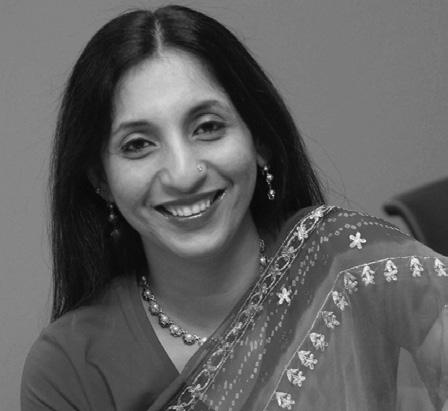
SCORPIO October 23 – November 21
This month you will be celebrating almost everything. You have a real magnetism to life and people, and will feel in control of things. Relationships will go well and you will surprise your partner. Be careful at work as someone is envious of you. There will be a chance to show off your speaking skills at a meeting/event. Take care of your diet as overindulgence may lead to stomach issues.
SAGITTARIUS November 22 – December 21
The cards are indicating that this month you will be making plans to travel as you have itchy feet right now. You will be feeling good about work as you have worked hard to gain recognition, and new offers are indicated here. Relationships are peaceful and should you be looking, there is someone who is interested in dating you. You may be very accidentprone this month, so take care.
CAPRICORN December 22 – January 19
This month the cards are indicating that you are restless and have many plans to execute. There is an indication here that you will travel, and this could lead to work and/or opportunities. Work is currently not giving you the rewards you expect or desire. Relationships are a little strained and the family seems to be pressurizing you to make some changes. Take care of your feet.
AQUARIUS January 20 – February 18
This month you will be expanding your horizons greatly and work is going to take a huge amount of your time. You will look at relaxing with your family, as you tend to get carried away with work. Romance is indicated and relationships will need to be spiced up, especially if you are married. Finances are not a worry. Make sure you have an eye check and watch your diet.
PISCES February 19 – March 20
This month sees you working towards bringing a relationship together. The cards are indicating a long distance relationship. Work will be very busy and you may have to take on more than you can handle. Finances are a little strained but manageable. You may decide not to go out as much to bring balance. Get plenty of sleep as your brain is not switching off and you are over-analyzing everything.
46 <> OCTOBER 2011 INDIAN LINK
STARSFORETELL
predictions for February 2010
www.indianlink.com.au
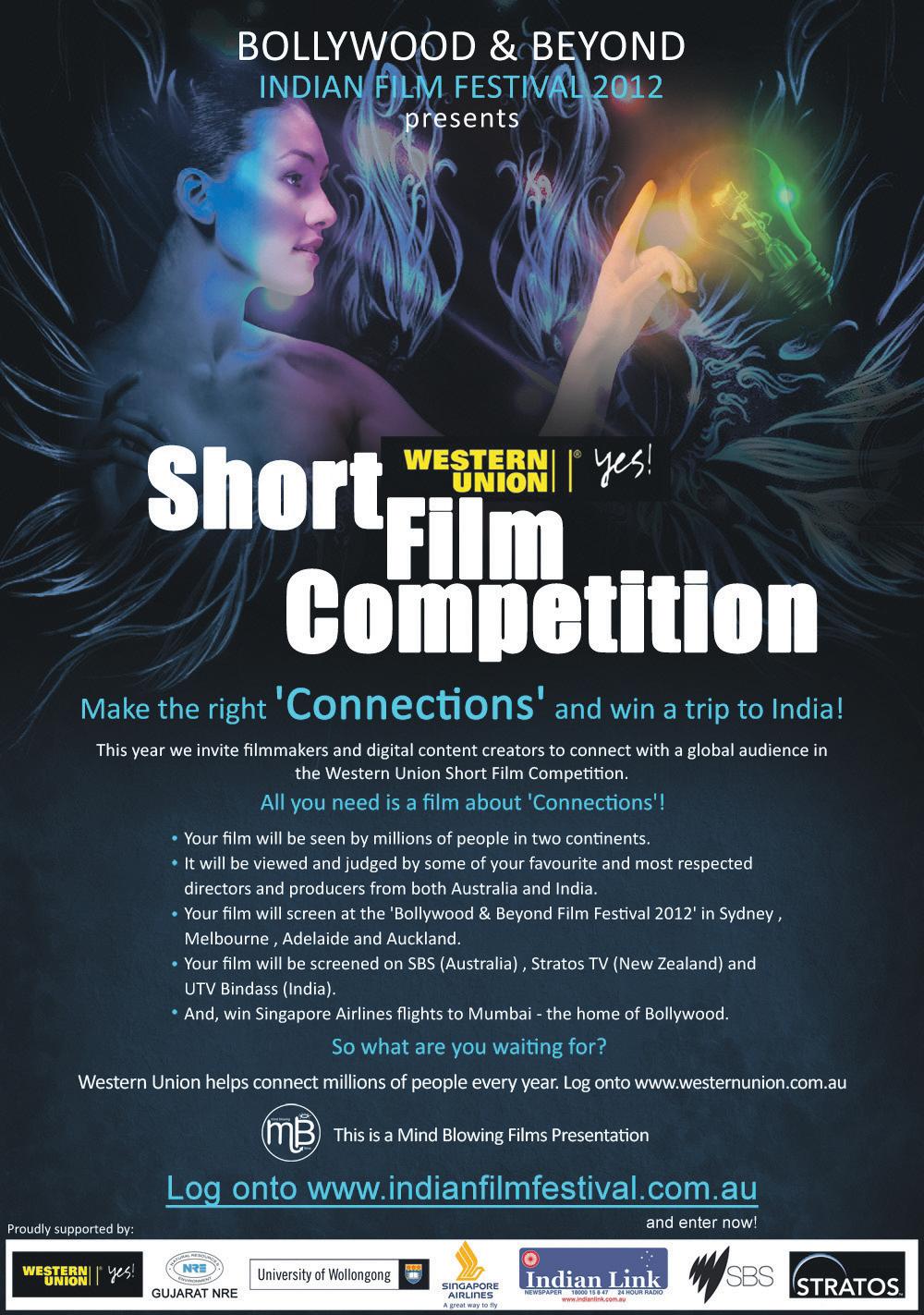
OCTOBER 2011 <> 47 INDIAN LINK
BUZZThe
Born to sing: Lata turns 82…
Even after spreading the magic of her voice for seven decades, she continues to sing with aplomb.
One of the gems of the Hindi film industry, Lata Mangeshkar turned 82 recently. Thanks to her successful long journey and her body of work, she has become an institution in herself and a guiding force not only for budding singers but also for established artists.
Starting her career in 1943 at the age of 13 with the song Mata ek sapoot ki duniya badal de tu for Marathi film Gajaabhaau, Lata, who is called the Nightingale of India, went on to record songs for more than 1,000 films in 36 languages.
From classical to romantic numbers to ghazals to bhajans, she made her mark in a variety of genres.
Even at this age her zeal to sing is the same, which was evident when she sang Tere hasne se for Satrangee Parachute this year.
SRK in RA.One mode
He hasn’t had a hit in recent times, so SRK is going all out to promote his upcoming release RA.One. In early Oct, he took to not one, not two, but three different TV shows on the same night! The 45-year-old appeared on the finales of Star Plus’ Just Dance, Colors’ India’s Got Talent 3 and Zee TV’s Sa Re Ga Ma Pa L’il Champs. Shah Rukh was at his jovial best on all the shows as he danced, sang, cracked jokes as well as interacted with the audience. He danced to the film’s popular number Chhammak chhallo, got the participants to dance as well, presented the winners’ trophy, and also distributed his film’s merchandise, especially a G.One doll based on the movie’s villain, played by Arjun Rampal. Desperate times….

The mega-budget film RA.One, releases this Diwali Oct 26.
ABHILASHA SENGUPTA
the character he played in the original, 39 years after it first appeared.
Apparently the character would have aged by less than a decade in the sequel, as the story moves forward. The hunt is on for what the evergreen superstar describes as ‘a woman of today, trendy savvy with-it and attractive’.
“I have the script for Hare Rama Hare Krishna Aaj, which takes forward the story of the earlier film. It is not a remake. I don’t believe in remakes. I believe in moving forward. Every scene every character except mine would be new. If Dev Anand played Prashant in 1971, he will play Prashant in 2012 as well,” he said.
The Padma Bhushan awardee and Dadasaheb Phalke Award winner says, “As long as I feel creative and as long as I feel there’re some people who want to watch my films, I’ll continue to make them”.
Deepika-Ranbir back on!
Lata, who is the voice behind evergreen lilting melodies like Aaja re pardesi, Kahi deep jale kahi dil, Beeti na bitaai raina, Tere bina zindagi se, Tere bina jiya jaaye na, Naino mein badra, Chalte chalte and Yaara sili sili, made it to the Guinness Book of World Records from 1974 to 1991 for having made the most recordings in the world. Not just for singers, for actors and filmmakers too, the Bharat Ratna recipient is the voice that gave Hindi songs the quality that will be remembered for years.
… and Dev Anand is 88
Main zindagi ka saath nibhata chala gaya. True to his popular song, Dev Anand, one of the most loveable romantic heroes of the 1950s and the 1960s, has refused to let age slow him down. The actor turned 88, and his zest for life remains unmatched – going strong with a new film release, new film in the pipeline and a special birthday gift, an iPhone.
He has been promoting his directorial project Chargesheet, although it has not exactly wowed the critics. The film, a murder mystery, is a different genre for the octogenarian.
Meanwhile, the ‘evergreen’ Dev is working on a sequel to his 1971 film Hare Rama Hare Krishna which will bring back
Their personal chemistry may have gone a bit sour after their break-up, but Ranbir Kapoor and Deepika Padukone will romance on the silver screen in Karan Johar’s new production Yeh Jawani Hai Deewani. One wonders if bringing the old back on screen was a tough nut to crack… But director Ayan Mukherjee says it was a smooth process as the two actors share an amicable equation. “Actually it was very easy. I know that the media had written a lot about their breakup, but actually they have a very
GUESS WHO
His film family have been in the news recently.
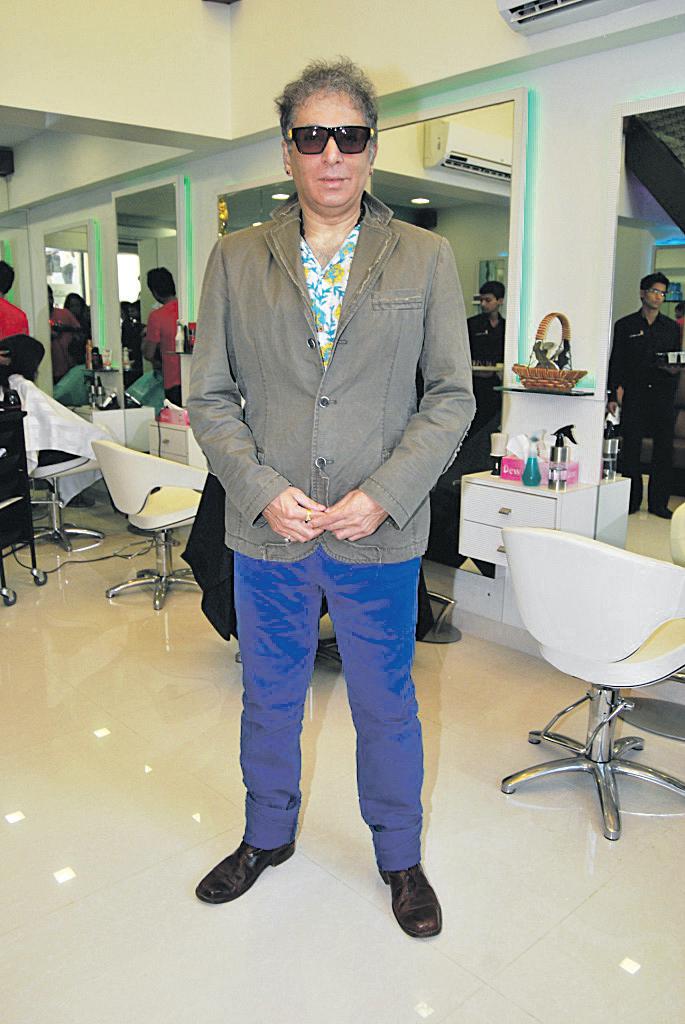
48 <> OCTOBER 2011
ENTERTAINMENT
brings us up-to-date on what’s hot and happening in Bollywood
?
amicable equation and it was really smooth to put them together,” said Mukherjee.
The two actors dated each other for over a year. So far they have done one film together, Bachna Ae Haseeno in 2008. This will be their first film after the dramatic breakup in 2009.
But Mukherjee of Wake Up
Sid fame claims he is looking forward to bringing their sizzling chemistry on celluloid through the love story.
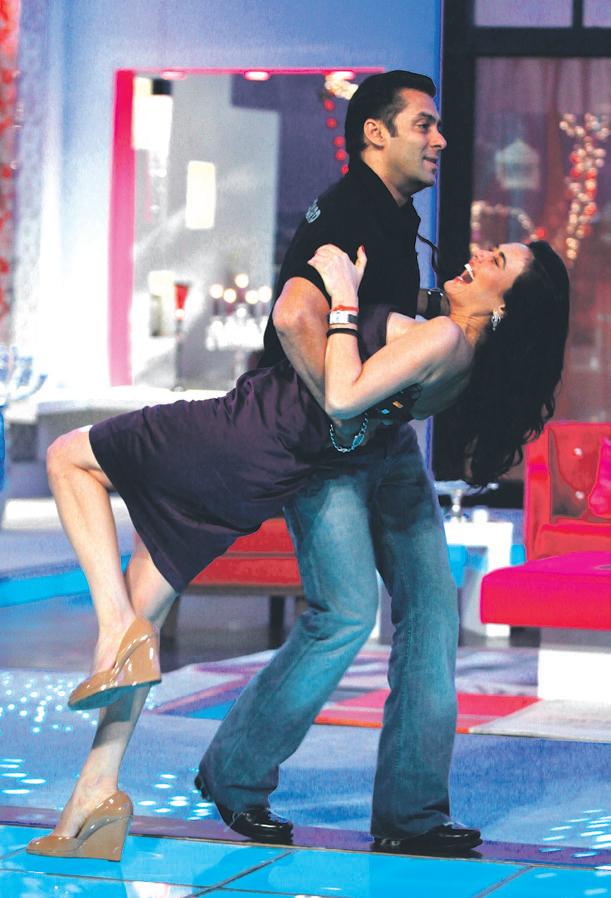
Bollywood biggies give Paris a miss
“Namaste India!” said socialite Paris Hilton as she launched her exclusive handbag collection in Mumbai late September, on her first visit to the country. Her line of bags, launched in association with Brand Concepts Pvt Ltd, will be available at two stores in Mumbai, priced between Rs.2,000 and Rs.11,000.
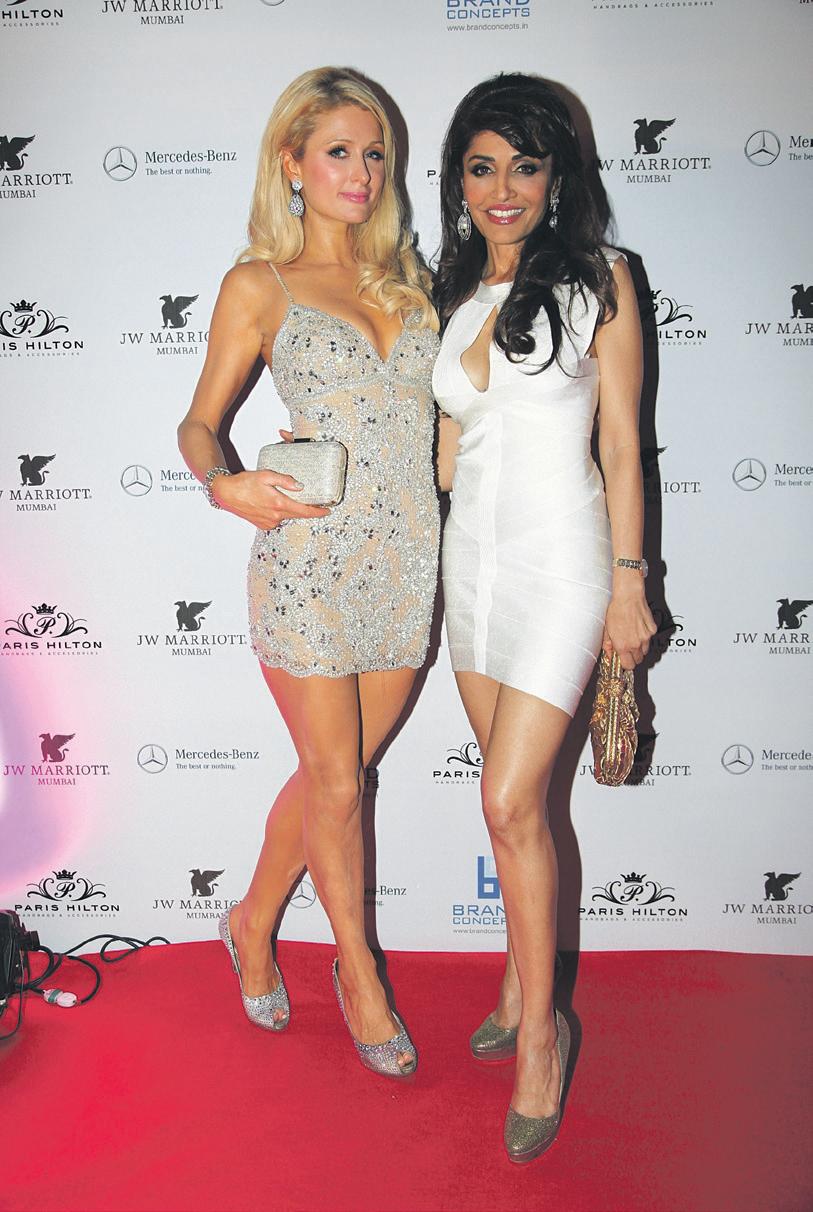
But Bollywood largely gave her entire visit a miss, with SRK denying rumours before she arrived that he was hosting a major do for her. As it turned out, Bombay socialite Queenie Dhody did the honours, but could only enlist a small set of B-grade ‘celebrities’ to attend. Of course Paris left the country tweeting about the ‘magical’ and ‘spiritual’ land that has changed her life, and that she would be back to experience the love again – and also that she wanted to, like, do more charitable work for the absolute poverty she got to see on the streets there.

John’s
back in the news
Looks like finally John’s back in the news for something other than exflame Bipasha. With his new movie Force, John is returning to the action genre after years. For the role he modelled his body on Hollywood actor Sylvester Stallone.
“After Dhoom people expected me to do action,” said John who took a break from the genre. “There is a time and place for everything and I think I’m more mature as an actor now. Even bodily I’m far more fit; I’ve understood my body better now”.
“For this film, I was very clear that I don’t want to do cable action. I wanted to do real, raw action, something that Sylvester Stallone did in Rocky. So I wanted to do that level of action and I wanted to look like him. That’s what I concentrated on,” added the actor “. “The important
thing was that I needed to look the part of the cop I’m playing in Force. The director Nishikanth briefed me saying, ‘I want you to look like Stallone with a body that looks like a machine.’”
And it was not easy - the actor had to work overtime and extremely hard to attain a physique that suited the character.
“For Aashayein I lost 16 kg and for Force I put on 12 kg. I worked really hard for eight months, three hours a day every day. There is no short cut to a body like this,” he said.
John, who made waves with his roles in films like Dhoom, Dostana and New York, could not manage a hit in his last three releases - Aashayein, Jhoota Hi Sahi
7 Khoon Maaf.
Let’s hope Force finally makes him a force to reckon with.
Himesh soldiers on Talk of self confidence. Himesh Reshammiya is pushing on, trying out every facet in India’s entertainment industry, despite what critics as well as audiences think of him. In his next movie Damadamm!, he is giving comedy a shot. “People perceive me as a very serious person, which I am not in real life. I have a good sense of humour, which will be visible in this film,” Himesh said recently.
The actor is also looking forward to break acting and musical grounds internationally with his English film A* Is Killed. The film, directed by Chrisophe Lenoir, is set for a December release and features Himesh as a musician.
His other international project, the music album Da Edge, will release this month in 122 countries under his own banner HR Music, in collaboration with Universal music.
“My album has 15 songs and the first single is I have been waiting for you so long. It has been remixed by Edward Maya, the famous trance DJ. Roman White, who directs videos for Justin Bieber, is the video director,” he said.
For now, Himesh, who did a live digital concert for his fans on artistaloud.com recently, is waiting for the release of Damadamm!.
“It’s a Diwali release and though it is releasing amid huge competition like RA.One, I’m very confident that it will make a mark. I’m confident about it as a product and as a storyline because I know that the central character Sameer, played by me, will instantly connect with the audience. It’s a very real character and it’s a fun-loving romantic film,” he added.
The film, directed by Swapna Waghmare, also stars Sonal Sehgal and Purbi Joshi in lead roles. The actor admits he is under pressure to prove his acting mettle after three box-office and Kajraare.
What’s the chitchat here between Preity and Salman?
Send in your responses to info@indianlink.com.au and win a surprise prize
Last issue Caption Contest winning entry
What’s Abhishek Bachchan saying to make Sameera Reddy laugh?
Hema: This is the last time I’m bailing you out, princess. If Tell Me O Khuda doesn’t do it for you, go find something else to do with your life.
Pankaj wins a double pass to new Hindi film Force


QUIZZ
1. Naseeruddin Shah played what character in Hollywood film The League of Extraordinary Gentlemen?
2. Which actor was known as the ‘Jumping Jack’?
3. What was Salman Khan’s name in Dabaang?
4. Who sang, and in which film, Mera haton meh nau nau churiya hain?
5. What was the first Bollywood talkies film or first film with vocal sound?
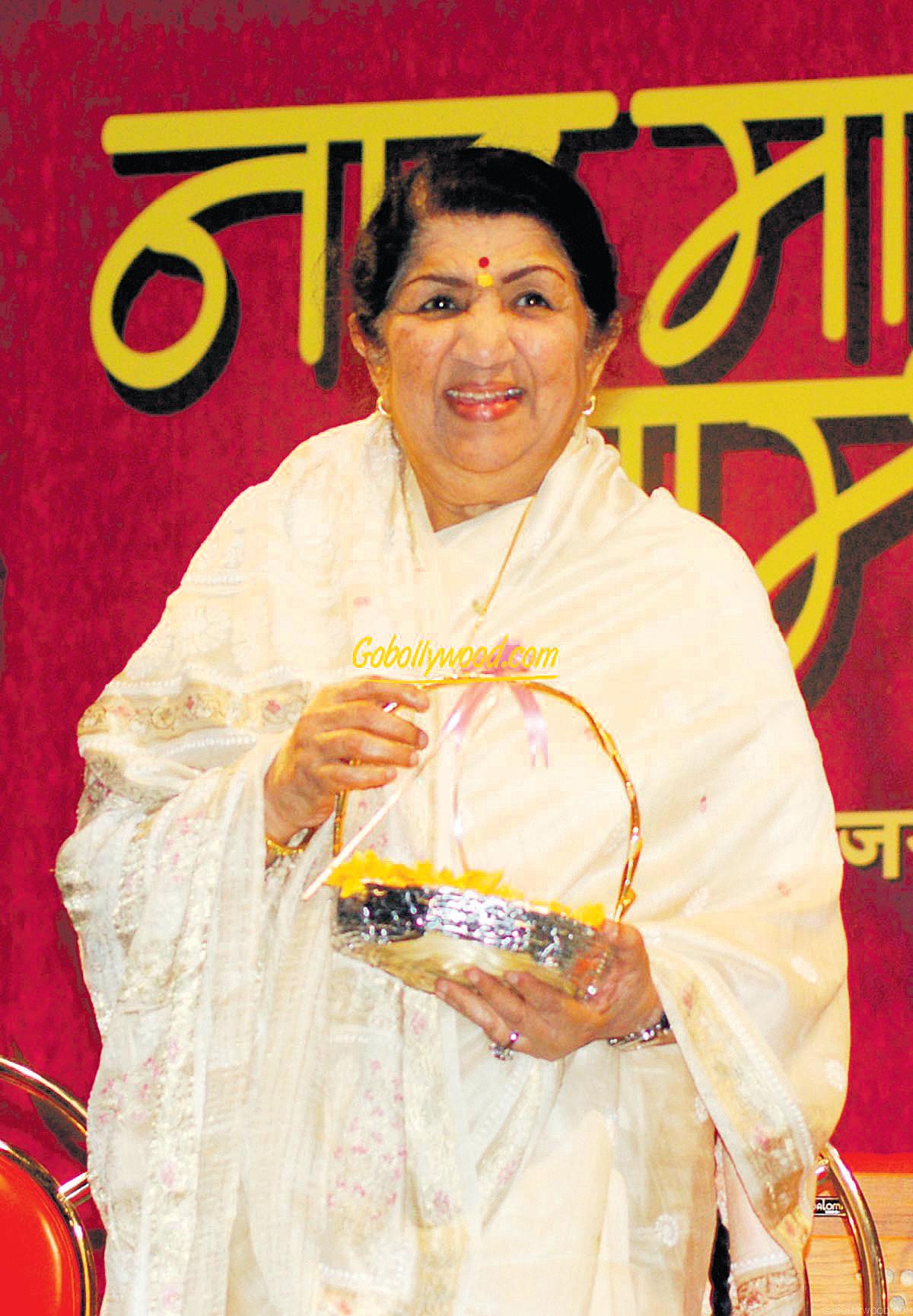
OCTOBER 2011 <> 49 INDIAN LINK
CAPTION CONTEST sonKapoor’sShammiKapoor,RajAdityaWHO?GUESStoAnswer Answers to QUIZZ:
1. Captain Nemo 2. Jeetendra 3. Chulbu Pandey 4. Sridevi in Chandani 5. Alam Ara
LATA
JOHN ABRAHAM
Pankaj Chadha Box Hill, Melbourne
PARS HILTON WITH MUMBAI SOCIALITE QUEENIE DHODY
www.indianlink.com.au
DEV ANAND
Cine Talk
Film: Mausam
Cast: Shahid Kapoor, Sonam Kapoor, Supriya Pathak, Anupam Kher and Aditi Sharma
Writer-Director: Pankaj Kapoor
There is an absolutely devastating moment of pure drama in this eagerlyawaited far-from-disappointing romance where Shahid Kapoor, playing one of the most deliciously challenging roles of his career, espies from a train the lost love of his life, Sonam Kapoor, standing forlorn in the snow with luggage, like Meryl Streep in The French Lieutenant’s Woman or Manisha Koirala in Dil Se, waiting for god knows what! The next train? Love? Death? Or the next life?
It’s a moment that defines Mausam, a film that has some serious flaws, but finally holds together as a work of renaissance art, more remarkable, in parts outstanding, for what it attempts rather than what it finally achieves.
Pankaj Kapoor takes the MuslimHindu love story between a Kashmiri refugee girl and a Punjabi boy through an arching sweep of history. Every historical trauma that has defined and defiled India and Indians in the last 30 years props up as a vital image to underline the love story.
And what Mausam finally says is, love becomes impossible in a civilization that chooses to define itself by violence
Film:SahibBiwiAurGangster

Cast: Mahie Gill, Randeep
Hooda, Jimmy Sheirgill
Director: Tigmashu Dhulia
Absolute power corrupts absolutely. And the power to create cinema that takes the prevalent language of narration into the domain of the dark and unpredictable is a privilege belonging to some politically savvy filmmakers.
Sudhir Mishra tops the list. Tigmanshu
Dhulia follows close behind.
The manner in which Dhulia brings into play the murky, sleazy politics of Uttar Pradesh is remarkable for the fusion of lies and truth with the borderline between the two extremes simply blurring.
Sahib Biwi Aur Gangster is an audacious tongue-in-cheek homage to Guru Dutt’s timeless classic Sahib Bibi Aur Ghulam. Don’t believe the director’s protestations to the contrary. Dhulia’s film even opens with an unabashed tribute to Guru Dutt’s film with skeletons being dug out during an excavation.
rather than peace. Gandhi? He could be just a spectre that never existed in a world where two young people cannot come together in a clasp of love for the fear of falling into a terror trap.
We have award-worthy performances in Mausam by the hero who happens to be the director’s son. But that is just a karmic coincidence, like much of what transpires between the lovers in Mausam.
The film goes from one phase in the couple’s life to another, not quite smoothly, but not strenuously either. The transitions in their estrangement are mapped out in some finelywritten scenes where the couple’s smothered affections for one another are manifested in moments of sublime beauty.
The ever-brilliant cinematographer Binod Pradhan captures the couple against breathtaking backdrops in rural Punjab and Scotland.
Mausam is one of the best-looking films in recent times. The transitions in time and topography are brought about with a fair degree of inner conviction and outer resplendence.
The synthesis of the lovers’ inner and outer world is not always stress-free. The couple’s inability to come together through various tragic and traumatic historical conflicts is depicted in scenes that range from the rivetting to the mundane.
Visually, the film is a feast.
The film’s strong sense of purpose and its love-defining affiliation to socio-cultural incidents leave little space for the incidental characters (of
Shahid Kapoor stands tall A homage to Guru Dutt?
There onwards there are plenty of skeletons tumbling out of secret places in the zamindar’s (Jimmy Sheirgill) bedroom and other workplaces, all leading to a series of climaxes, many of them aggressively sexual in nature.
Dhulia deconstructs and demystifies Meena Kumari’s alcohol-laden mysterious Choti Bahu from Sahib Bibi Aur Ghulam. As played by Mahie Gill in Dhulia’s new-age deconstructed version of the old film, the wife is a full-blooded, sexually dissatisfied, curious and predatory creature somewhat annoying in her insistence on going against the rules of her husband’s crumbling haveli.
Scenes showing the wife’s rebellious streak are awkwardly constructed.
It is no coincidence that the intruder in Dhulia’s film is a libidinous overambitious driver whose hunger for sex and power drives him to selfdestruction. As played by Randeep Hooda, he is quite the opposite of the gentle shy besotted little creature that the Choti Bahu befriended in Guru Dutt’s film.
Sahib Biwi Aur Gangster creates a world far removed from Guru Dutt’s classic, and yet the two works are miraculously joined at the hip. Almost
whom there are many) to grow in the plot. That, in a way, is the need of the plot. But you do crave to see more of the lives around the couple and how these lives and the relationships qualify the love story at the film’s centre. You want to see the long-lasting friendship between Aayaat’s Muslim father (Kamalnain Chopra) and the Kashmir Pundit (Anupam Kher).
And there is plenty of quality of that sublime stillness in the storytelling - the film’s extraneous correctness hides much of the film’s intrinsic inconsistencies. Then there is Shahid, standing tall with a performance that puts him right up there among the finest contemporary actors.
Shahid takes us through the film’s and his character’s romantic odyssey, inconsistencies and all. Forget Tom Cruise. In the Air Force uniform he reminds us of Rajesh Khanna in Aradhana. And that’s the highest compliment any contemporary star can be paid.
The director tries hard to merge Sonam in the resplendent ambience. Her performance has enchanting echoes of Kareena Kapoor in Refugee. The camera gives her no room to complain. But in the intensely romantic moments, she looks lost rather than lovelorn.
It’s the other girl, the spirited Punjabi kudi Rajjo, in Shahid’s life played by Aditi Sharma, who fills up the small space provided to her character.
Mausam is about the thwarted love between Harry and Aayaat. When they finally meet during the Gujarat riots,

every character from the Guru Dutt film is replicated if not parodied in Dhulia’s film. There is even Deepal Shaw playing a modern day version of Waheeda Rehan’s Jabaa from Sahib Bibi Aur Ghulam. Waheedaji’s reaction to her new-age avatar is awaited.
Sex and politics fuse into the fading crumbling feudal world of Dhulia’s cinema, creating a potent mix of passion and politics. As the goon, who dares to enter his benefactor’s wife’s bedroom and dreams of taking his place, Randeep Hooda has the best lines and graph for his character. Here’s an actor who is yet to get his due.
Mahie Gill plays the desolate wife with an absolute absence of enigma. Meena Kumari didn’t quite know what she was searching for. This woman knows exactly what she wants and finally gets it through the nozzle of the gun.
Jimmy Shergill has over the years evolved as an actor of subtle skills. As the embittered husband and doddering landlord he brings to the storyboard a kind of gentle persuasiveness that goes beyond the narration. His scenes with his father’s mistress are gems conveying wry disdain for a woman who controls the resources of a rapidly crumbling
they seem to discover not love but its aftermath, which is a far greater thing than love.
Where the film seems to lag behind is in creating emotional pockets for the couple’s mutual feelings to develop.
Shahid playing Harry the Punjabi wastrel turned Air Force officer and Sonam playing Aayaat the refugee from Kashmir, have several shared tender moments. The stand-out ones all come towards the second-half when loves grows impossible between the couple.
The climactic reconciliation during the Gujarat riots, enacted with supreme passion by Shahid, stands out for its stark dialogues that intercut between the couple’s long pent-up feeling of separation and the socio-political forces that have kept them from each other.
The climax on a ferris wheel appears a trifle manufactured.
Editor Sreekar Prasad’s smooth flow in the narration is suddenly stymied in the search for a jolting finale.
But you have to hand it to Pankaj Kapoor. In his directorial debut, he tells an old-fashioned story of love, separation and reunion with flourishes and flashes of great cinema igniting what would in lesser hands, appear to be a trite tale of love gone frightfully cliched.
And yes, Pritam’s music is apt. But the best tunes Abhi na jao chod kar and Ajeeb dastaan hain yeh, are not his. Subhash K.
feudal kingdom.
Dhulia is in the habit of bringing into play the political forces that determine human nature in Uttar Pradesh.
Saheb Biwi Aur Gangster turns progressively Shakespearean towards the end with three protagonists hurling towards self-destruction. As they delve toward doom you are left with no choice but to watch the characters as pathetic paradigms of an era that has long gone. The crumbling sepia-toned interiors and colour tones scream out a message of live and let live. But it’s too late, Dhulia’s characters are felled by their own greed and lust.
Guru Dutt would have probably choked at this badland bawdy burlesque of Sahib Bibi Aur Ghulam. Lekin maanna padega, boss. Tigmanshu Dhulia’s homage to Dutt is saucy if somewhat uneven in tone and jagged at the edges.
Subhash K. Jha
50 <> OCTOBER 2011 INDIAN LINK
Jha
ENTERTAINMENT
A cliché-loaded NRI tale
Film:SpeedySingh(Breakaway)
Starring: Vinay Virmani, Camilla Belle, Anupam Kher, Noureen deWulf, Russell Peters, Rob Lowe
Directedby:Robert Liberman
A star is almost born. Debutant Vinay Virmani has a natural charm and an easygoing bonhomie to his personality that goes a long way in furnishing speed to Speedy Singh Regrettably there are too many potholes and roadblocks in the narration leading to a kind of plot that doffs its heart at all the films on the spirit of sportsmanship and the parental opposition that it faces.
Though this is a story applicable to numerous second and thirdgeneration NRIs in Britain, US and Canada, the story is littered with clichés and stereotyped characters .…You know the loud boisterous Punjabi joint-family whose joints are so creaky you can hear the Bhangra beats groaning out all the way from Bollywood to Birmingham. Young Virmani tries to bring in a certain subtlety and lightness to his clichéburdened role. But the film doesn’t really hold together.
Bend It Like Anupam? Remember Anupam as the Sardar-father of the girl who would sneak off to play football when he wasn’t looking in Gurinder Chadha’s Bend It Like
Beckham?
What’s the difference between the Sardar Anupam played in that film. And the one he plays in Speedy Singh?
Go, figure.
And while you’re at it, do find out what Akshay Kumar is doing being associated with a film that seems like a not-so-distant cousin of Akshay’s Patiala House.
father disapproved of sonny-boy playing cricket in England. In Singh (no, that’s not a grammatical aberration) debutant Vinay Virmani’s father (Anupam Kher) frowns at his son’s ice-hockey ambitions.
The ice-hockey tournaments are filmed with more warmth and affection than the relationship between young Virmani and his pretty girlfriend (Camilla Belle). The
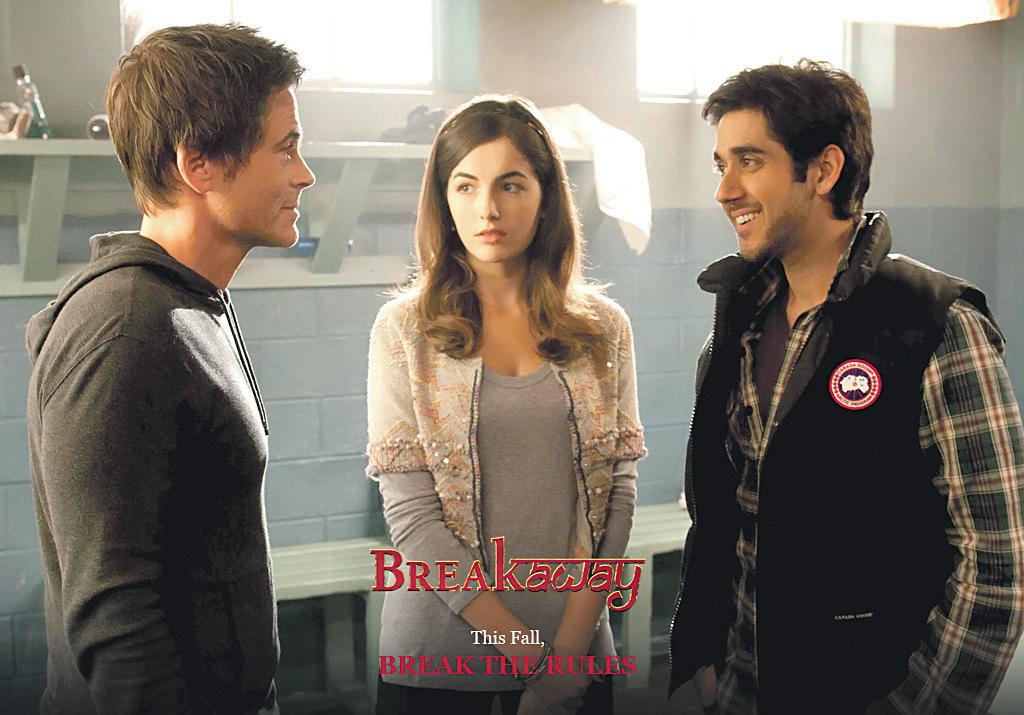
joint family. The Punjabi household is swamped with stereotypical colours, flavours, rhythms and characters. The clamour of Singhs gets unbearably deafening as the plot creaks forward in an all-too-familiar language. And we aren’t even talking about the
hero. As for the rest of the cast, stand-up comedian Russell Peters has been quoted as opining that Aishwarya Rai Bachchan can’t act. Has he looked at himself in this film?
Action speaks louder than words
Film: Force
Cast:John Abraham, Genelia D’Souza and Vidyut Jamwal Director: Nishikant Kamat
A raw rugged cop’s tale of vicious vendetta fused into a tender romance seems like a hard act to live up to. But Nishikant Kamat, seeking inspiration from a hit Tamil film Kaakha Kaakha manages just fine.
He gets incredible support from dialogue writer Ritesh Shah, who infuses every exchange on love (with the girl who won’t take no for an answer) and war (against drug peddlers) with a kind of lived-in warmth and familiarity.
Kamat, who earlier made Mumbai Meri Jaan on terrorism and the city of Mumbai, here has a blast bringing back the oldfashioned action hero. John Abraham has worked hard on his physique and his expressions too look like a cop who thinks falling in love would take him away from his line of duty.
Enter the vivacious effervescent girlnext-door. Genelia with her multiplicity of expressions aptly plays ‘Bubbly’ to this duty-bound ‘Bunty’ who would rather not get entangled in human foibles like love and family. But the inevitable happens.
Kamat lovingly weaves the love story between the impish girl and the gentle giant into the persistent call of duty, making sure the film’s claims to be an action film doesn’t get drowned in mush.
While the first hour is a loose bag of
striking shootouts staged in crowded localities of Mumbai and some highly dispensable romantic songs, it is the second hour where the narration really gathers momentum pitching the relentless cop against his chief adversary a drug dealer named Vishnu, played with arresting elan by debutant Vidyut Jamwal.

The man-to-man confrontations between Abraham and Jamwal have a rousing rugged resonance to them. They may make you squirm with their brutality. But the two look like well-matched opponents. Action director Allan Amin devises combats that convey a bone-crunching realism.
The two adversaries take care of the rest. John gives a finely pitched performance looking every inch like the action hero who can deliver that punch. He handles both the brutal and tender moments in the violence and romance, with ease.
Newcomer Vidyut Jamwal makes a formidable adversary. The menace is not only in the physique but the tone. This man means business. Some of the supporting cast is interesting too.
Force is a full-on action film with balls, brawn and brains. It’s the kind of virile cinema where action speaks louder than words. Blessedly the narrative secretes some fine dialogues and a tender love story that goes with the turbulent territory. Nishikant Kamat balances out the colour khaki with sharp colours of humour and romance.
Subhash K. Jha
OCTOBER 2011 <> 51 INDIAN LINK
Subhash K. Jha
www.indianlink.com.au
A digital Diwali
delight?
As the digital age advances, will the giving of gifts this festive season take on a more practical, yet sinister meaning?
wonder that IBM arrived at such a decision?
BY LP AYER
Not before long, laddoo packets may be dislodged by laptop computers as Diwali gifts for youngsters, since their prices are sliding down like the world’s stock markets. The catchy jingle, ‘Laptop for every kid’ has been used as an election sweetener by Julia as well as Jayalalitha, the recently recycled premier of Tamil Nadu, raising the hopes of the younger generation. From now on, will the laptop do the victory lap as the No 1 gift, leaving the laddoo to languish as a laggard? I doubt it!
We are now told ad nauseam that the carbon tax and computers will be the saviours of planet earth. It is too early to pass verdict on the former as it is going through its own taxing time in Parliament. But on computers, after an association of 25 years, my report card reads that they are a scourge. Before software supremos and hardware heavies harangue me, let me explain.
In the ‘60s when IBM, the then leader in the field, asked its marketing mandarins to explore the sales potential for personal computers, they concluded that there would be a demand for only four PCs in the entire world. Back then IBM’s mainframe units were the size of a wardrobe or even larger. How many in the world would have a need or desire to own such machines. In the early ‘70s it was my privilege, as Tata Steel’s PR, to take VIP visitors around Jamshedpur Telco’s works where their computer room was a mandatory showpiece. The room was larger than a lounge with its exclusive airconditioning system, enjoying a privilege more than the firm’s MD. So is it any
But within three decades, laptops lord over us and desktops dominate the office scene. In the BC (Before Computer) era, bosses used to dictate (literally at times) letters to lovely lady secretaries who were probably sneakily referred to as ‘laptops’ in boys’ circles, when no PC (political correctness) existed. Now those shorthand scribes have been short-changed by portable plastic gadgets doing everything the female fraternity did, except making tea.
Two of the main reasons for the mass migration of PCs into our living space are miniaturising the machine and maximising its applications beyond the basic business functions to infotainment. The black box is now a constant companion in our life journey.
As an early convert to computers, in 1982 I bought a Commodore (not the Holden kind) with a grand 64kb hard drive. Two years later, enticed like the proverbial Eve, I went for the bytes of an Apple 2c as it resembled a portable typewriter over which old journos lavished more love than on their partners. That was in the domestic scene.
In my office setting, Compaqs came in like confetti followed by a deluge of Dells in updated avatars with new beauty features. Now every new model is designed to handle enhanced software and in turn, each new software release demands more grunt. It is a never-ending merry-goround and the result is a mountain of disused computers sitting like orphans without an adoptee in sight. But they are not alone; they have a good company of associated accessories - monstrous monochrome monitors, pre-loved printers, MFCs etc. These plastic playthings proclaimed to save the planet, are produced from non-renewable hydro-carbons and are now a blight on our
landscape. If all the derelict desktops were decked on top of each other, they are expected to reach halfway to the moon.
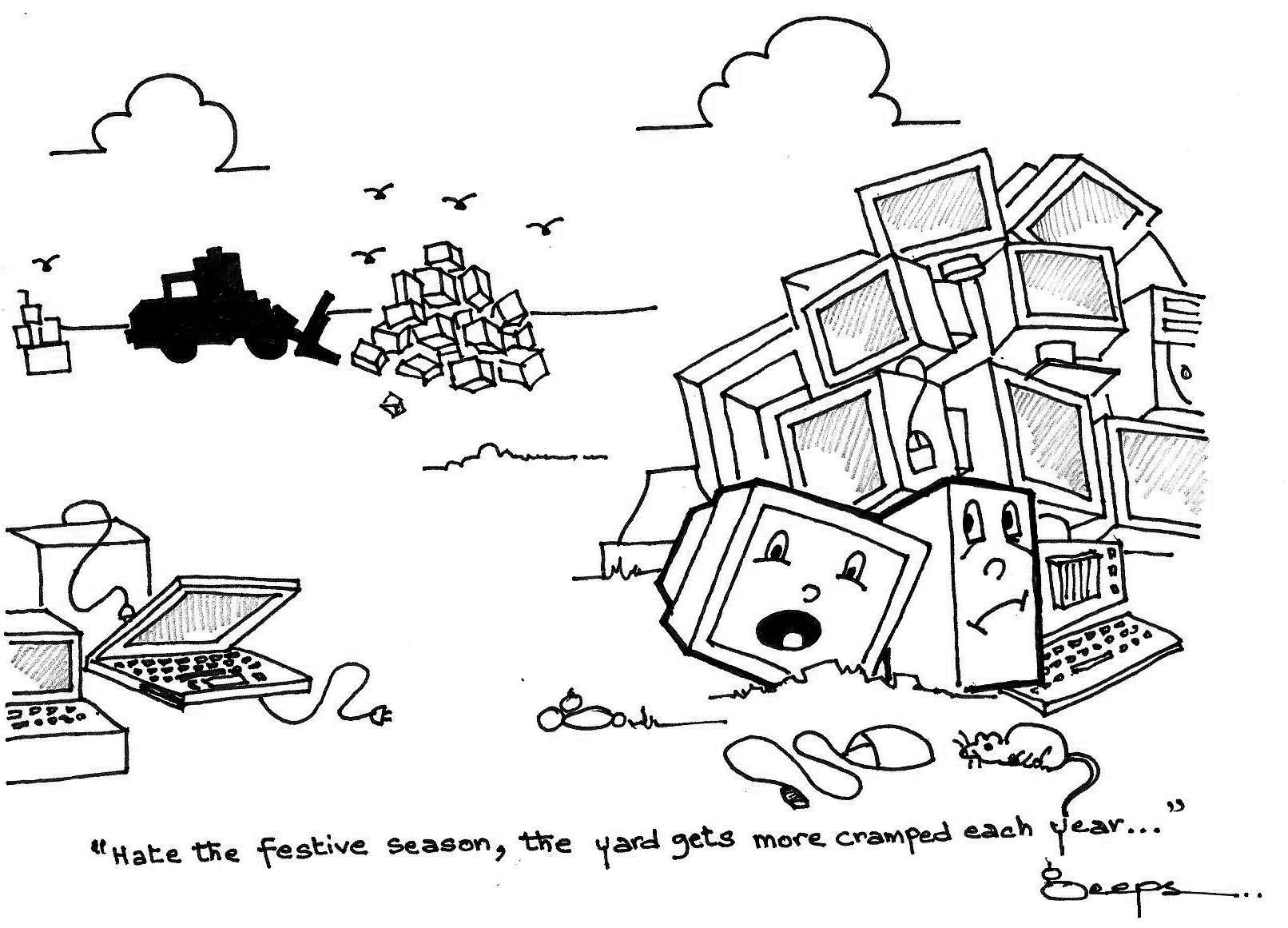
The humongous holes at Australian mine sites resulting from export of shiploads of ore to China may one day be filled in by container loads of PCs imported from PRC, on becoming obsolete. It is a win-win for Wen Jiabo who gets non-renewable resources and gets rid of plastic piles from PRC. Australia, according to an SBS programme, tranships e-waste to Ghana where they are burnt yielding bits of copper for scroungers and emitting columns of toxic smoke. A carbon tax conundrum?
Until sometime ago, as you drove along my city Adelaide’s suburbs you may have noticed on certain days, mini mountains of plastic junk sitting on the footpath outside many houses. They are the pre-loved PCs, abandoned like unwanted pets after impulsive
The catchy jingle, ‘Laptop for every kid’ has been used as an election sweetener by Julia as well as Jayalalitha, the recently recycled premier of Tamil Nadu, raising the hopes of the younger generation.
buying at Christmas, destined for the council dump. Now the councils have woken up and want your dollars to ditch them. In my own situation, nearly a dozen of them have sought asylum in one of our children’s bedrooms since the original occupant has left the coop. The soft-shoe brigade of hardware hawkers keep counselling that we need to upgrade every two years to be up to scratch. So we still keep buying. We have become a soft touch and stimulus package punch bag. At the current rate of acquisition and obsolescence, we may before long, need to surrender our bedroom too, to the computer conquest, and sleep outdoors. That is the harrowing part of hardware. The software story is even scarier. I will spare you of this until next time.
At the current rate of acquisition and obsolescence, we may before long, need to surrender our bedroom too, to the computer conquest, and sleep outdoors.

52 <> OCTOBER 2011 INDIAN LINK
BACKCHAT www.indianlink.com.au

OCTOBER 2011 <> 53 INDIAN LINK
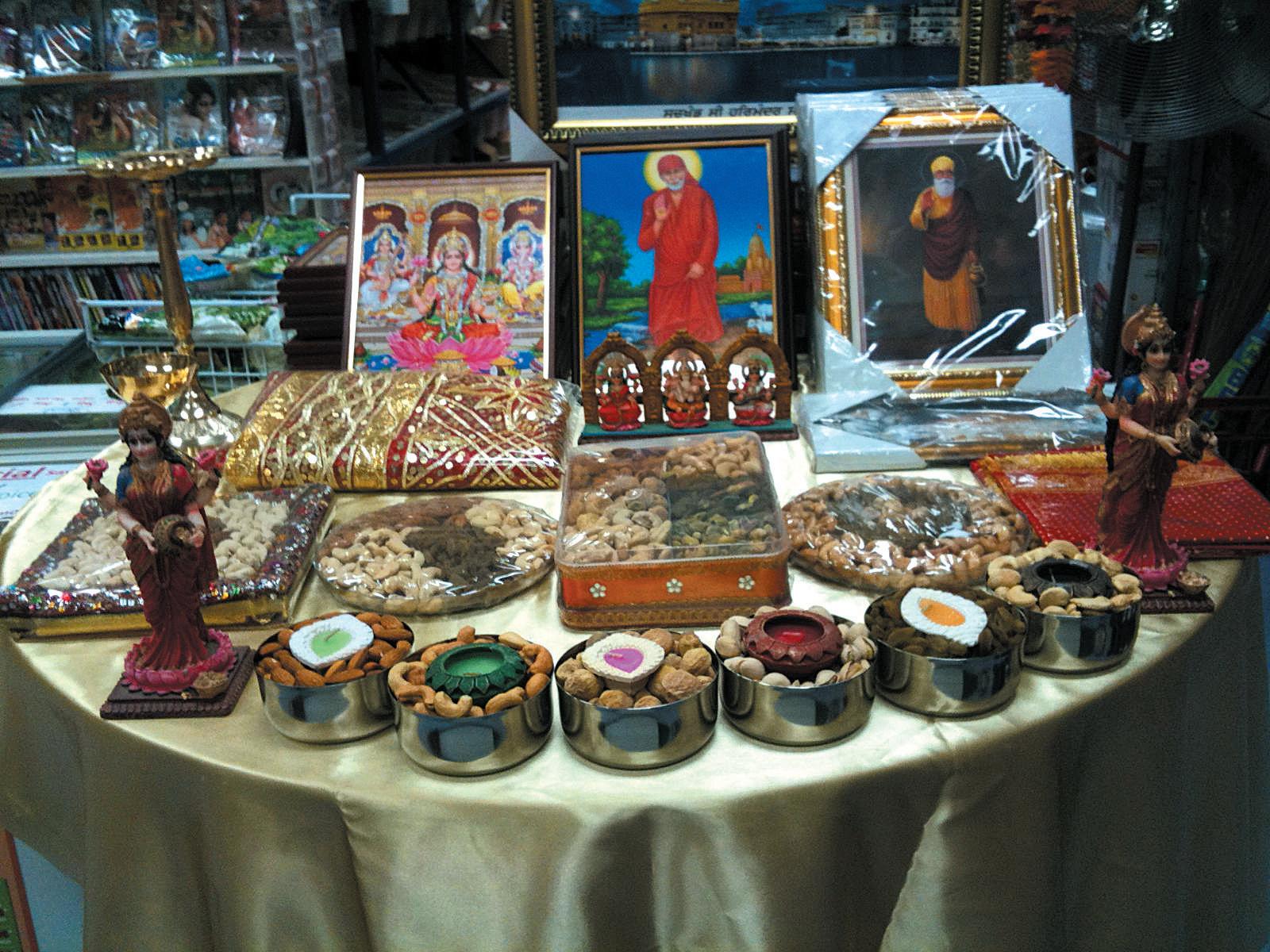




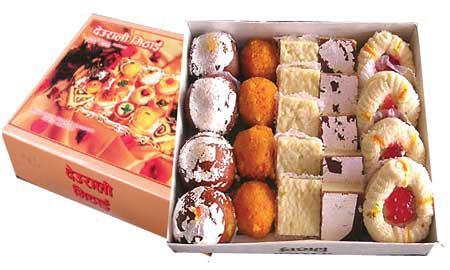
54 <> OCTOBER 2011 INDIAN LINK SPECIAL Price Hawkins 3 Litres classic for only $39.95 143 Stephen Street (cnr Sackville Street), BLACKTOWN www.indianspices.com.au ONE STOP SHOP FOR ALL YOUR NEEDS DRY FRUIT pre packed available. Wide variety of fresh sweets available

OCTOBER 2011 <> 55 INDIAN LINK

56 <> OCTOBER 2011 INDIAN LINK

























 BY SUJITH KRISHNAN
BY SUJITH KRISHNAN


































 BY FRANKEY GERARD FERNANDES
BY FRANKEY GERARD FERNANDES











 BY RITAM MITRA
BY RITAM MITRA











































 BY RANI JHALA
BY RANI JHALA






























